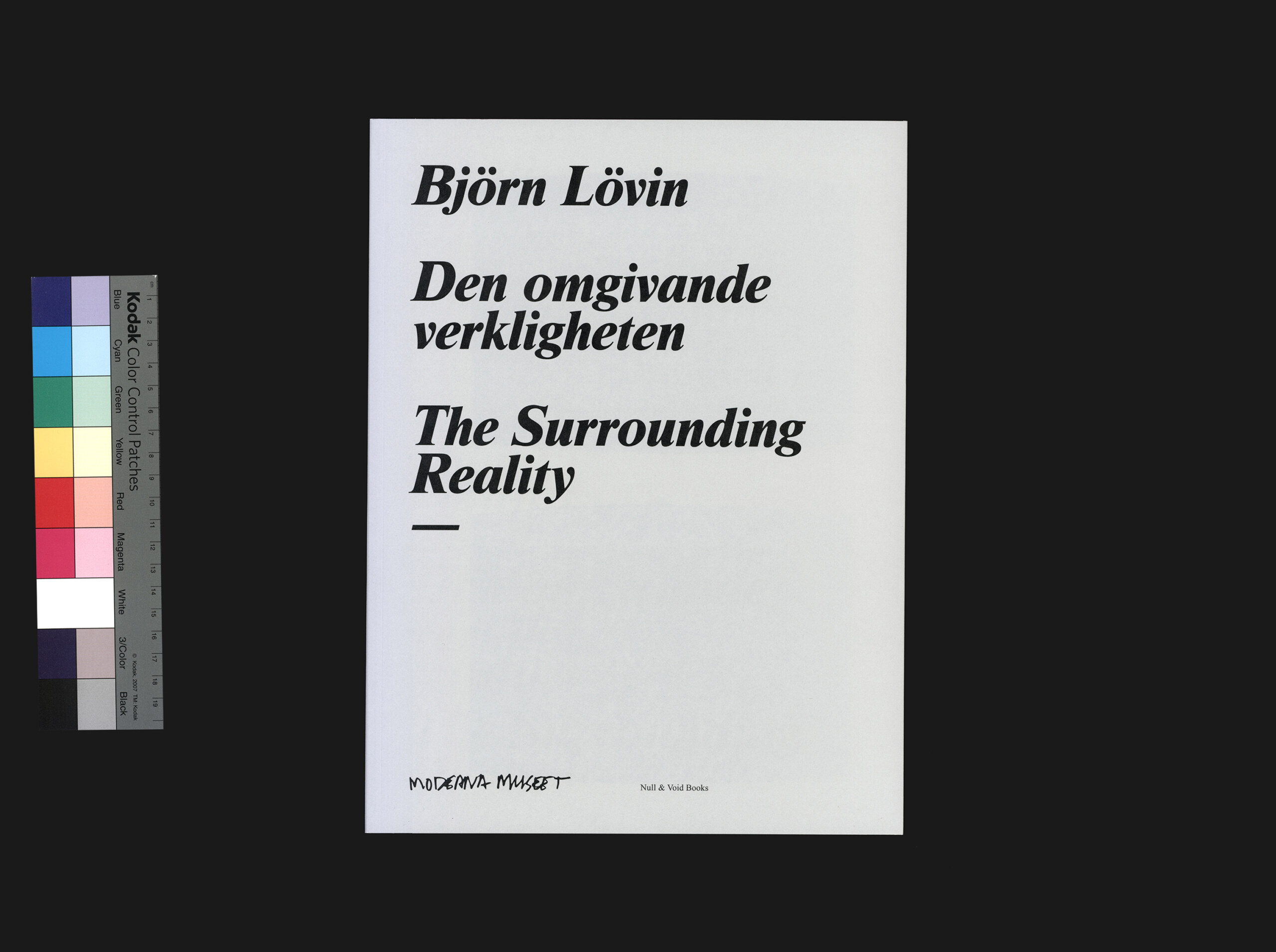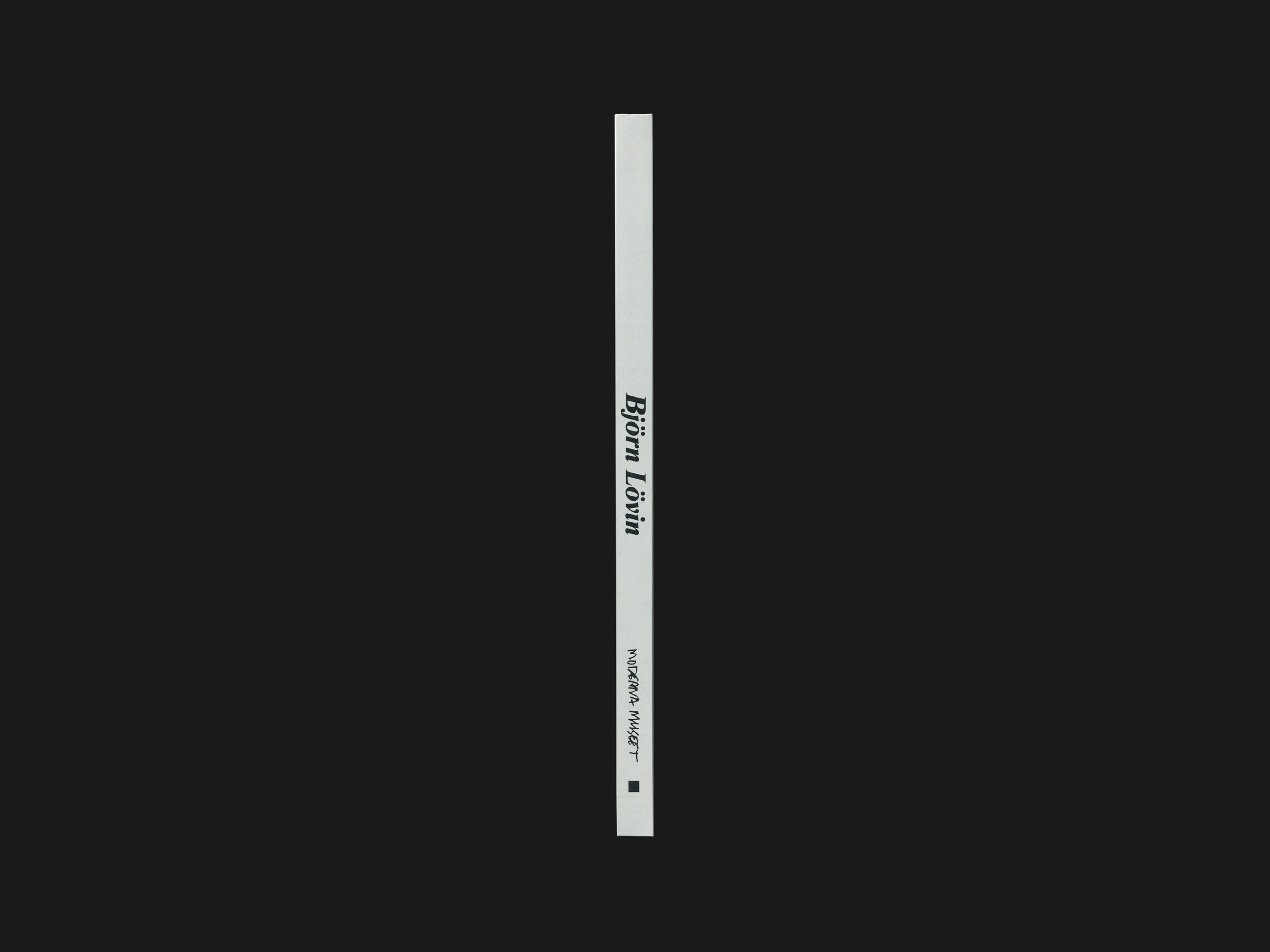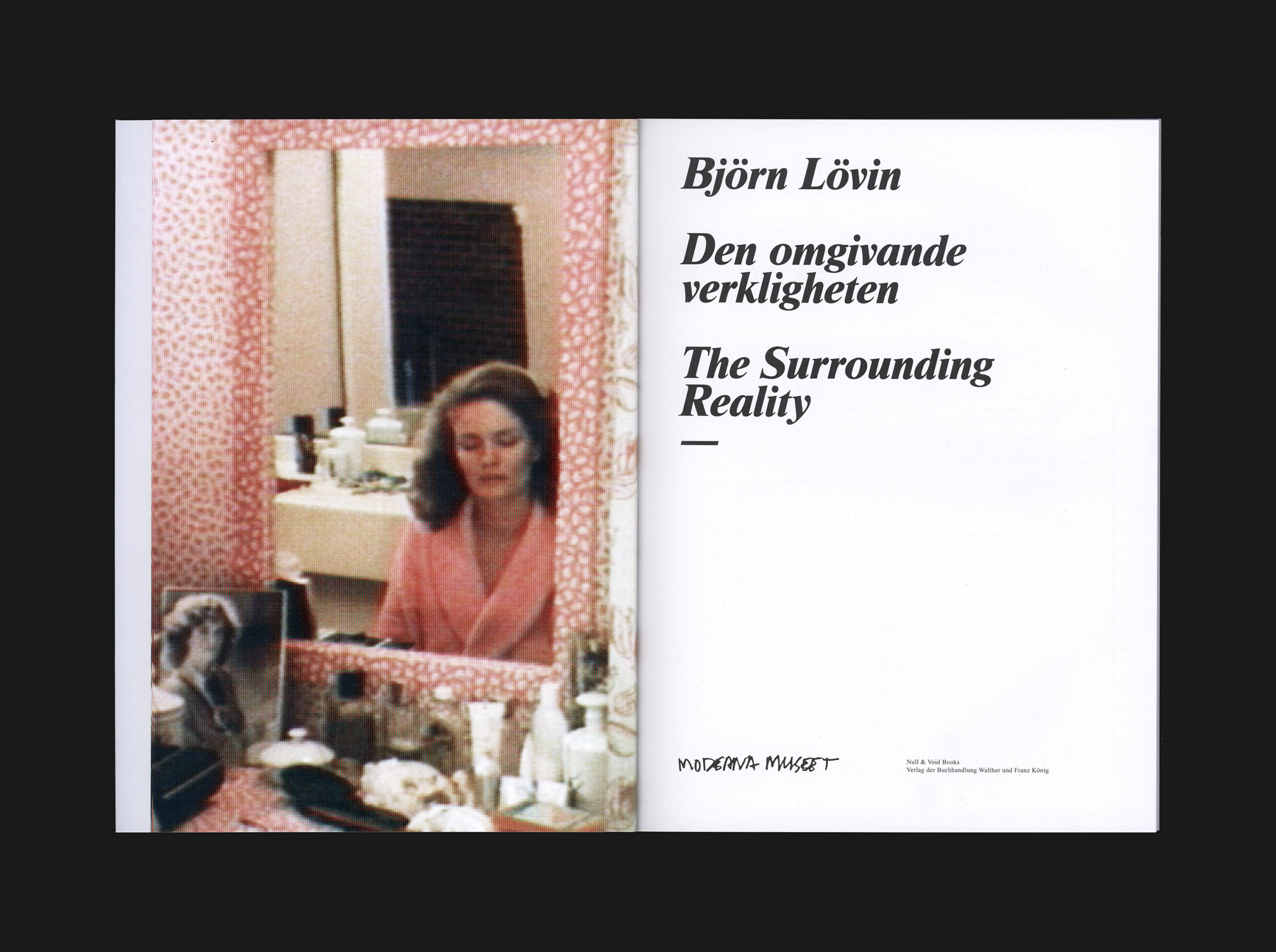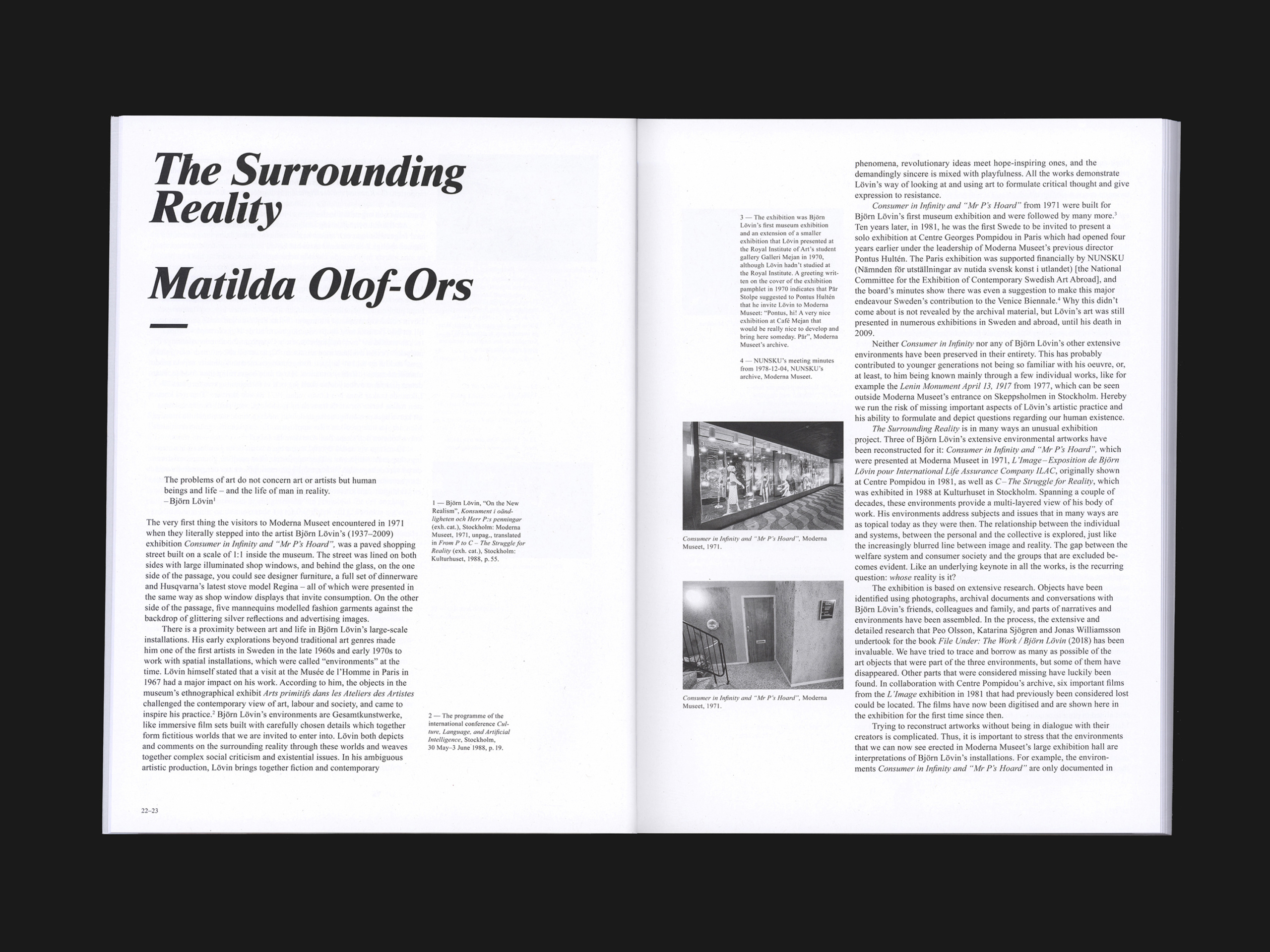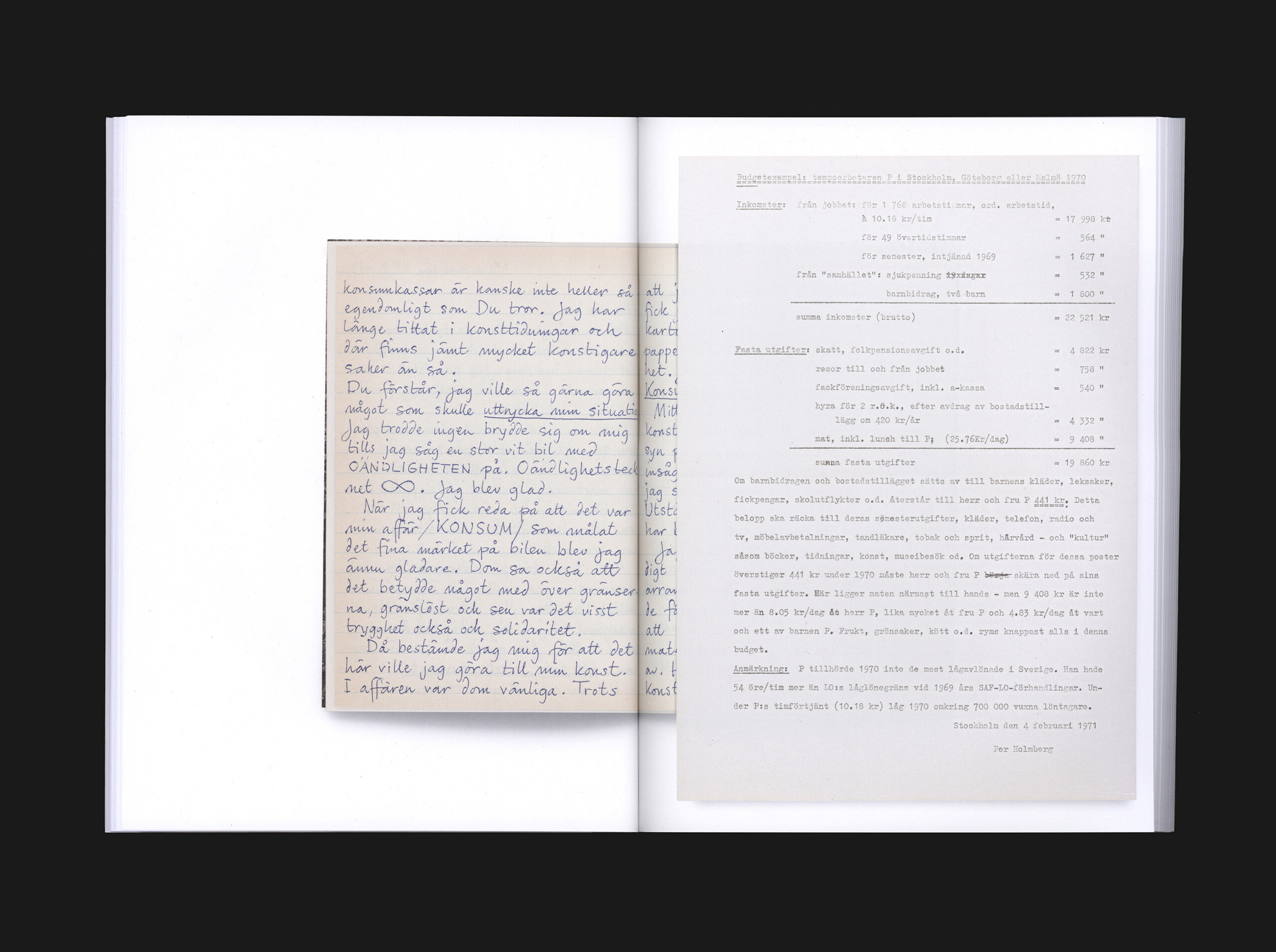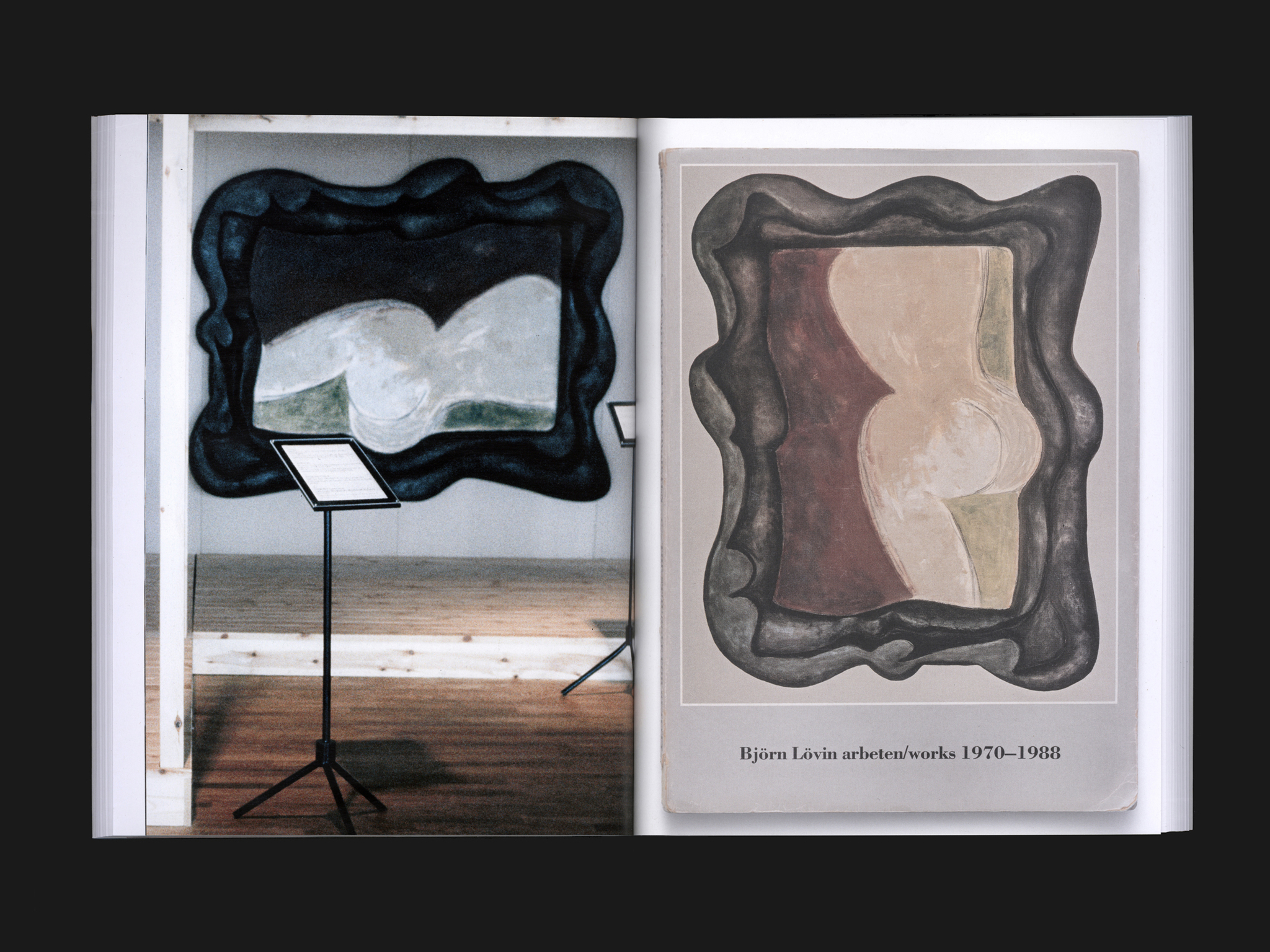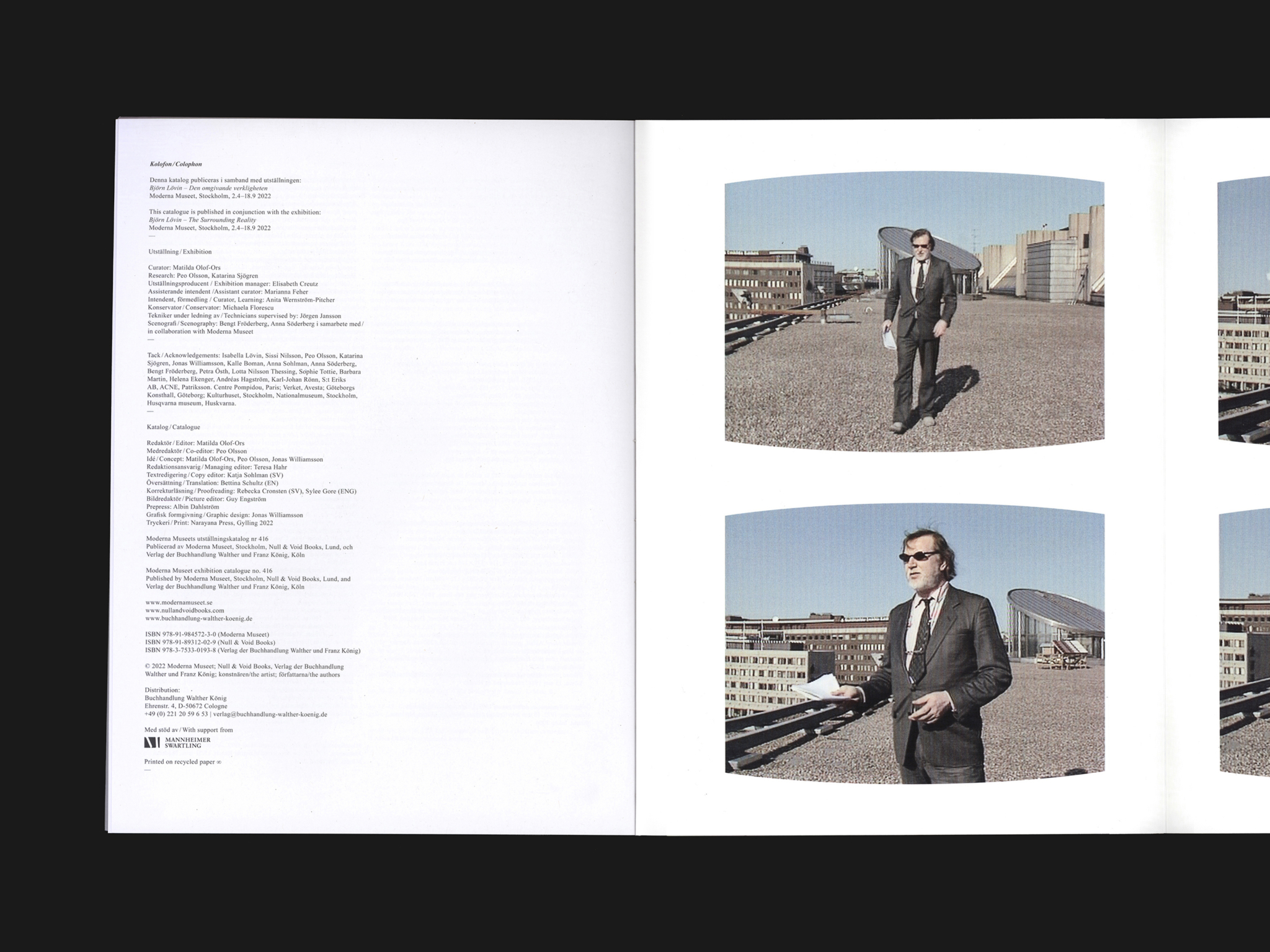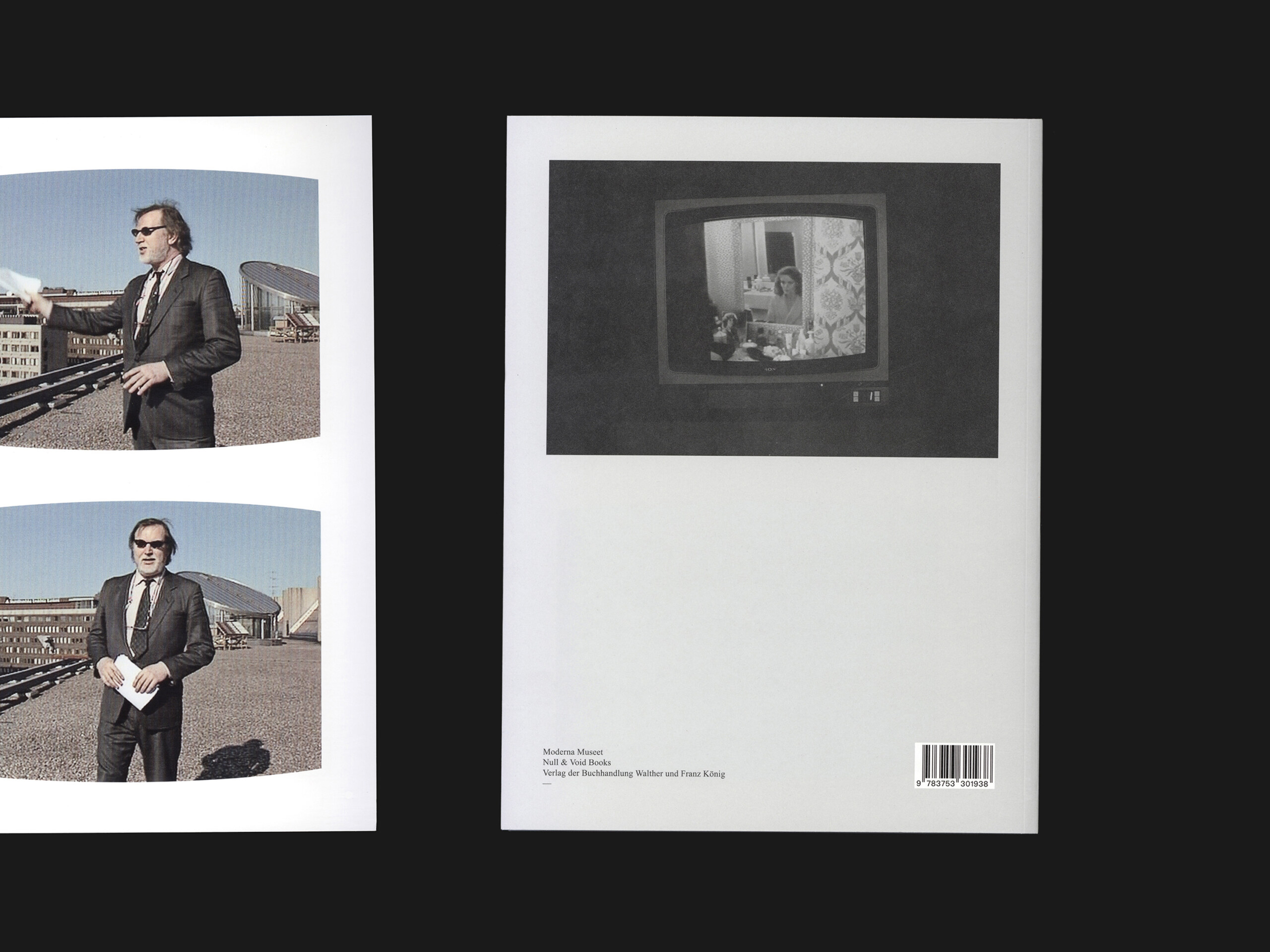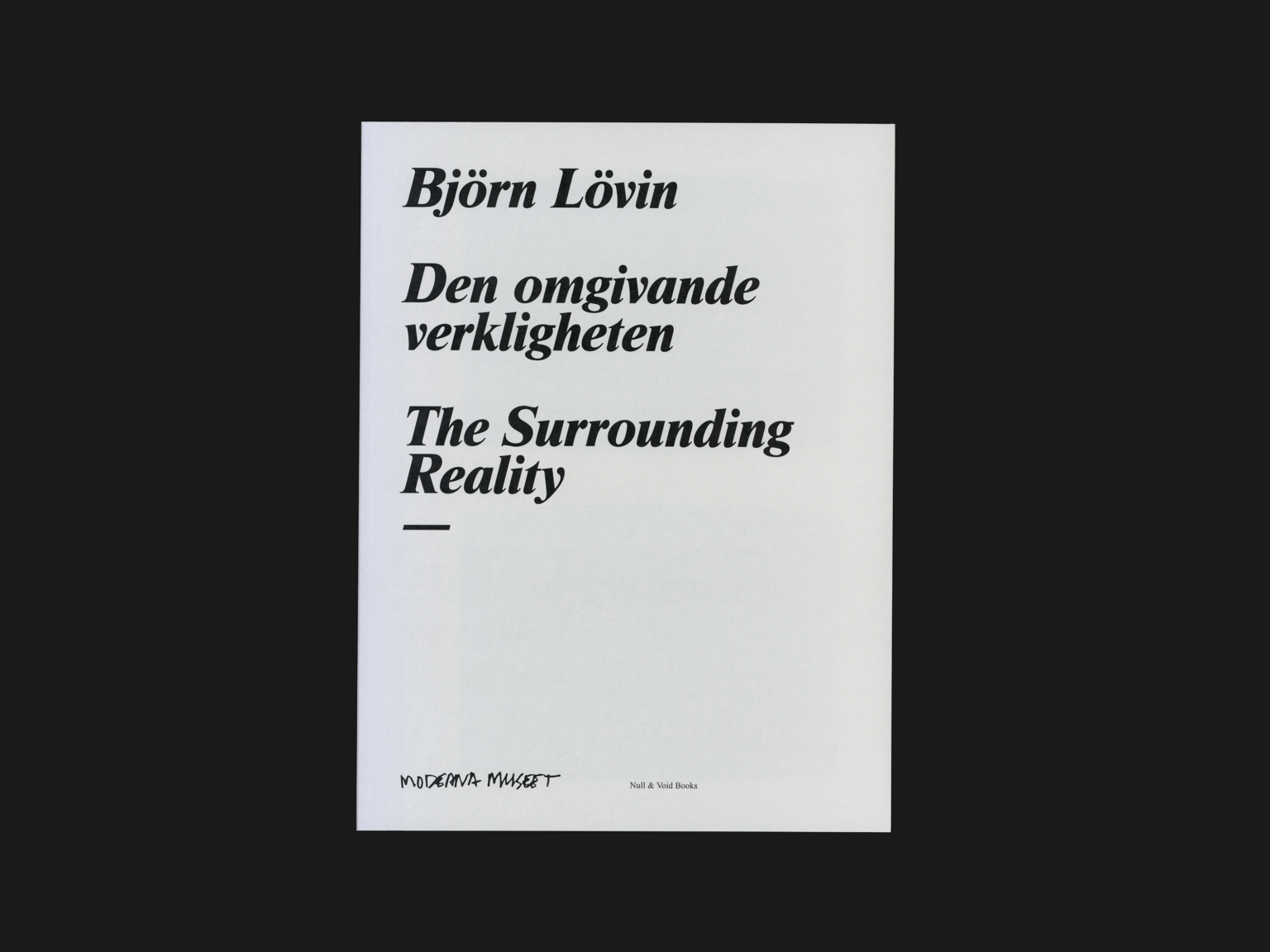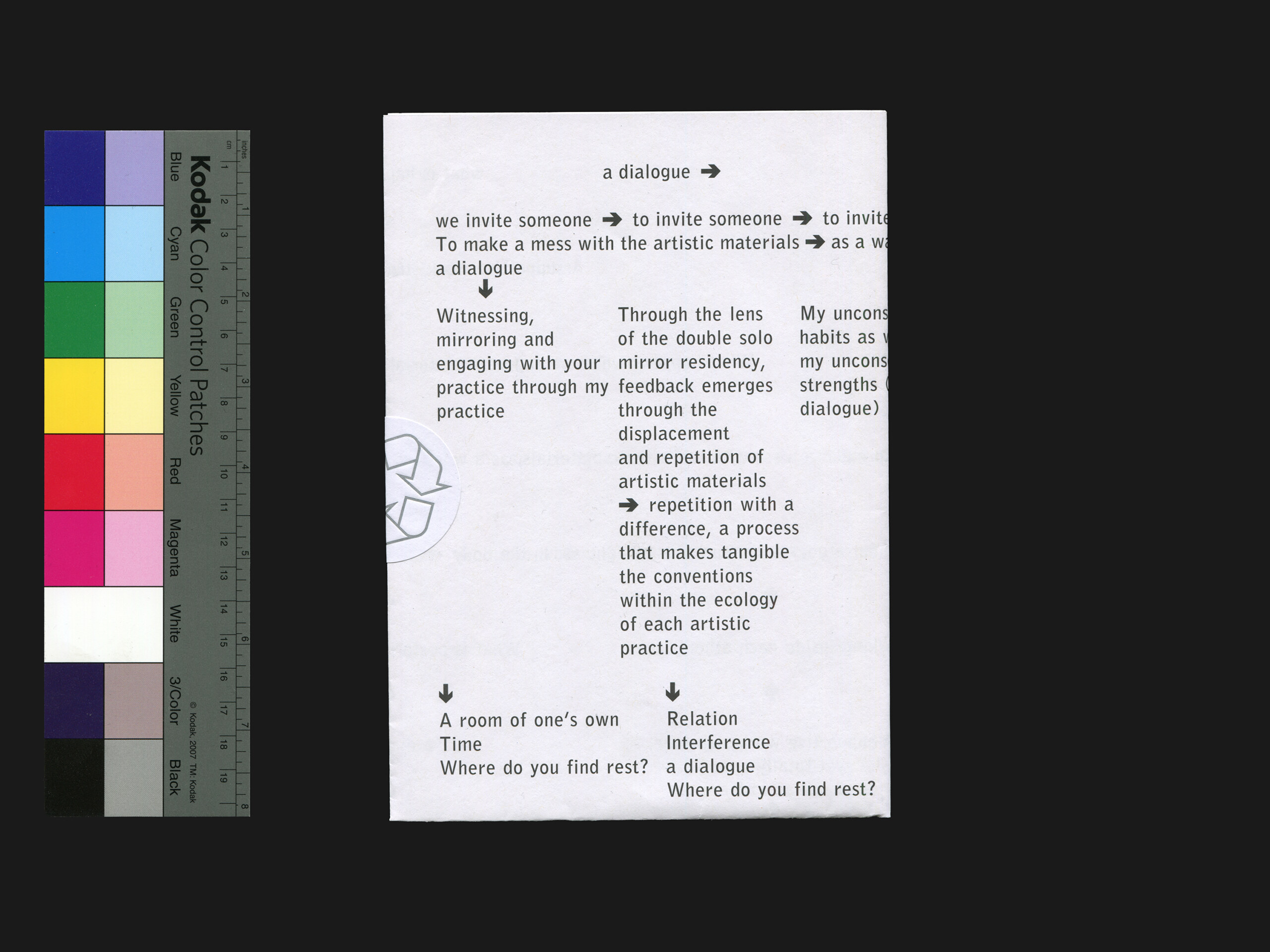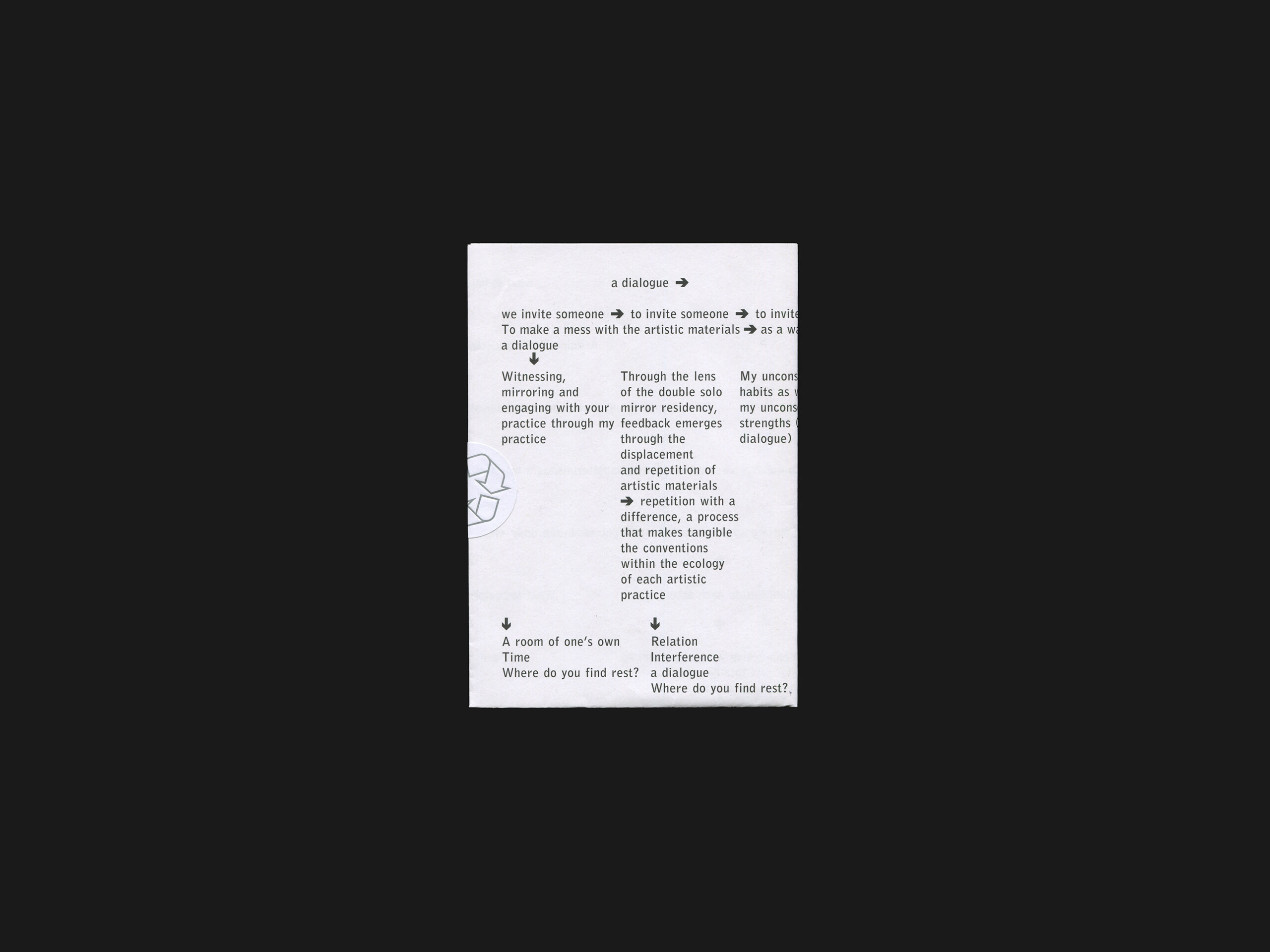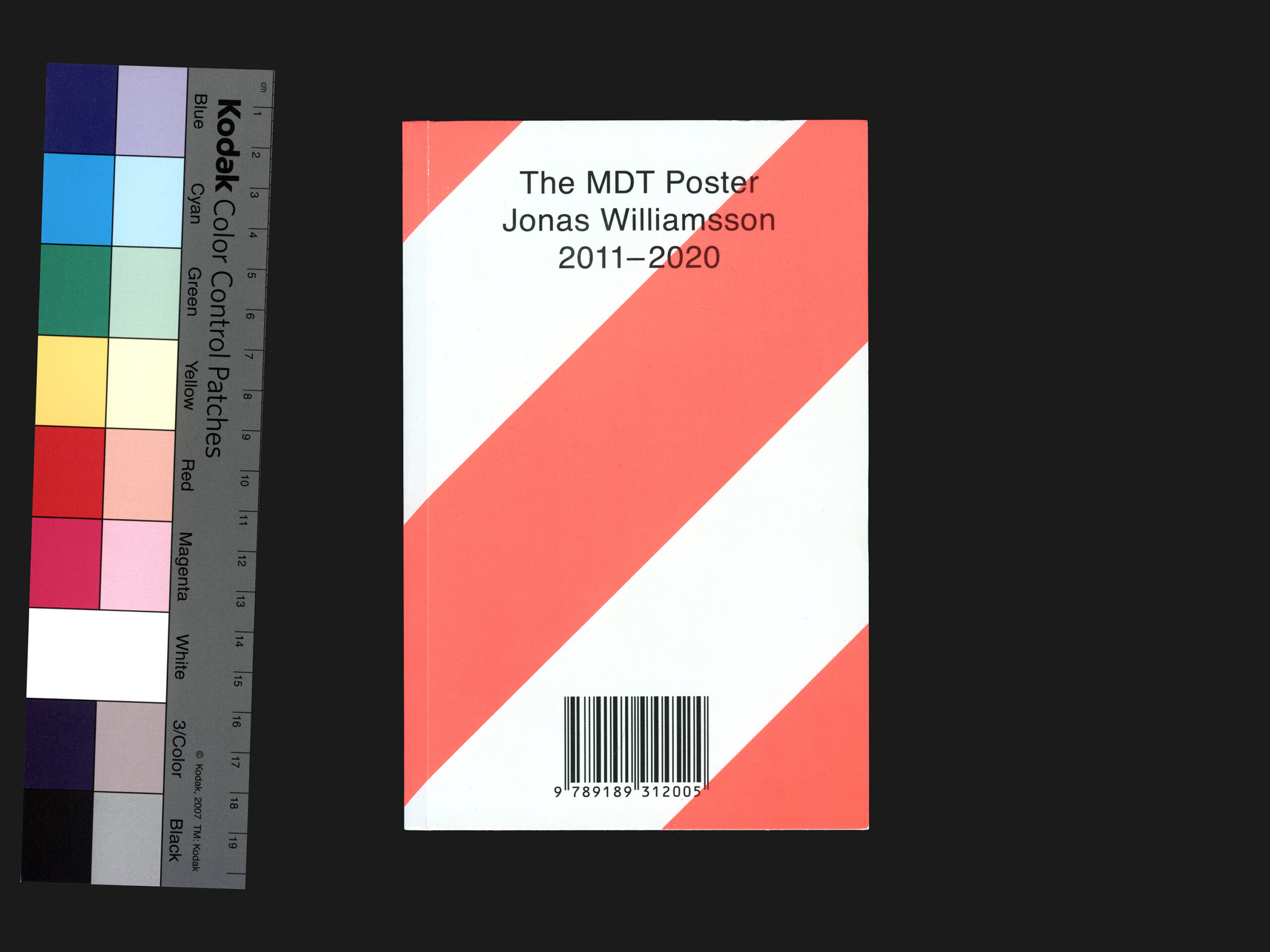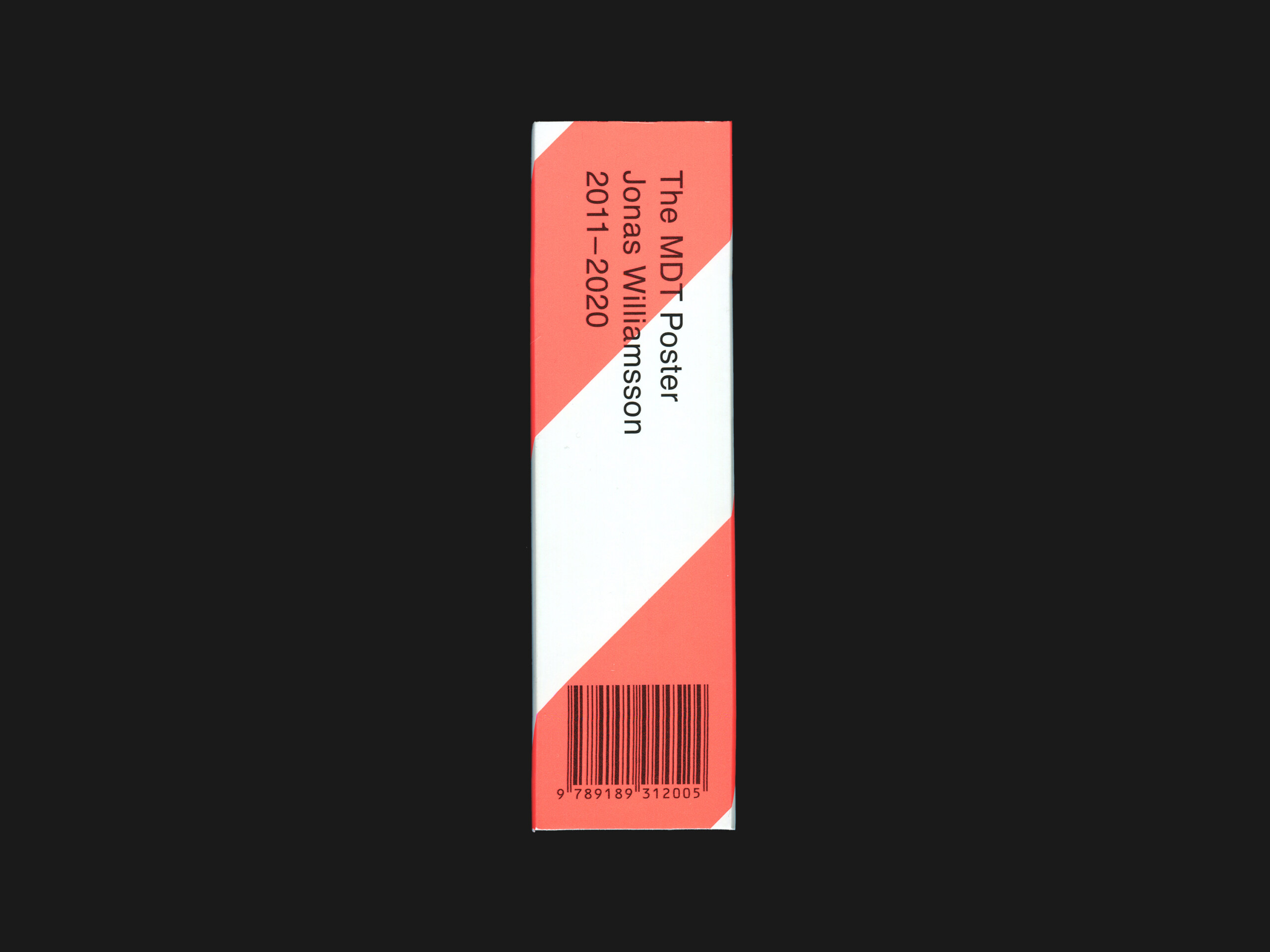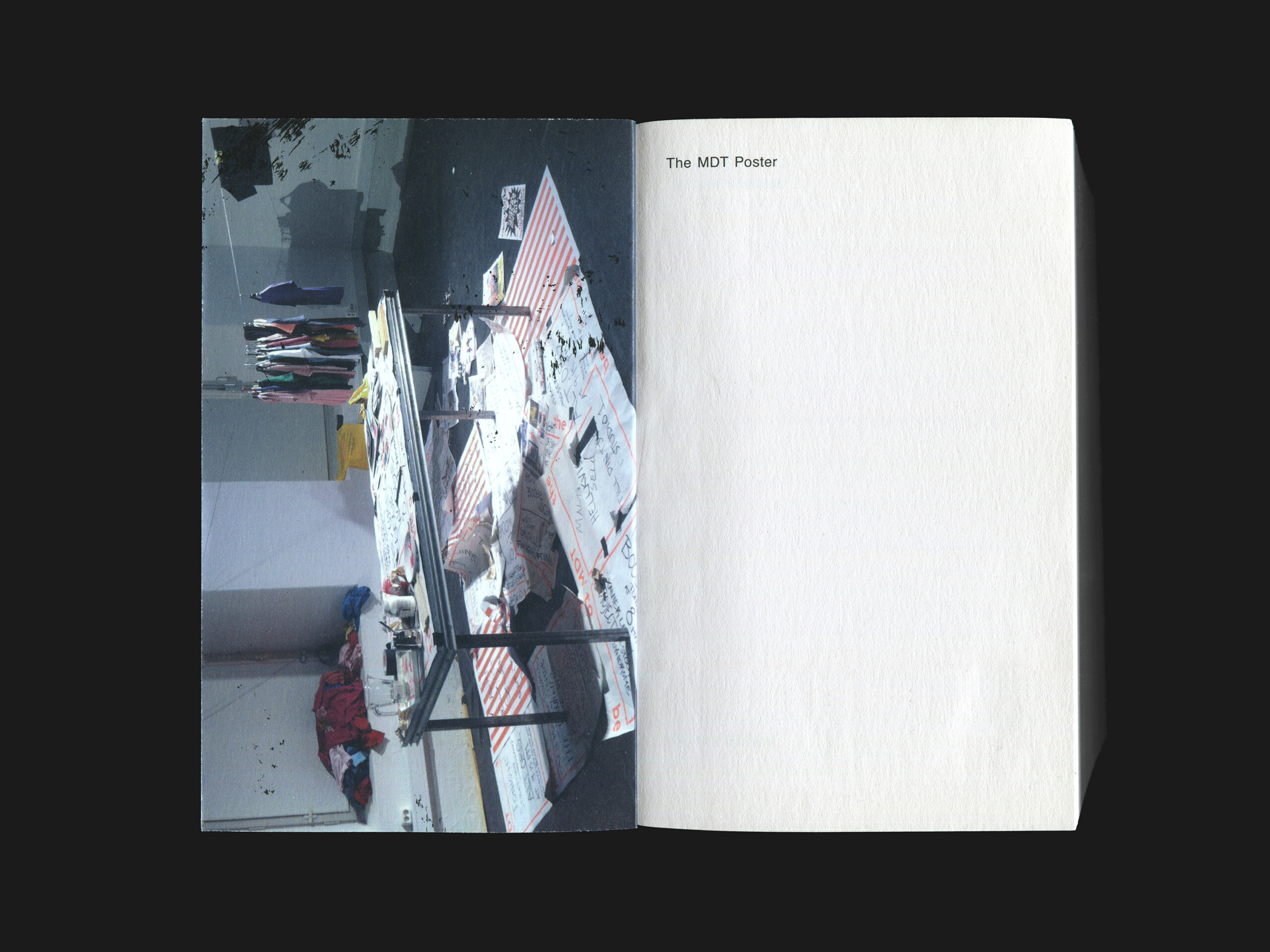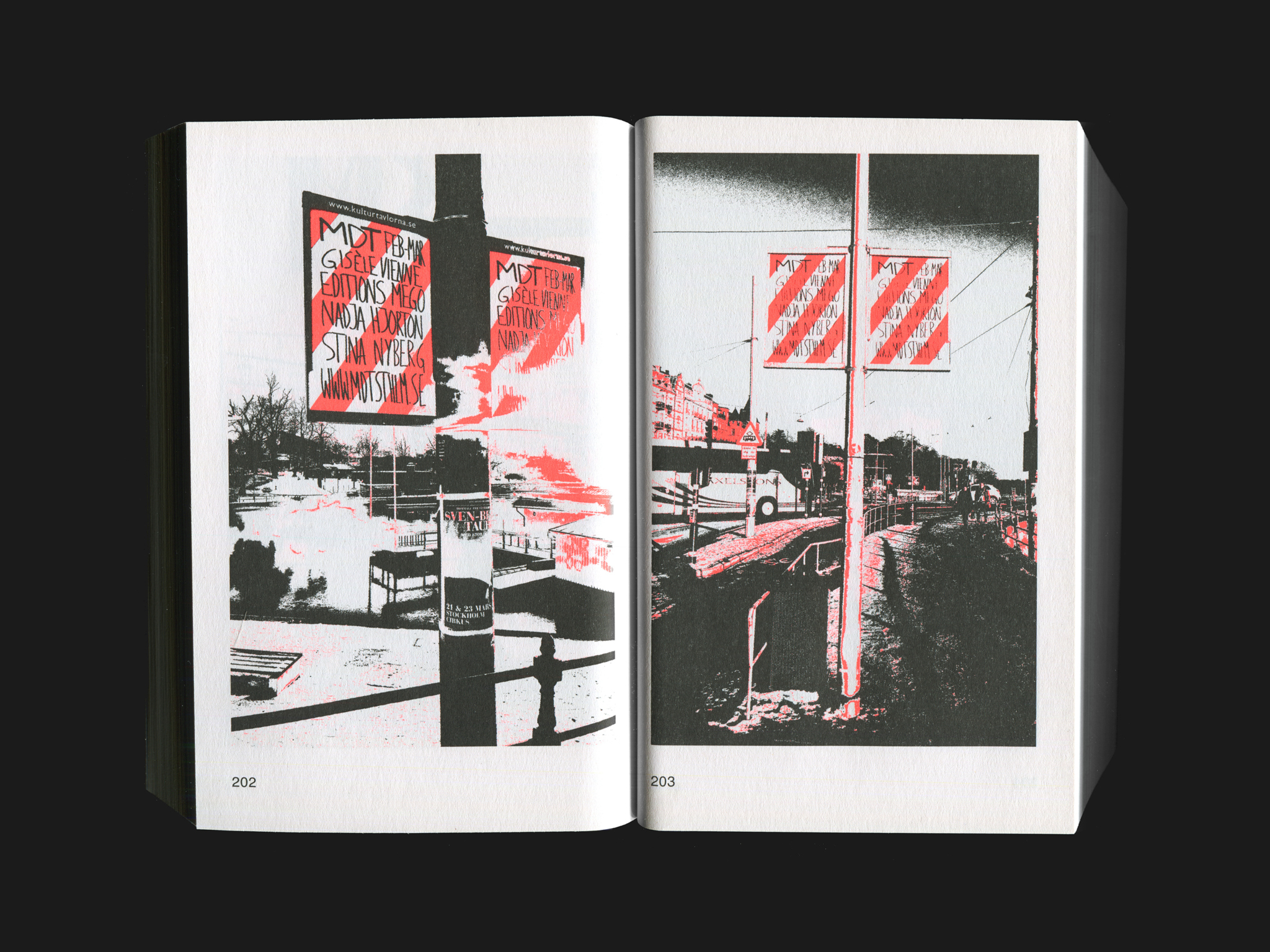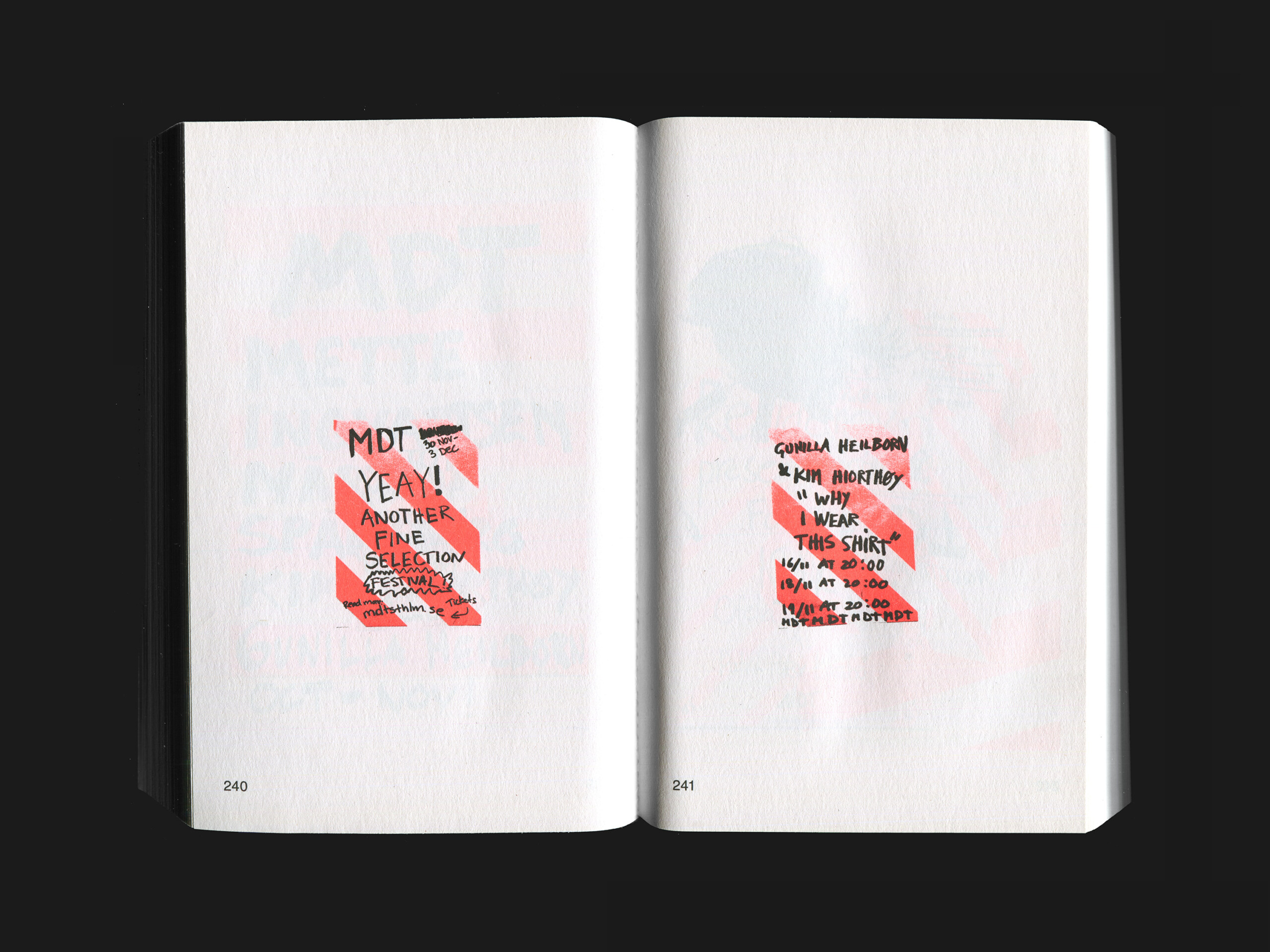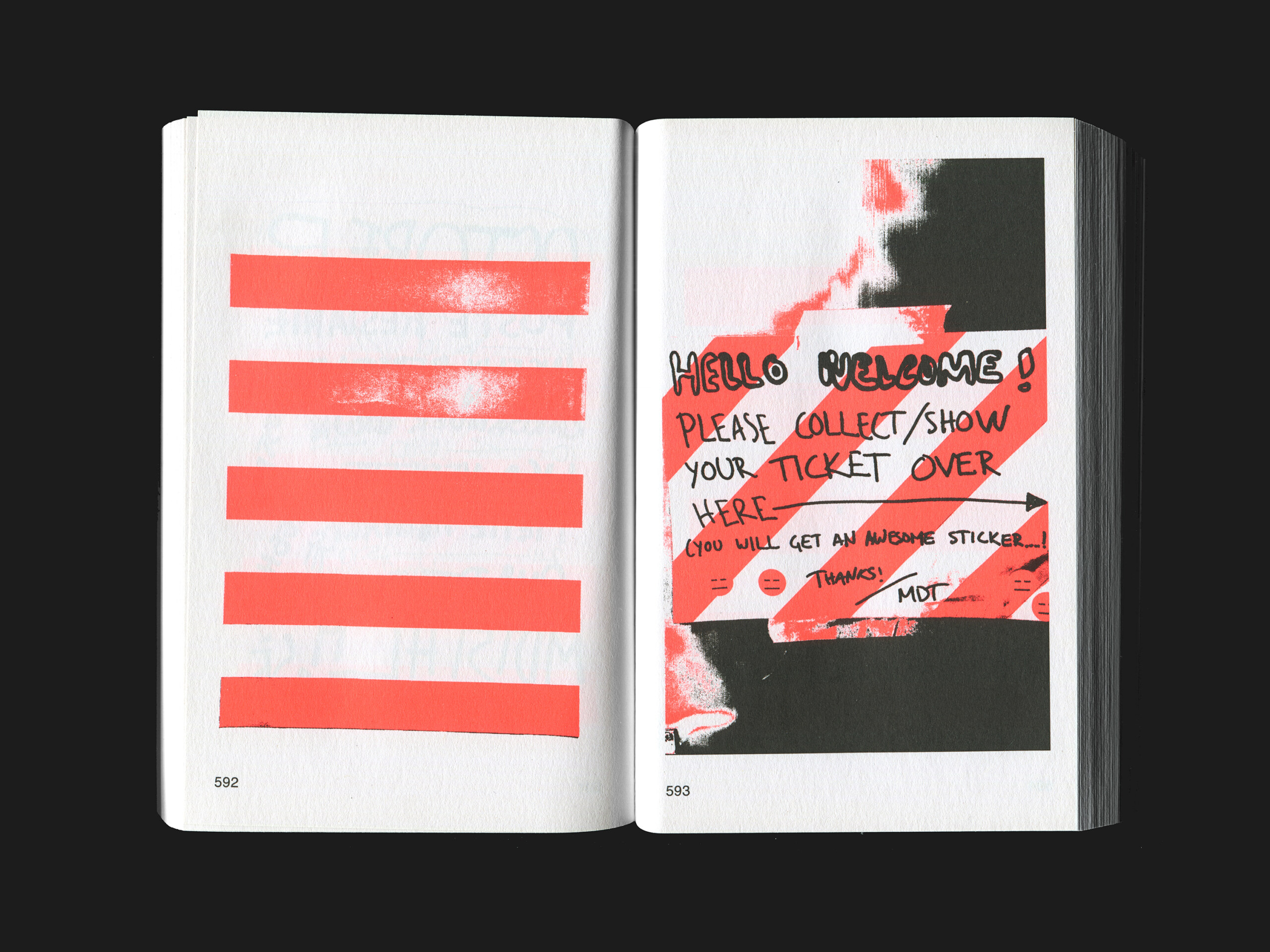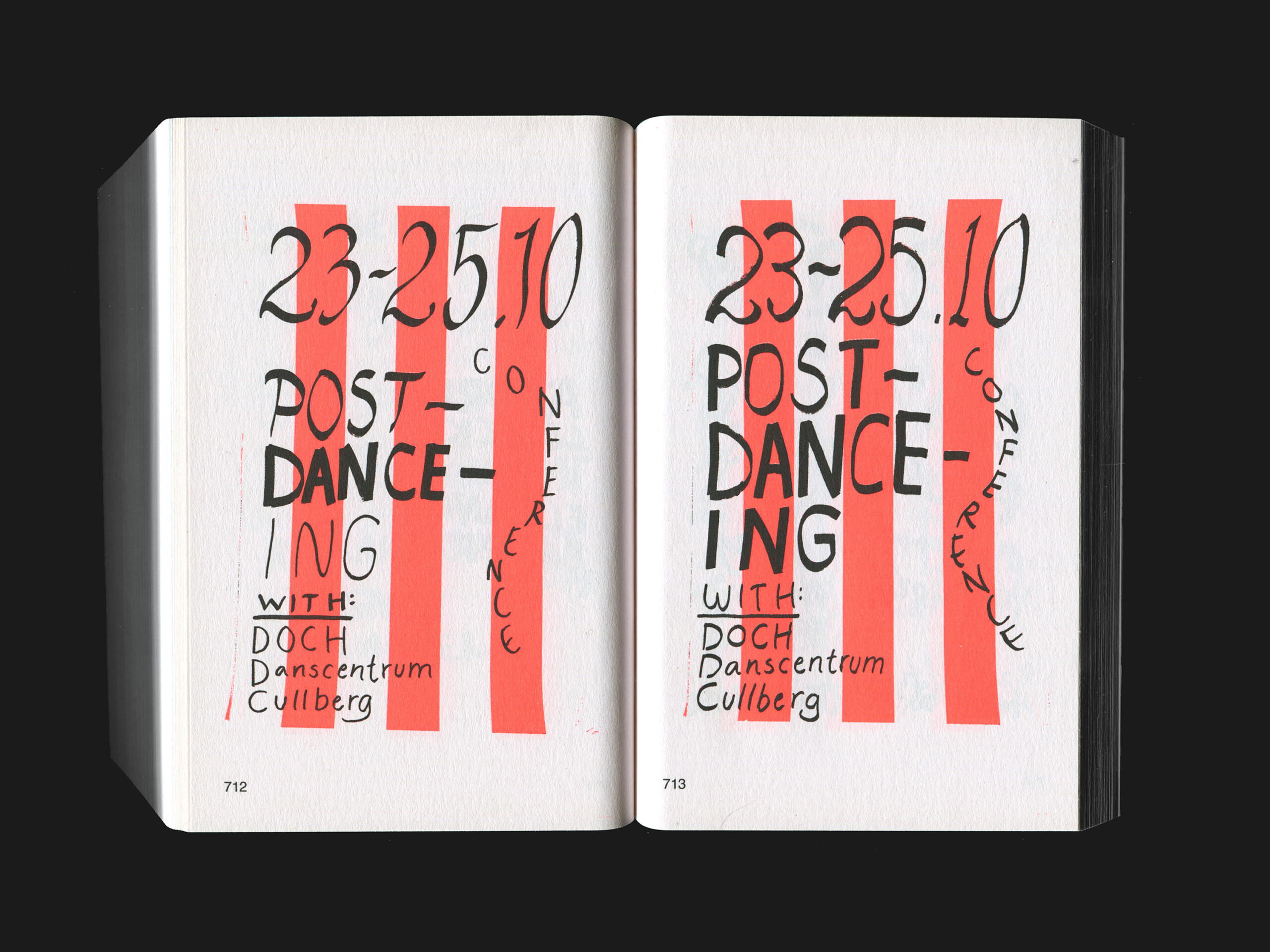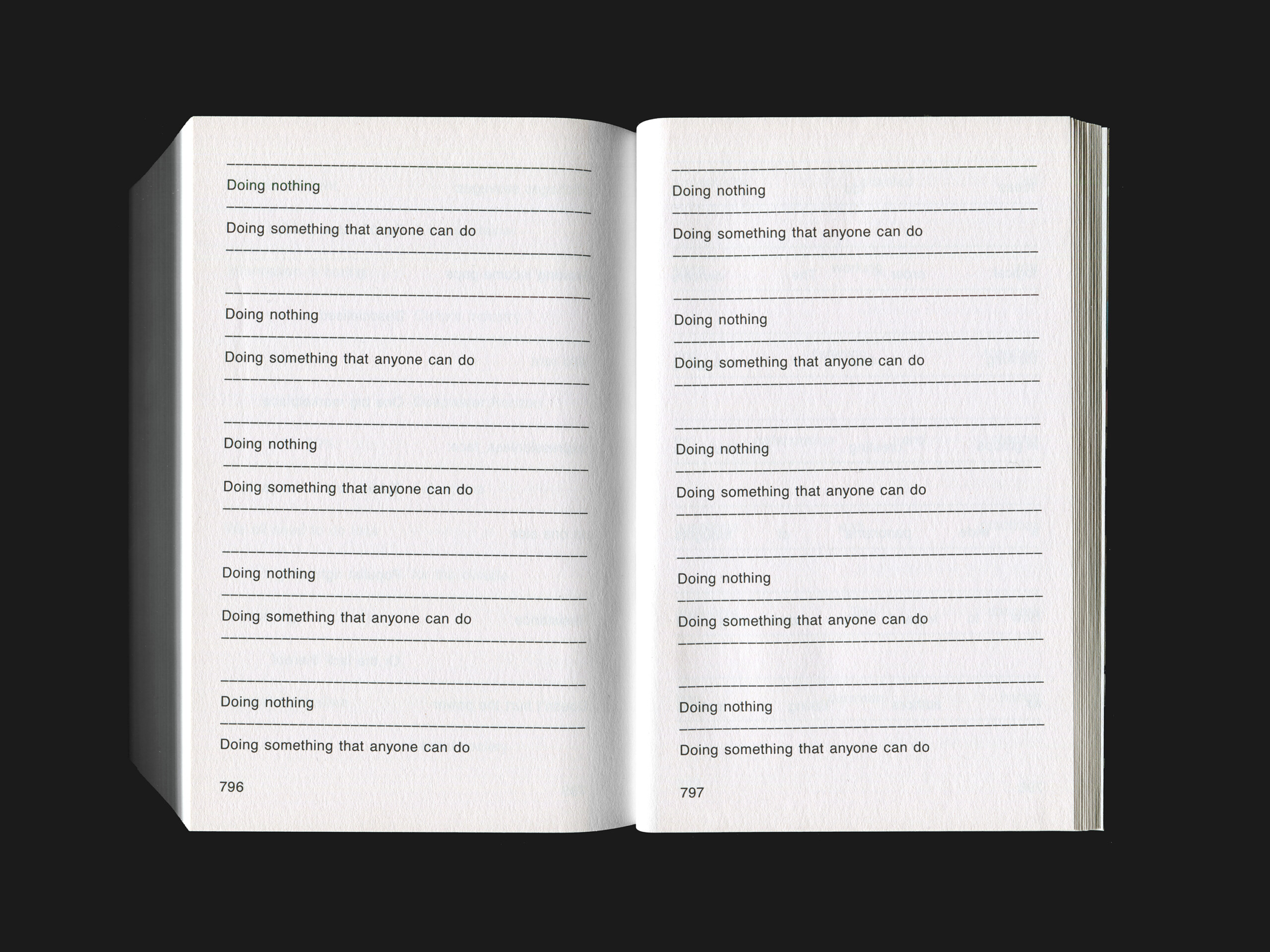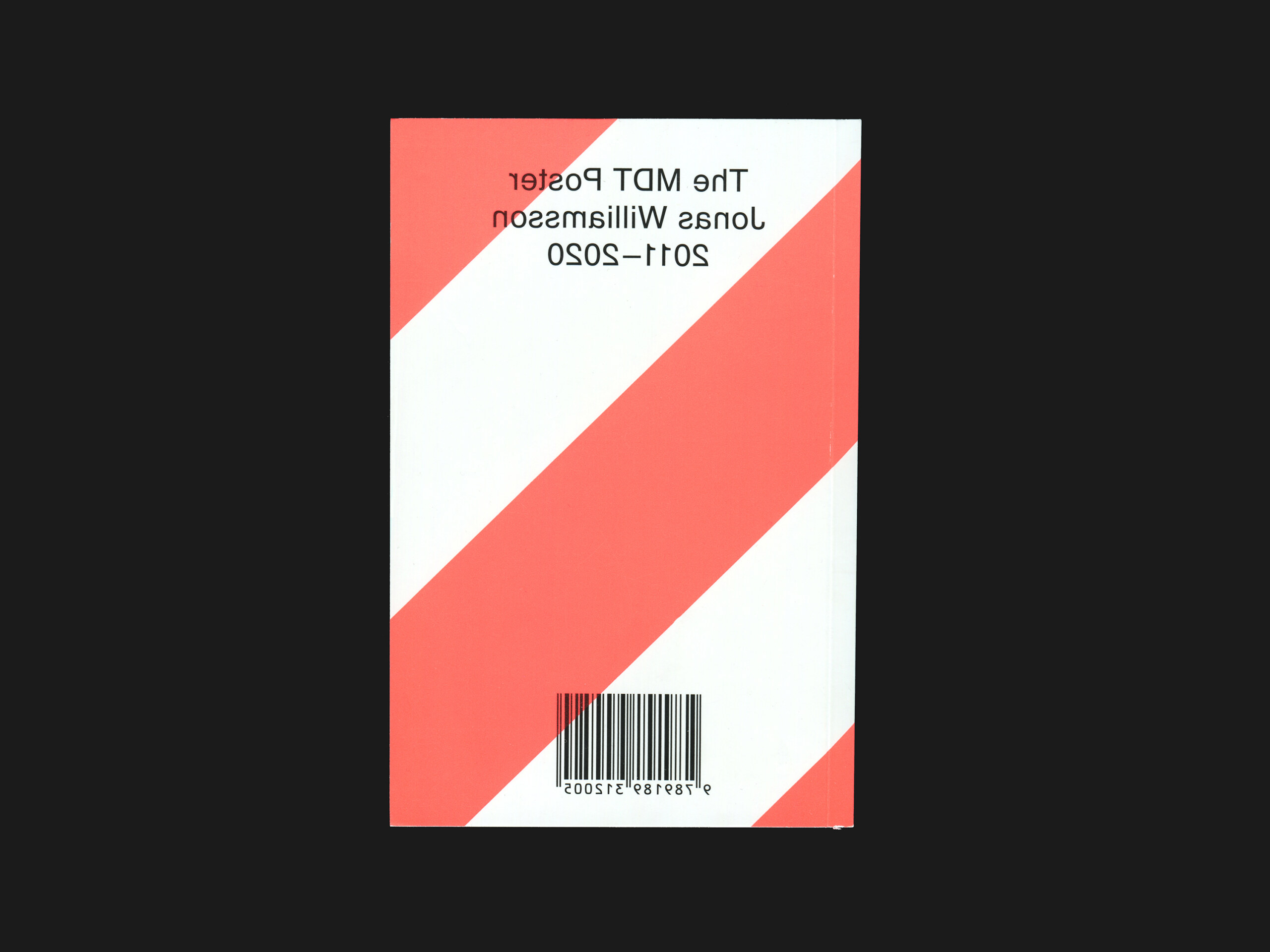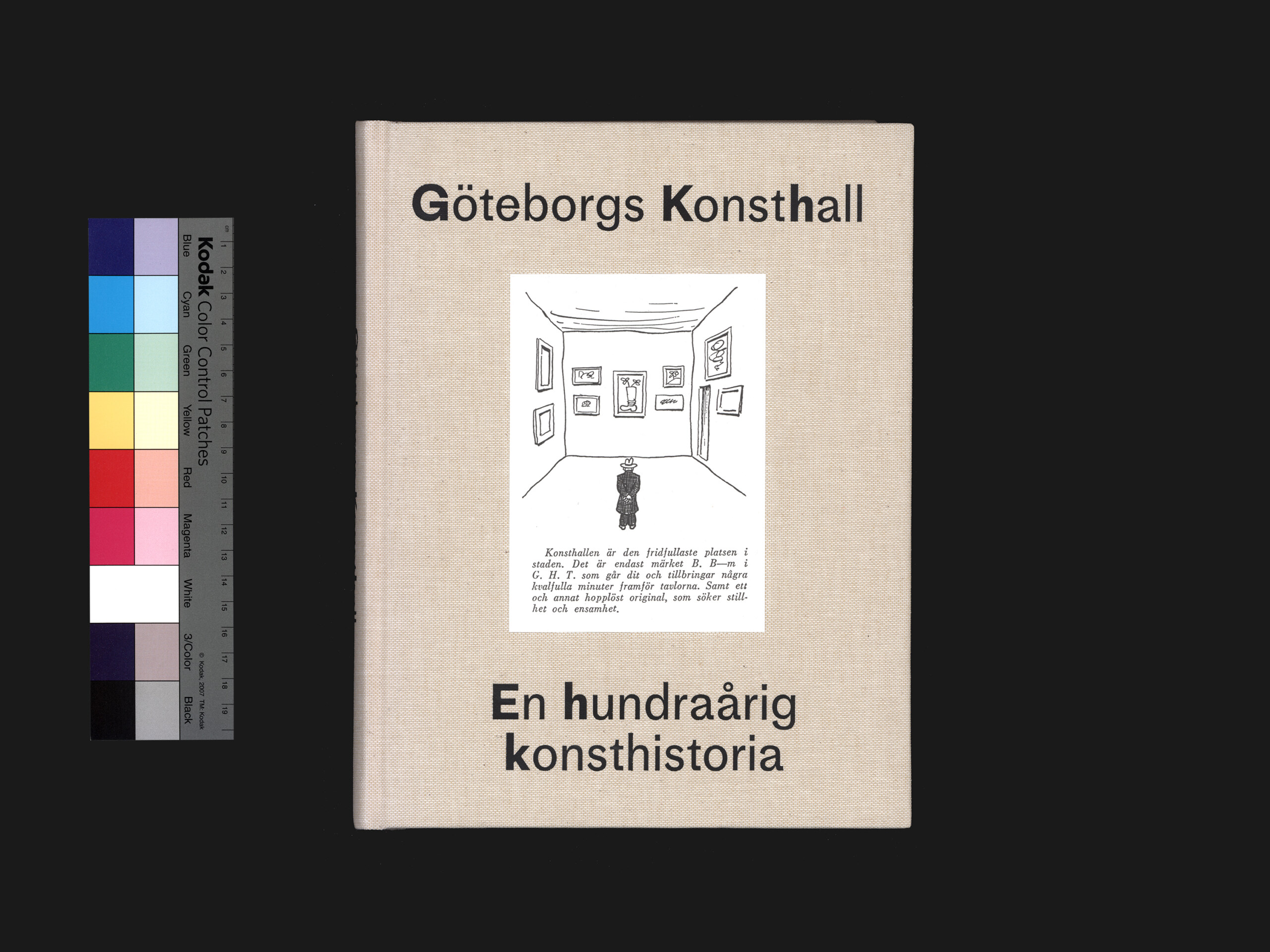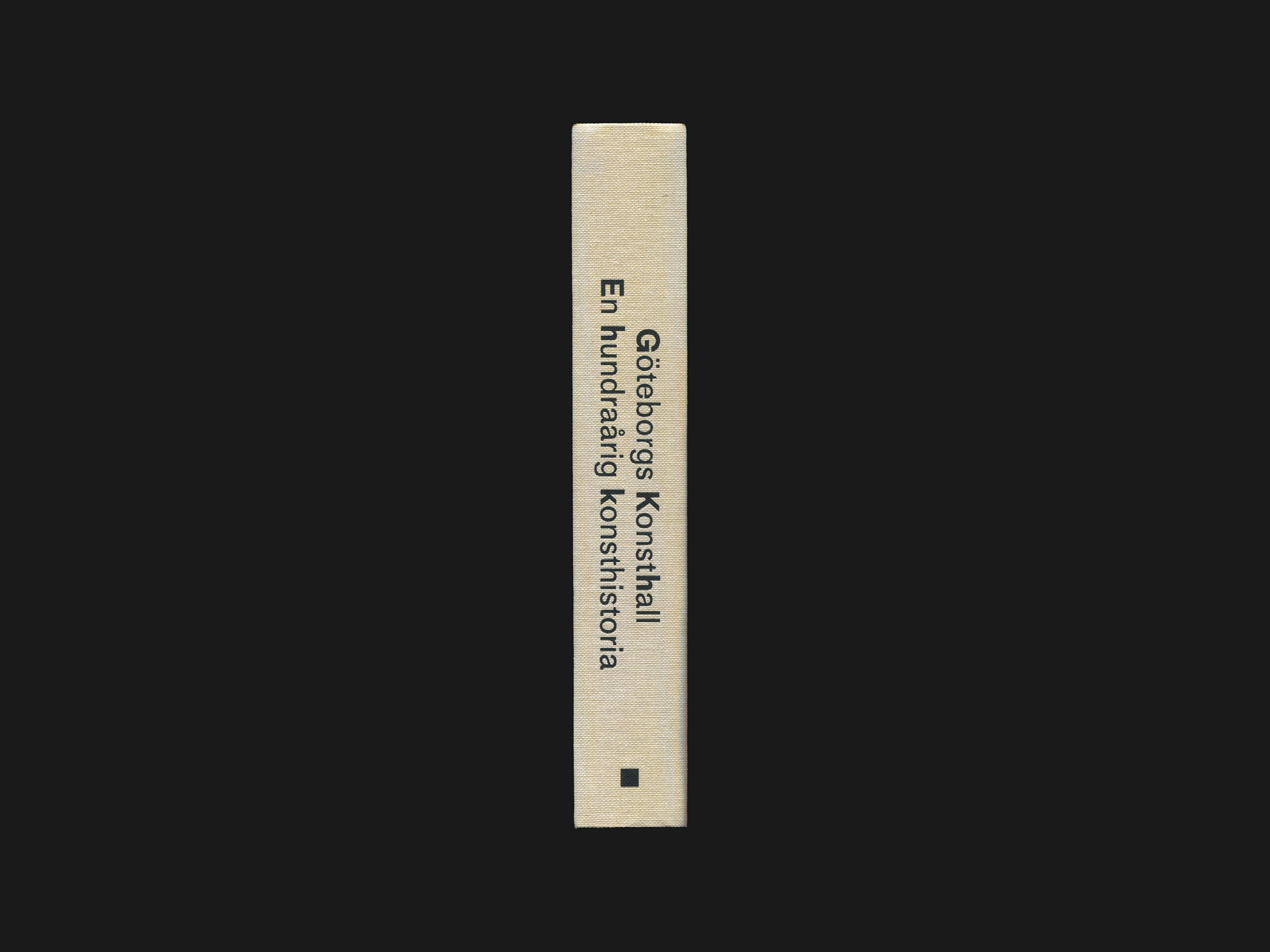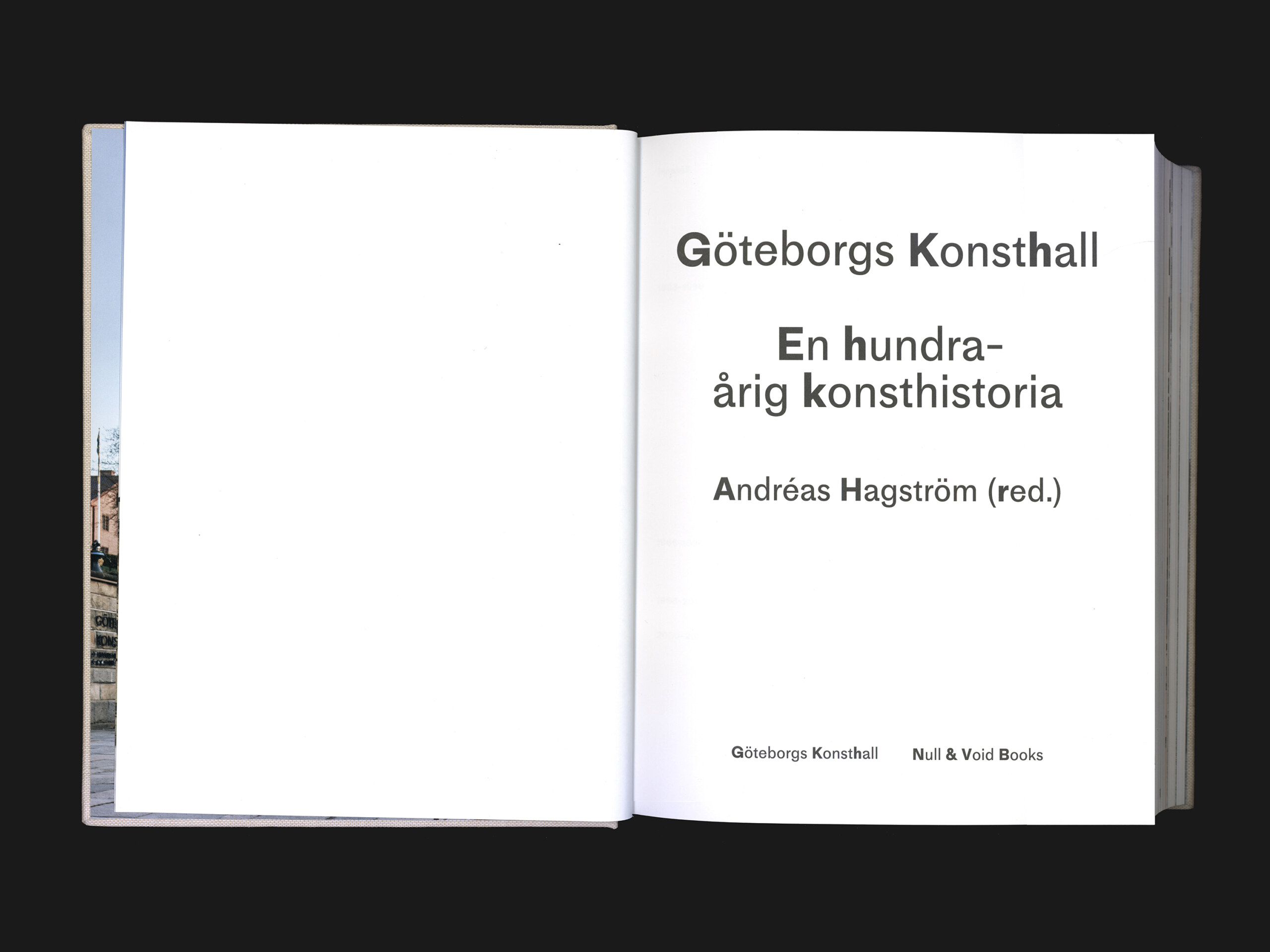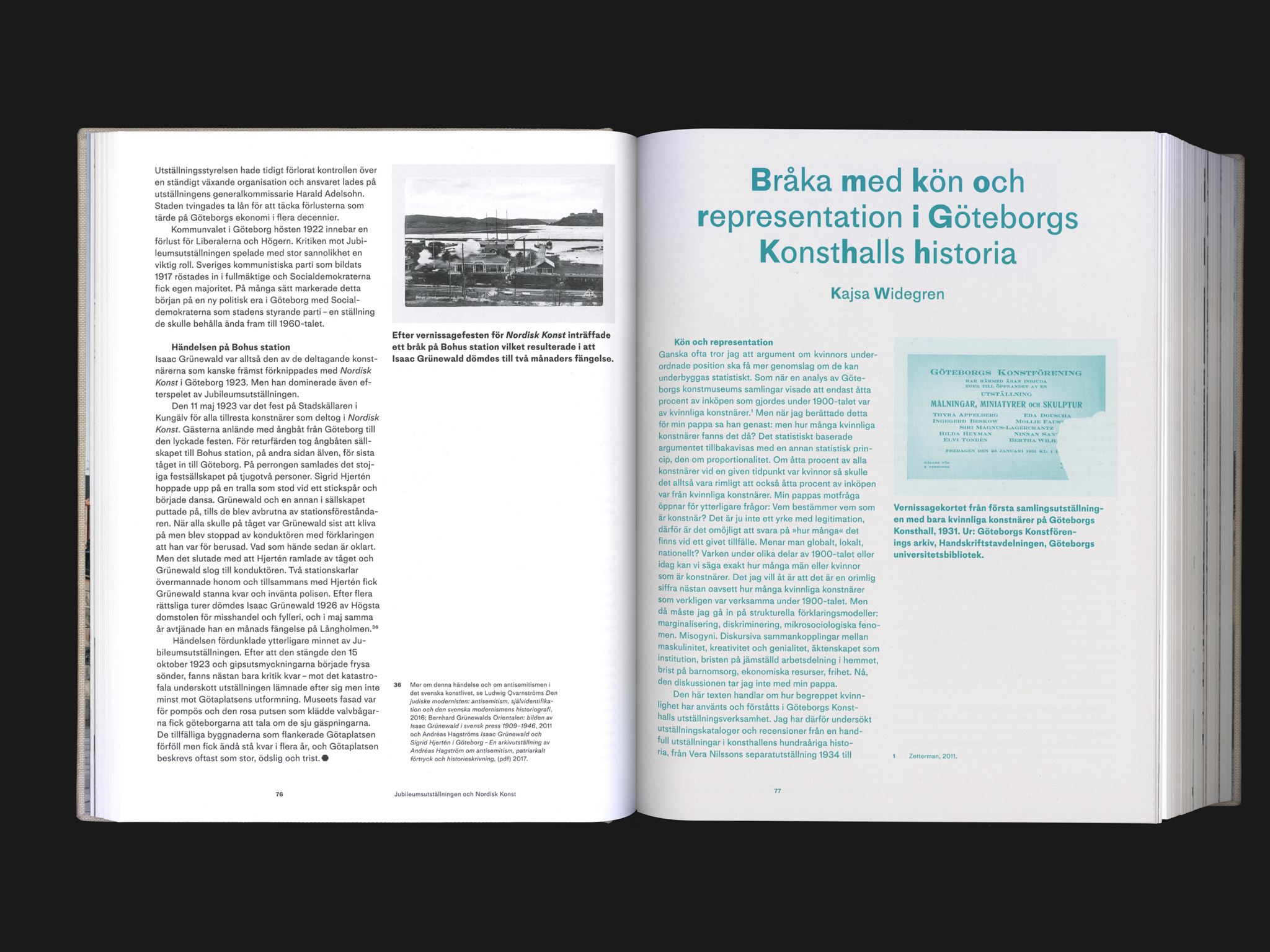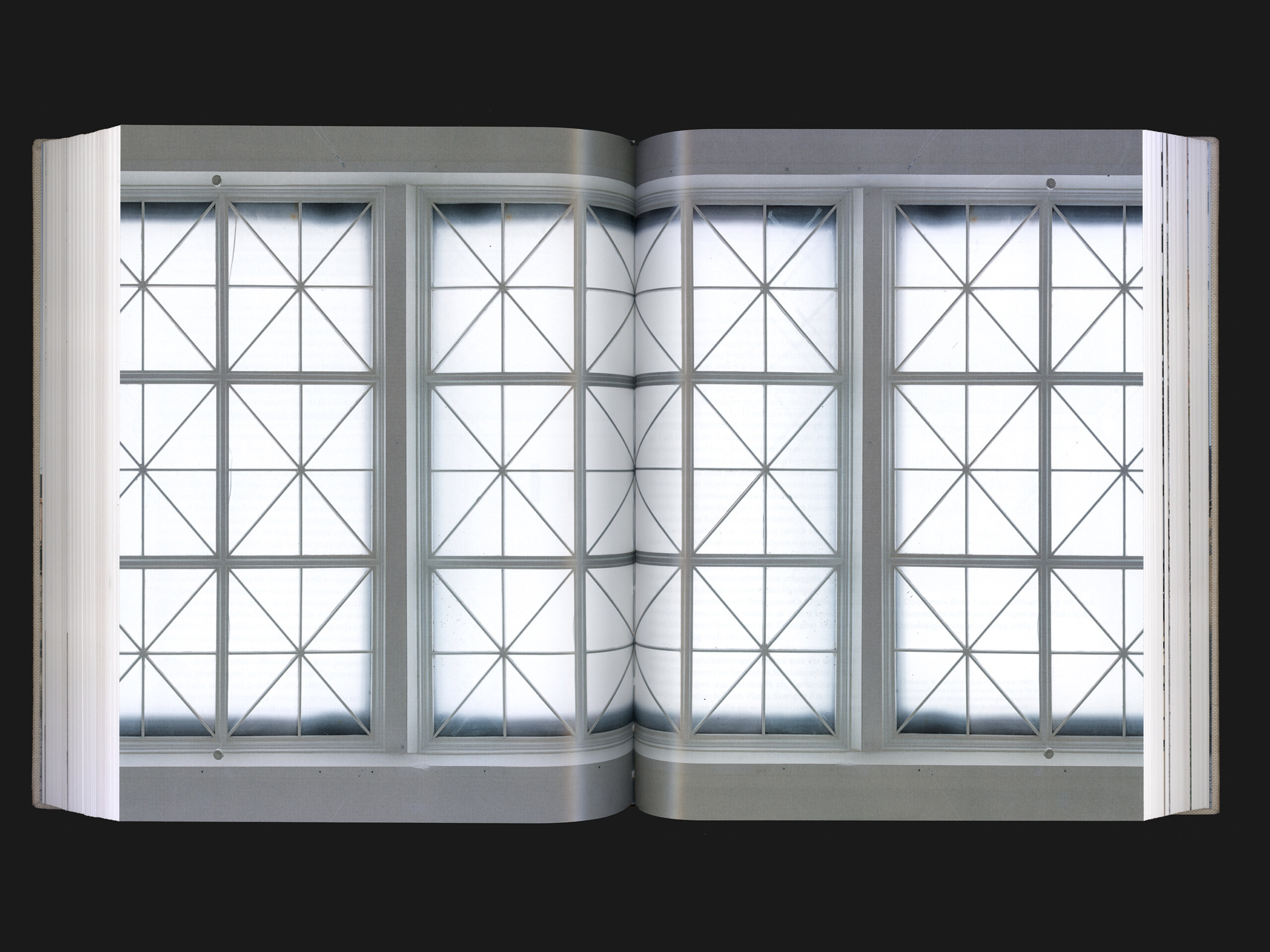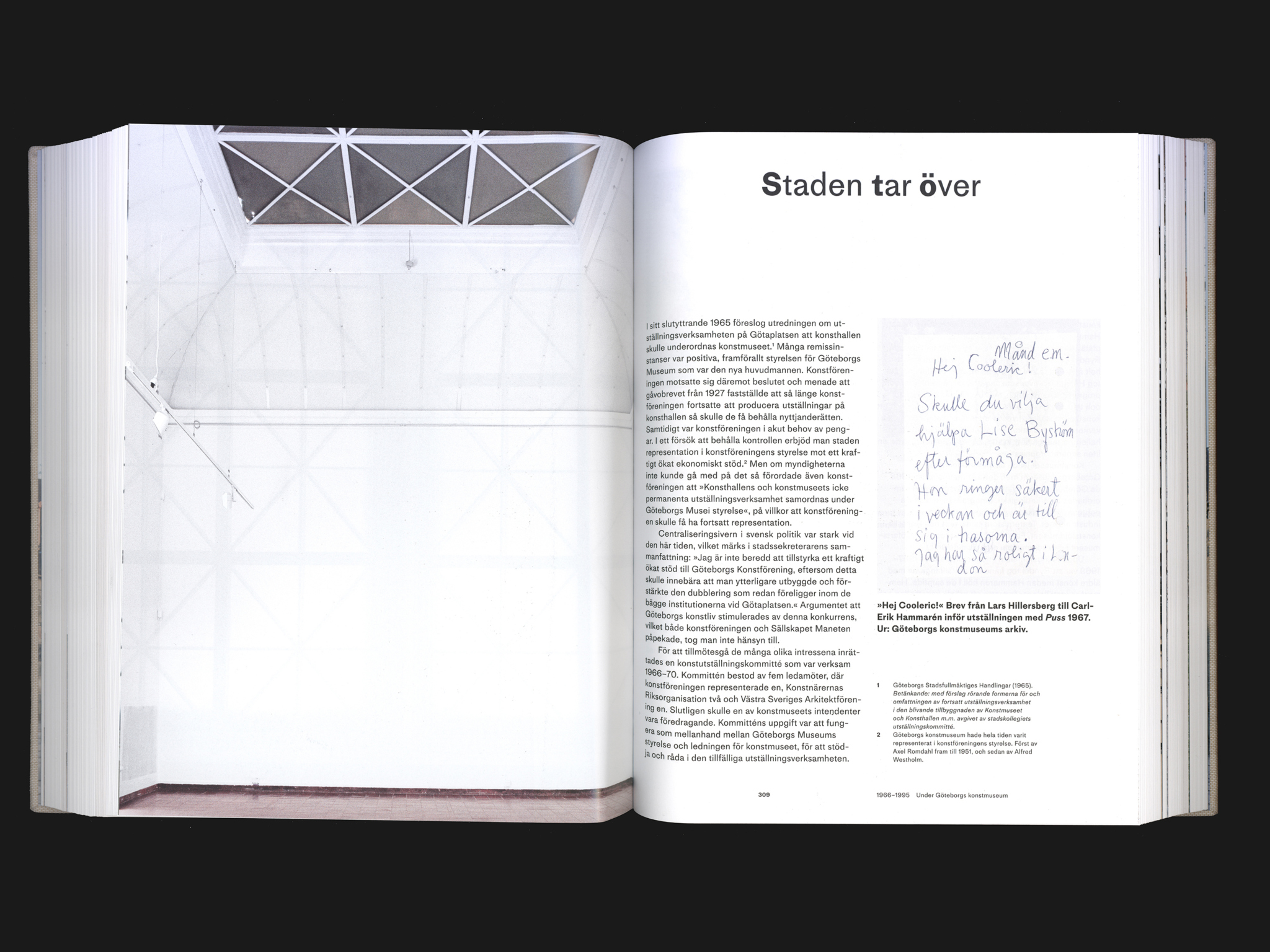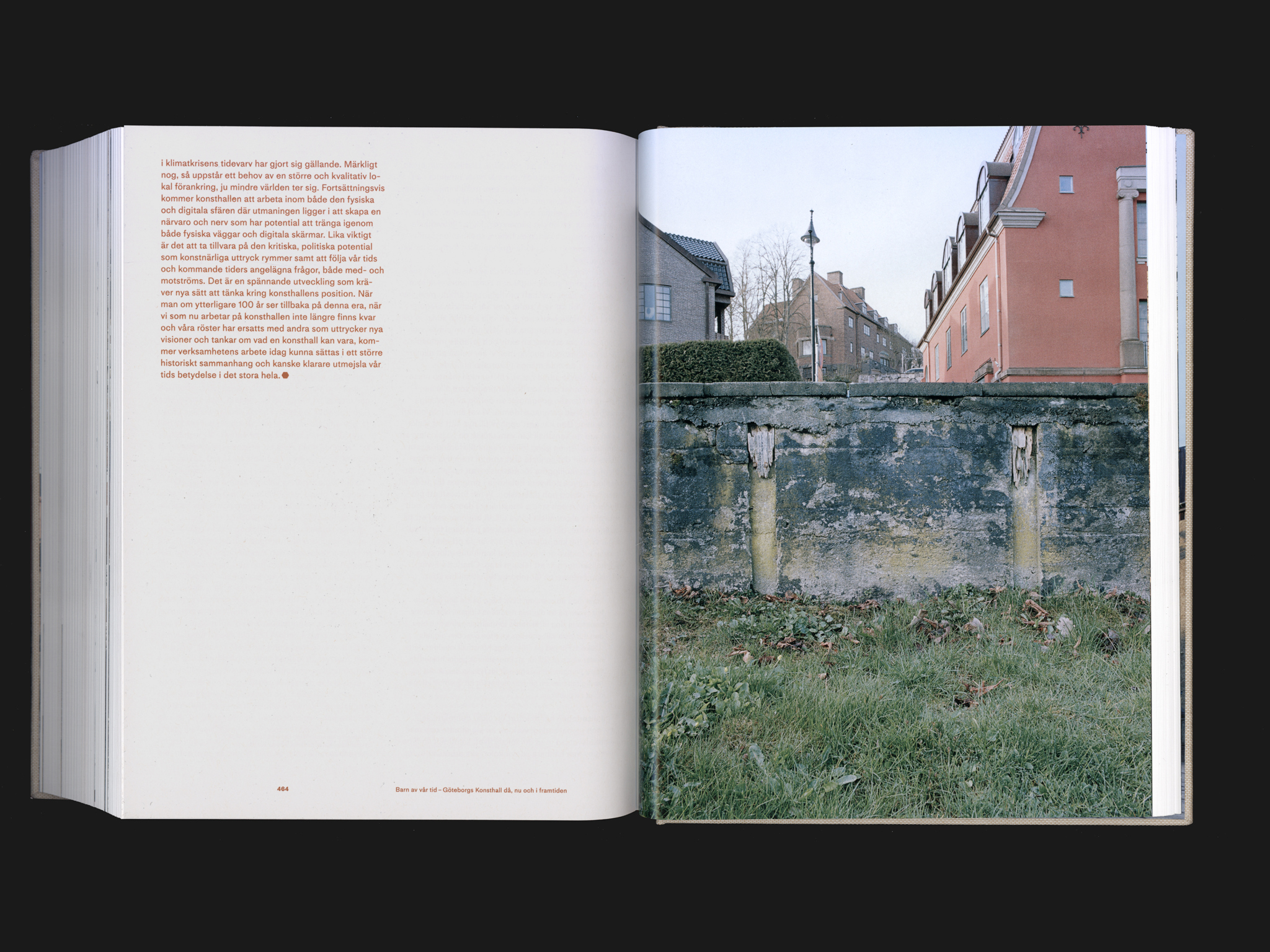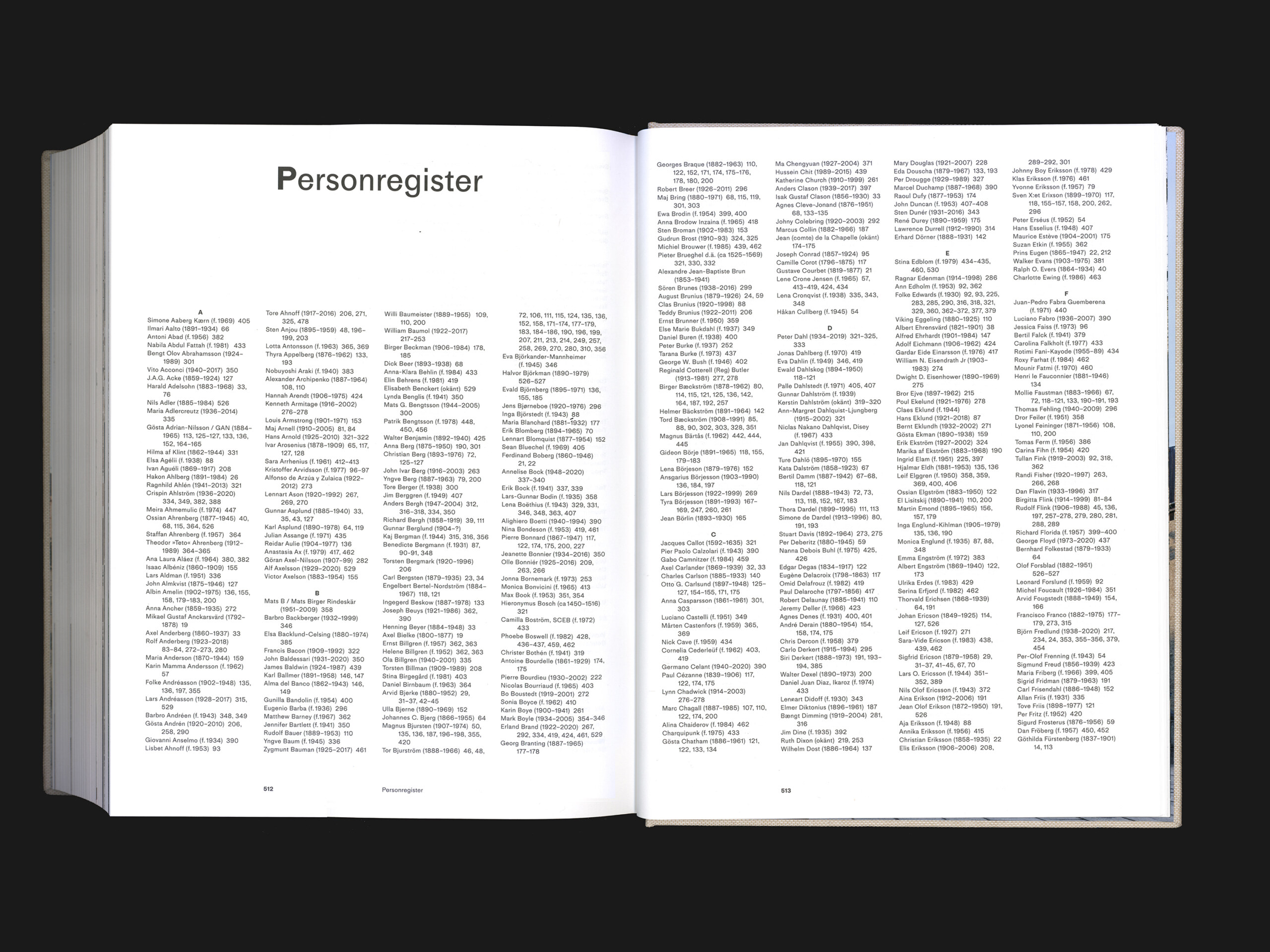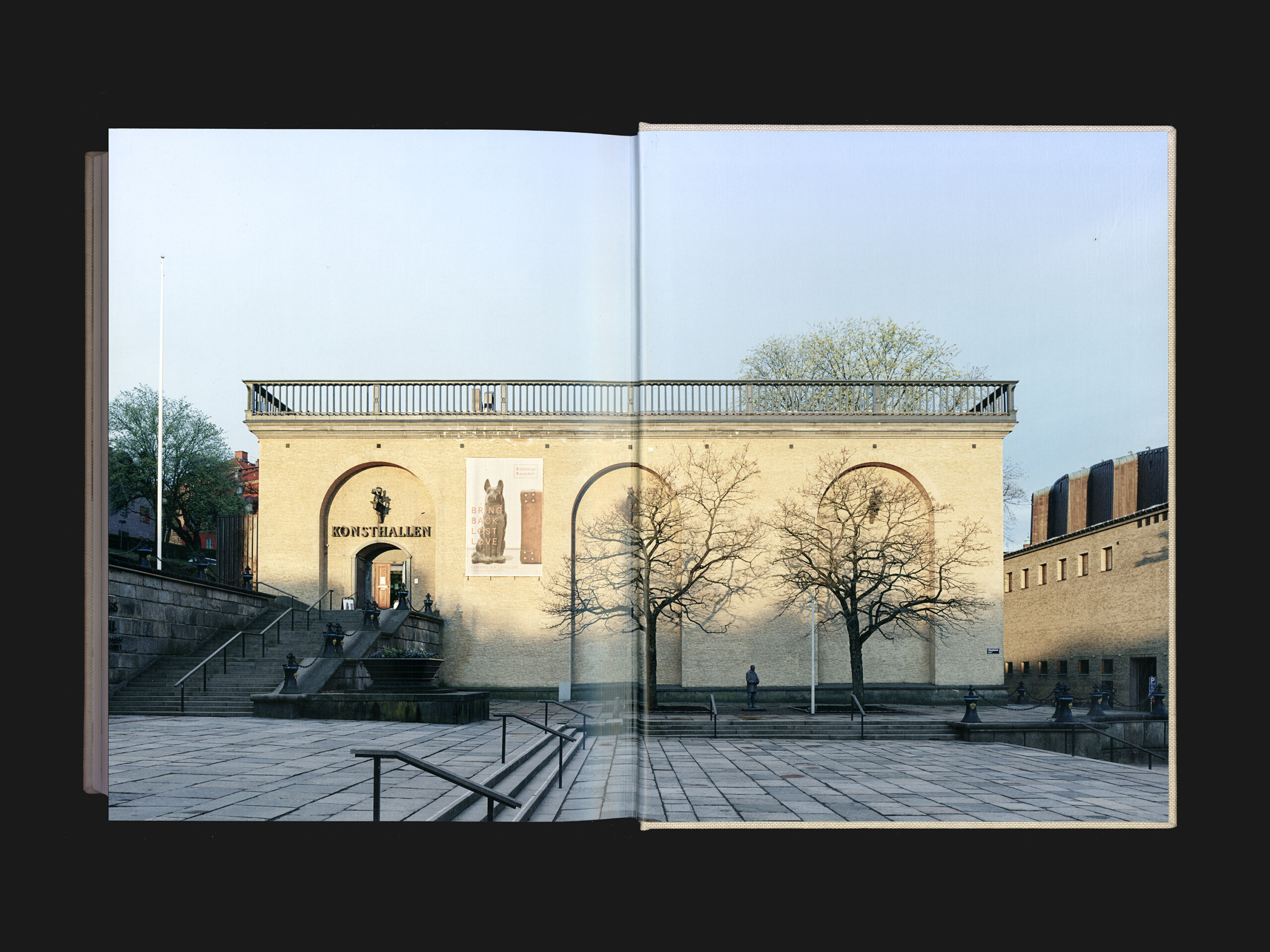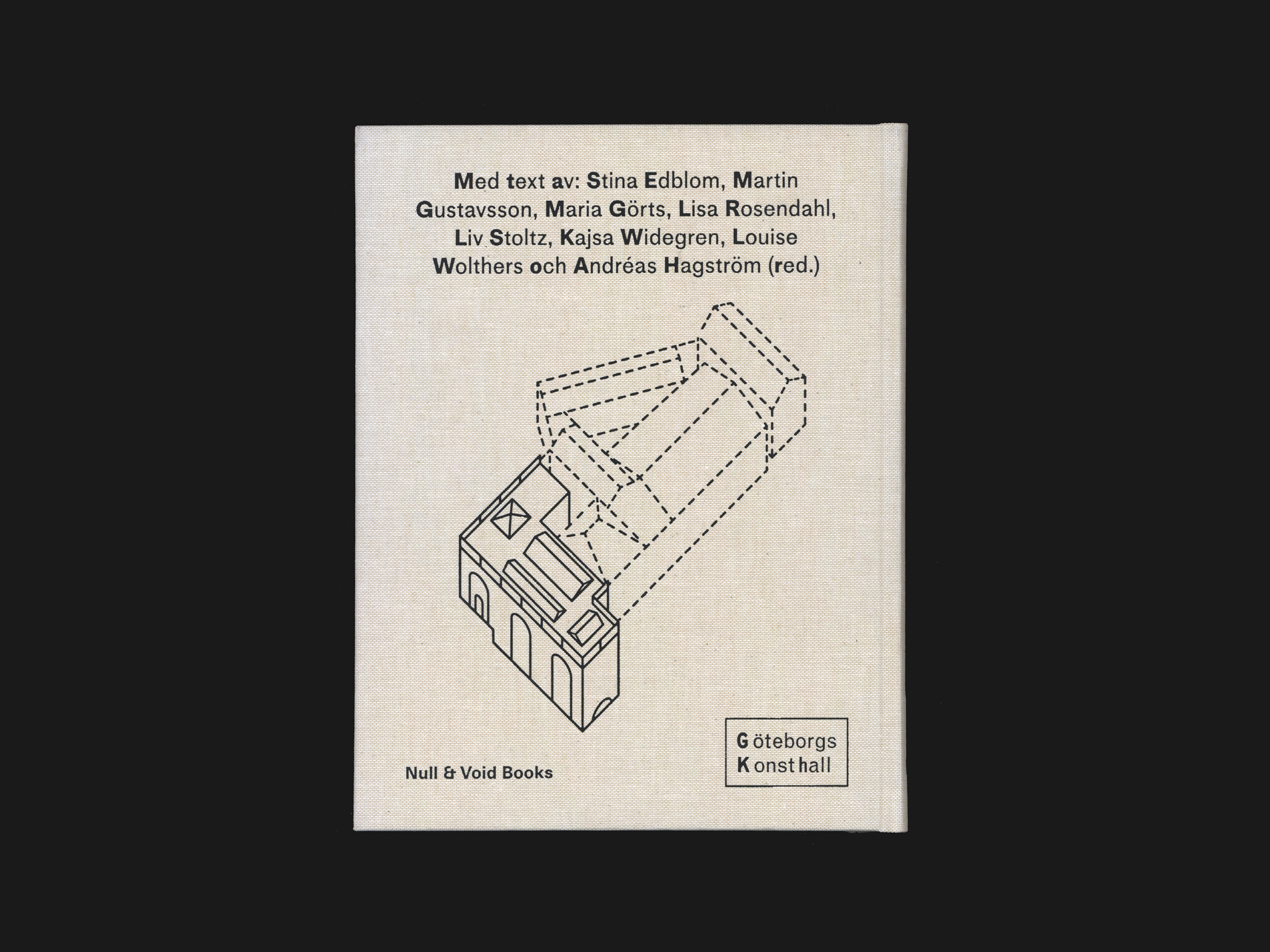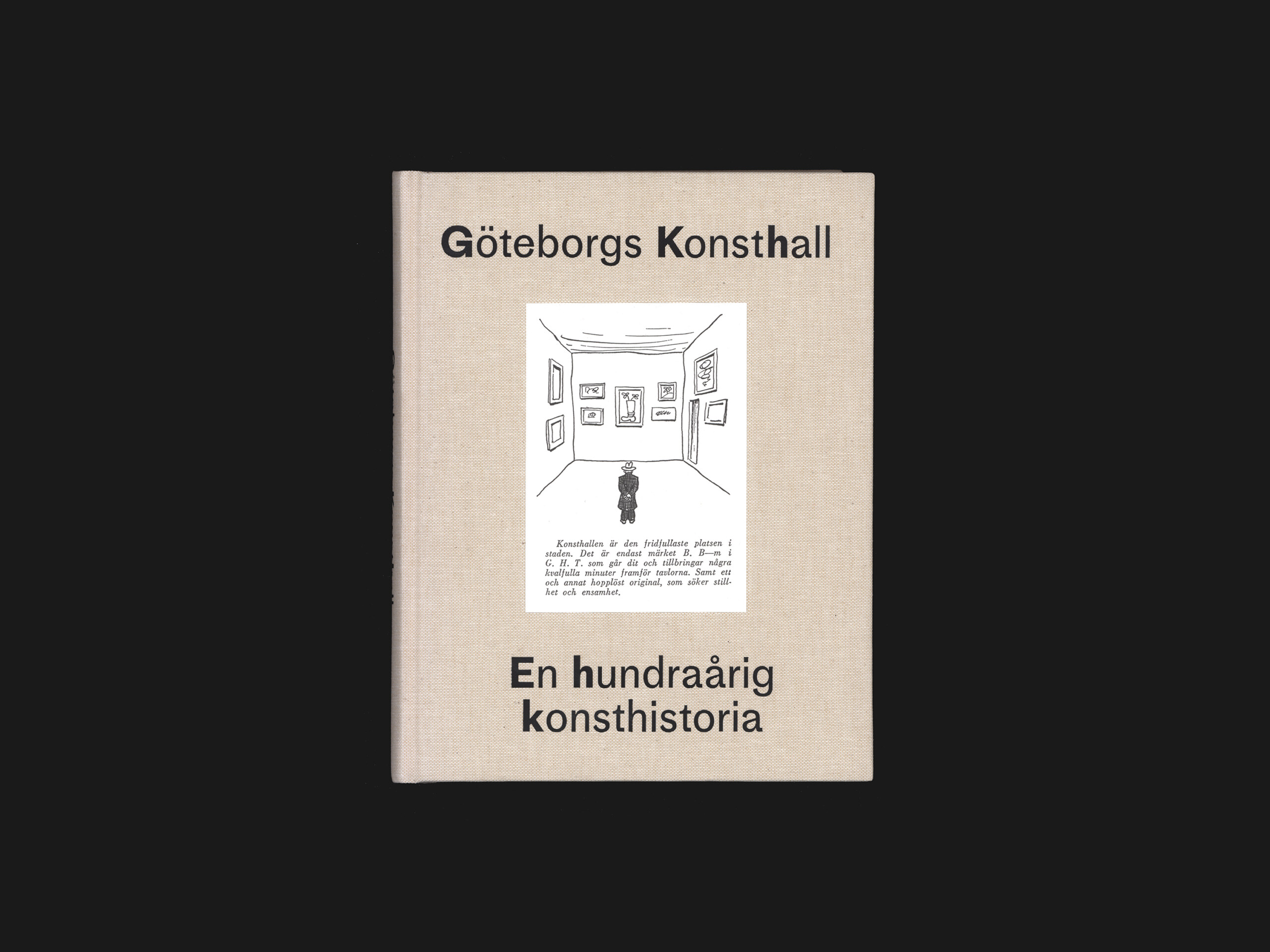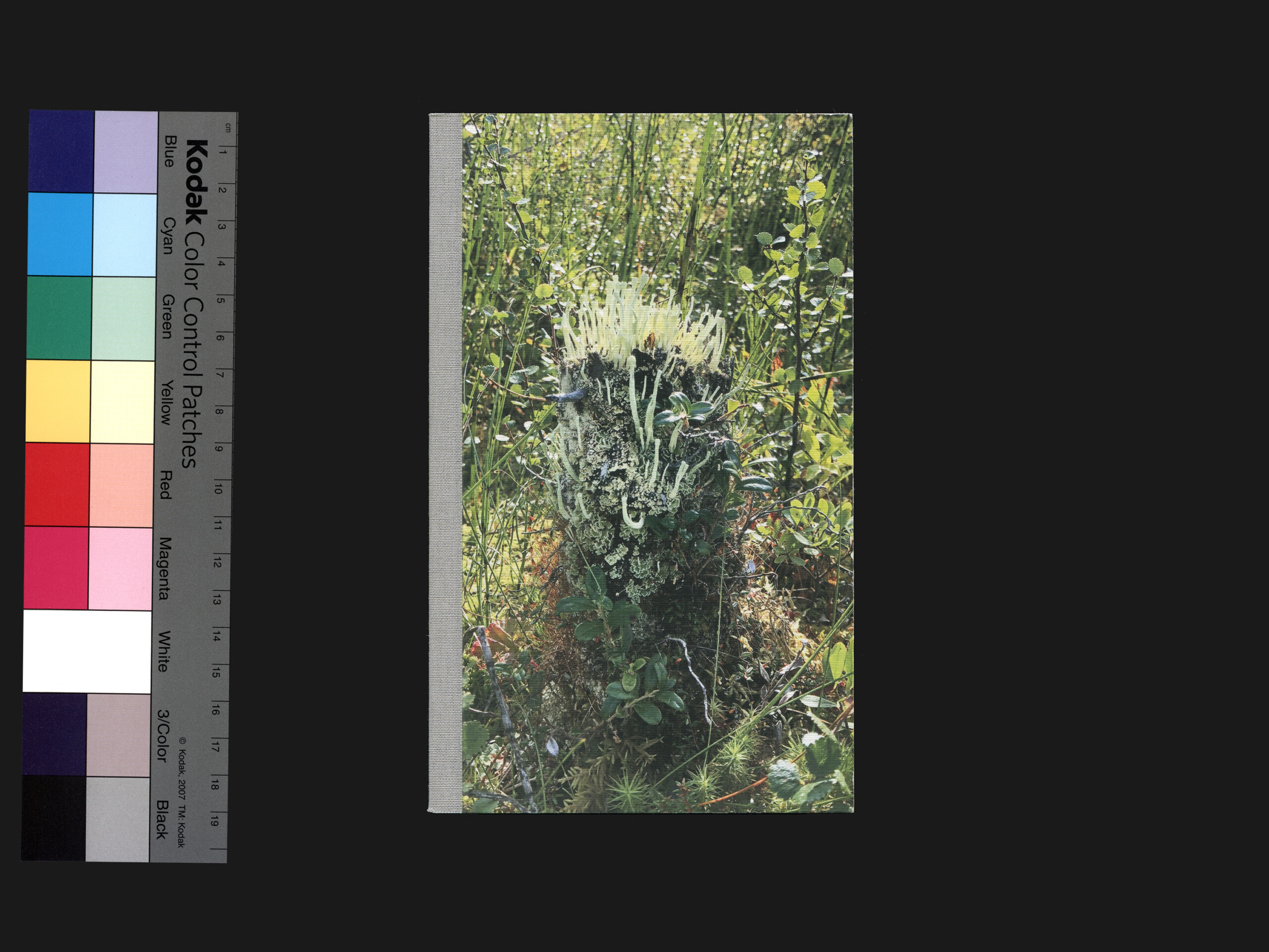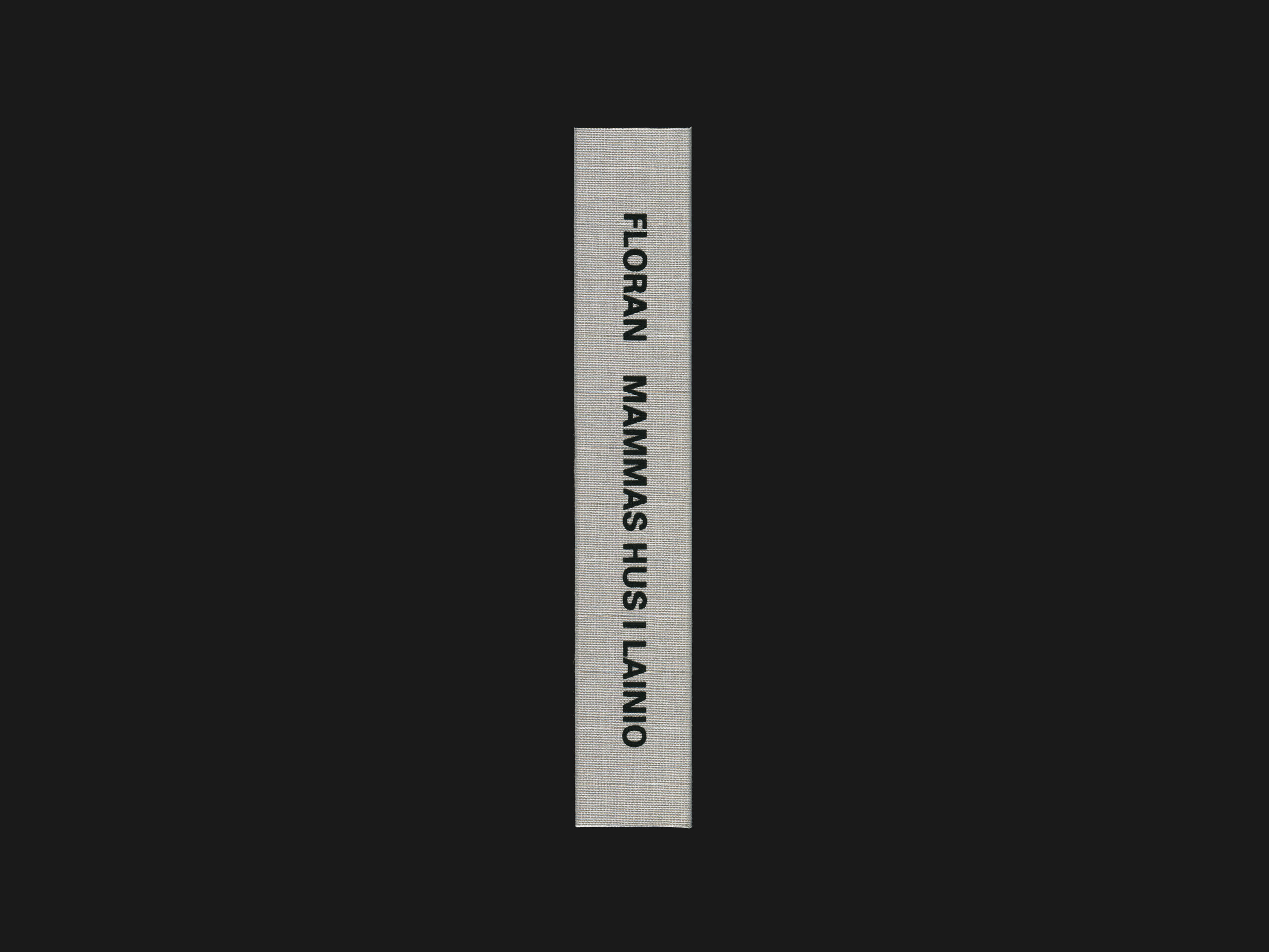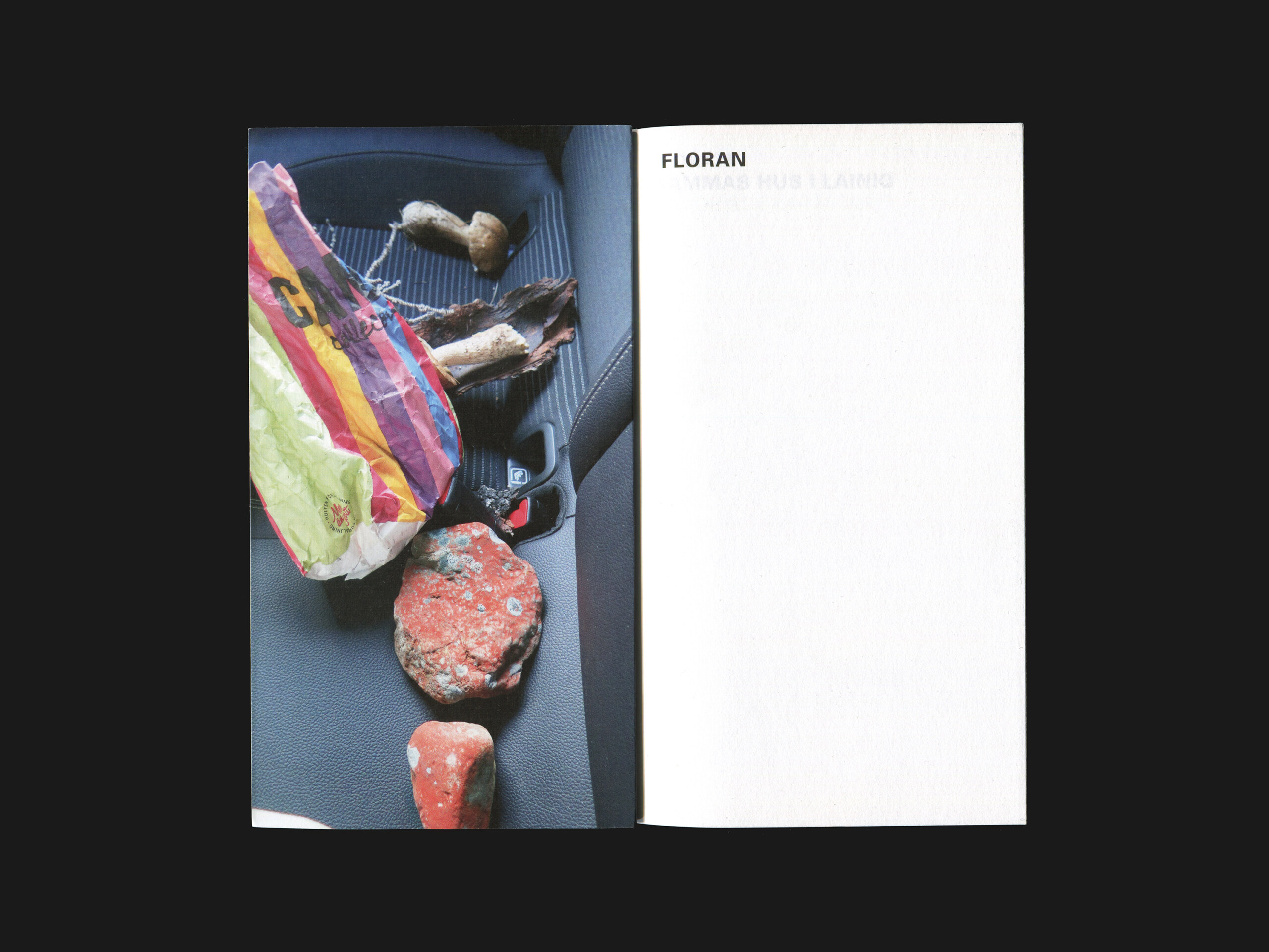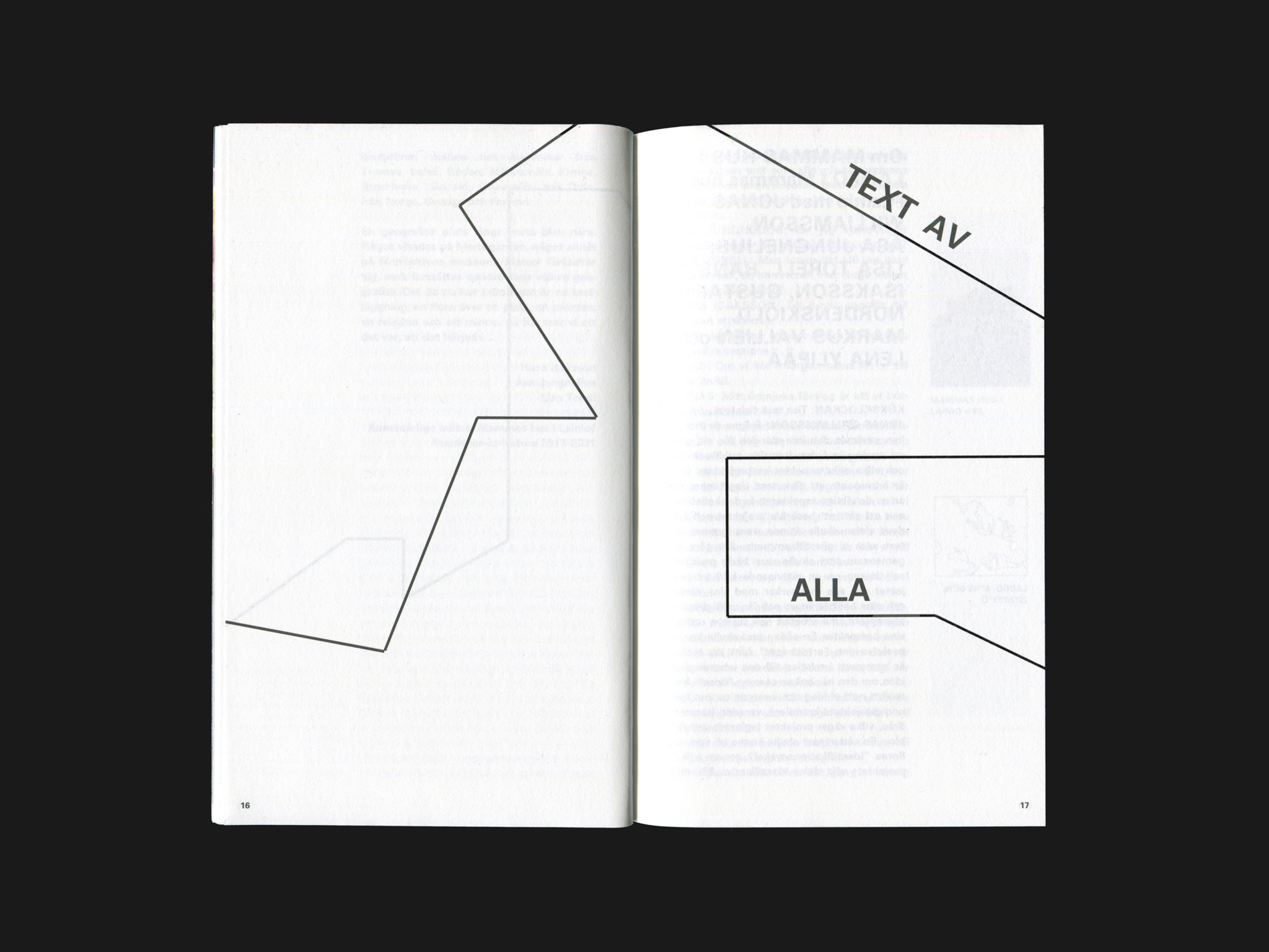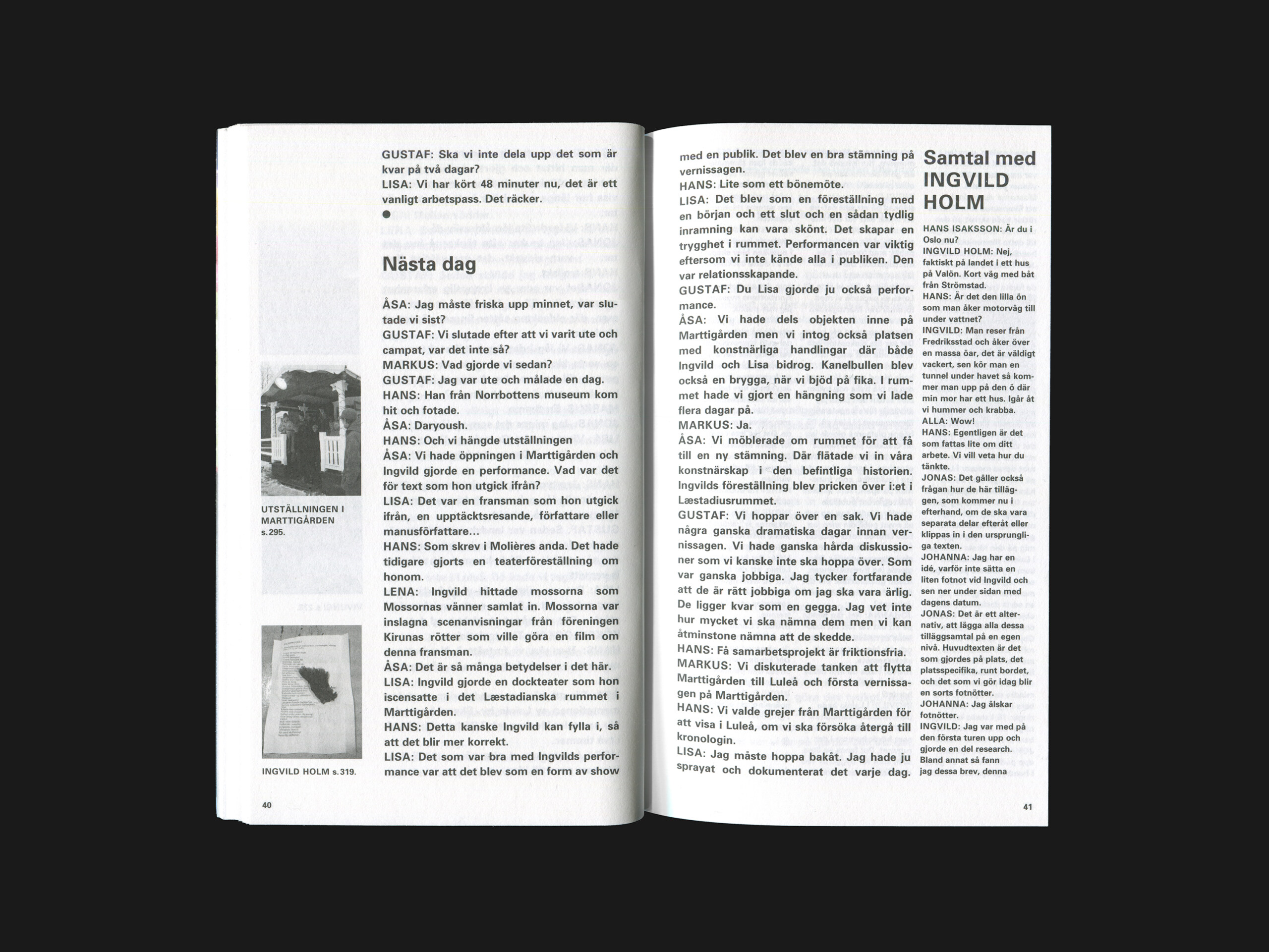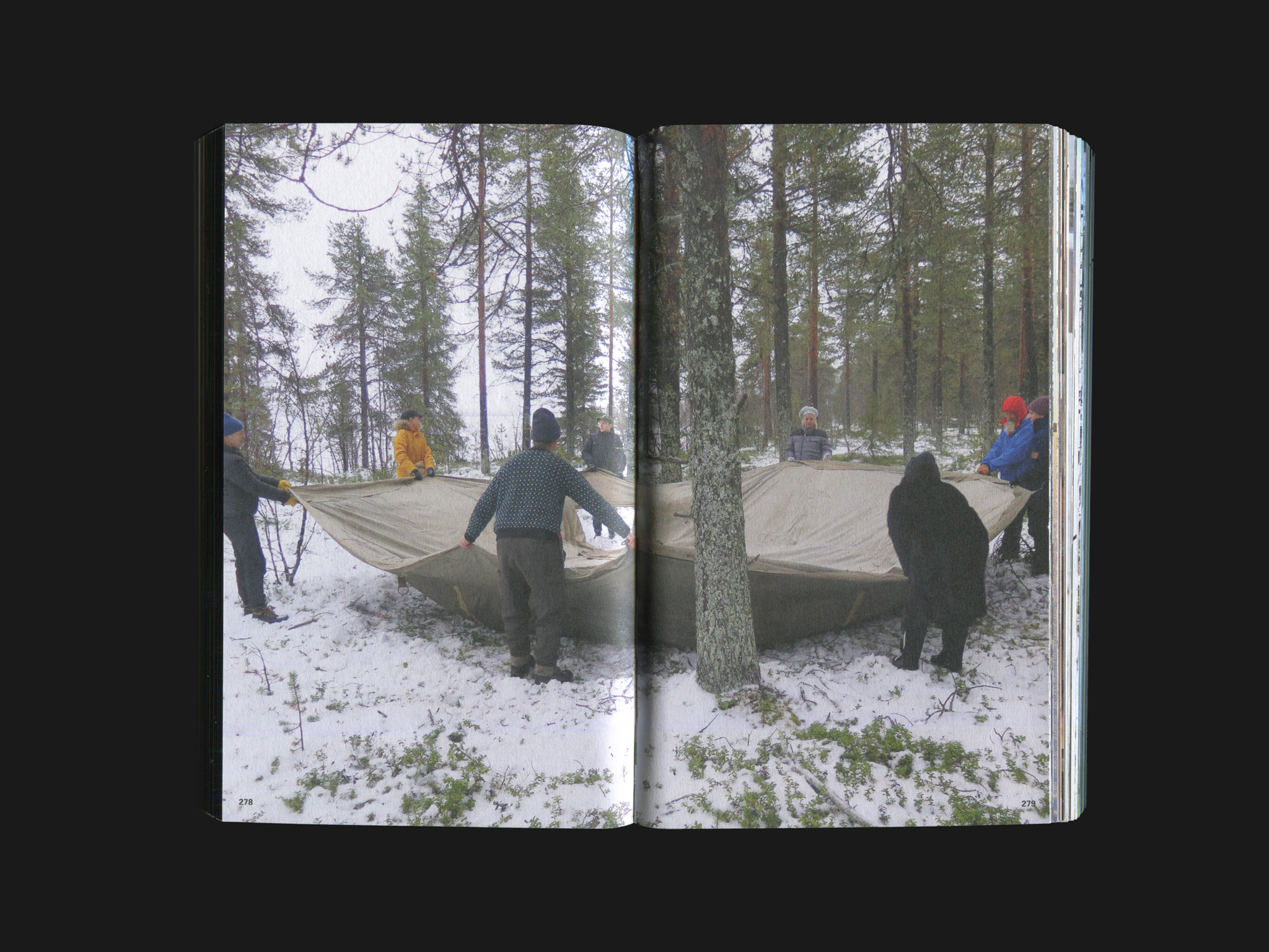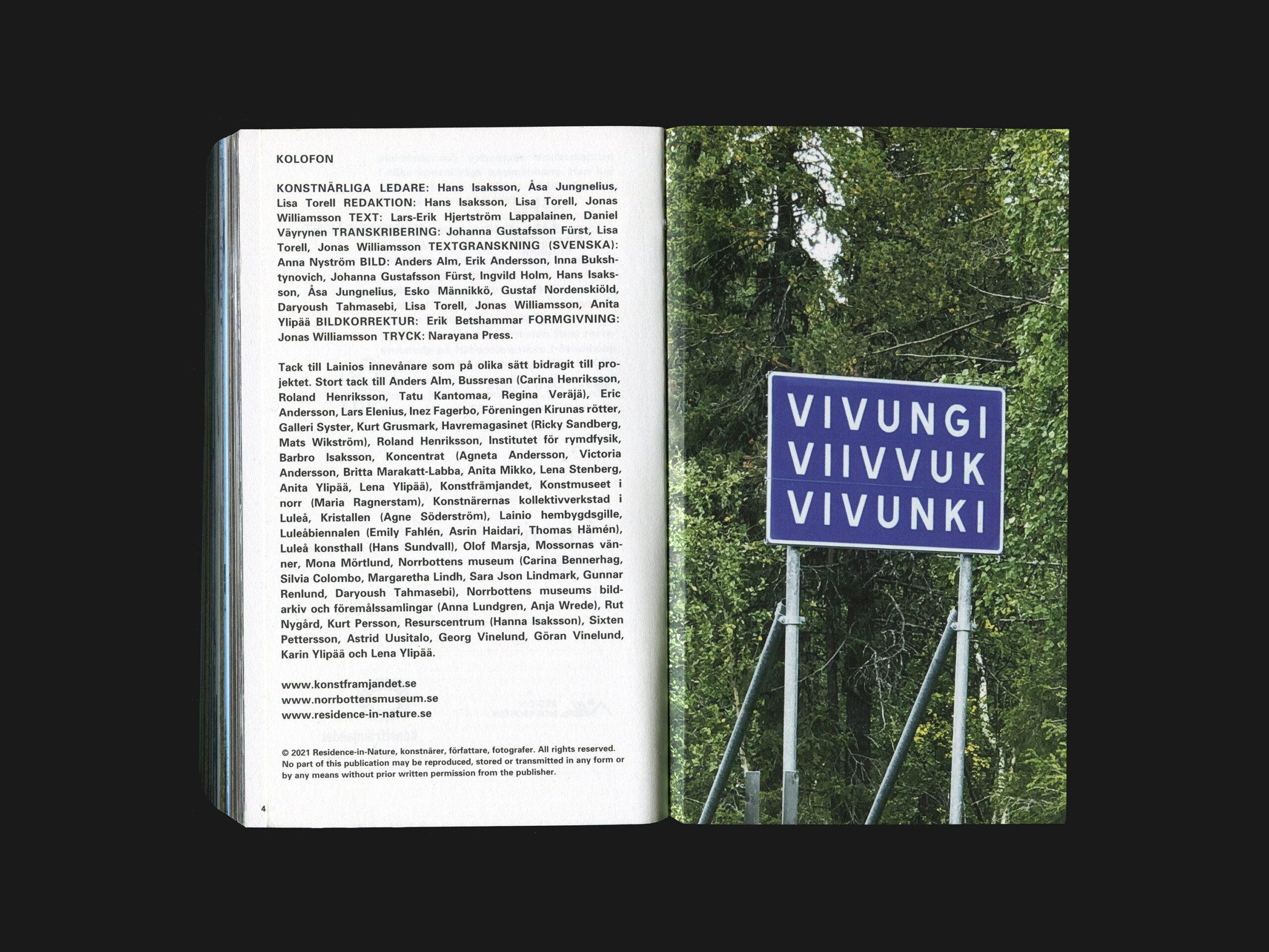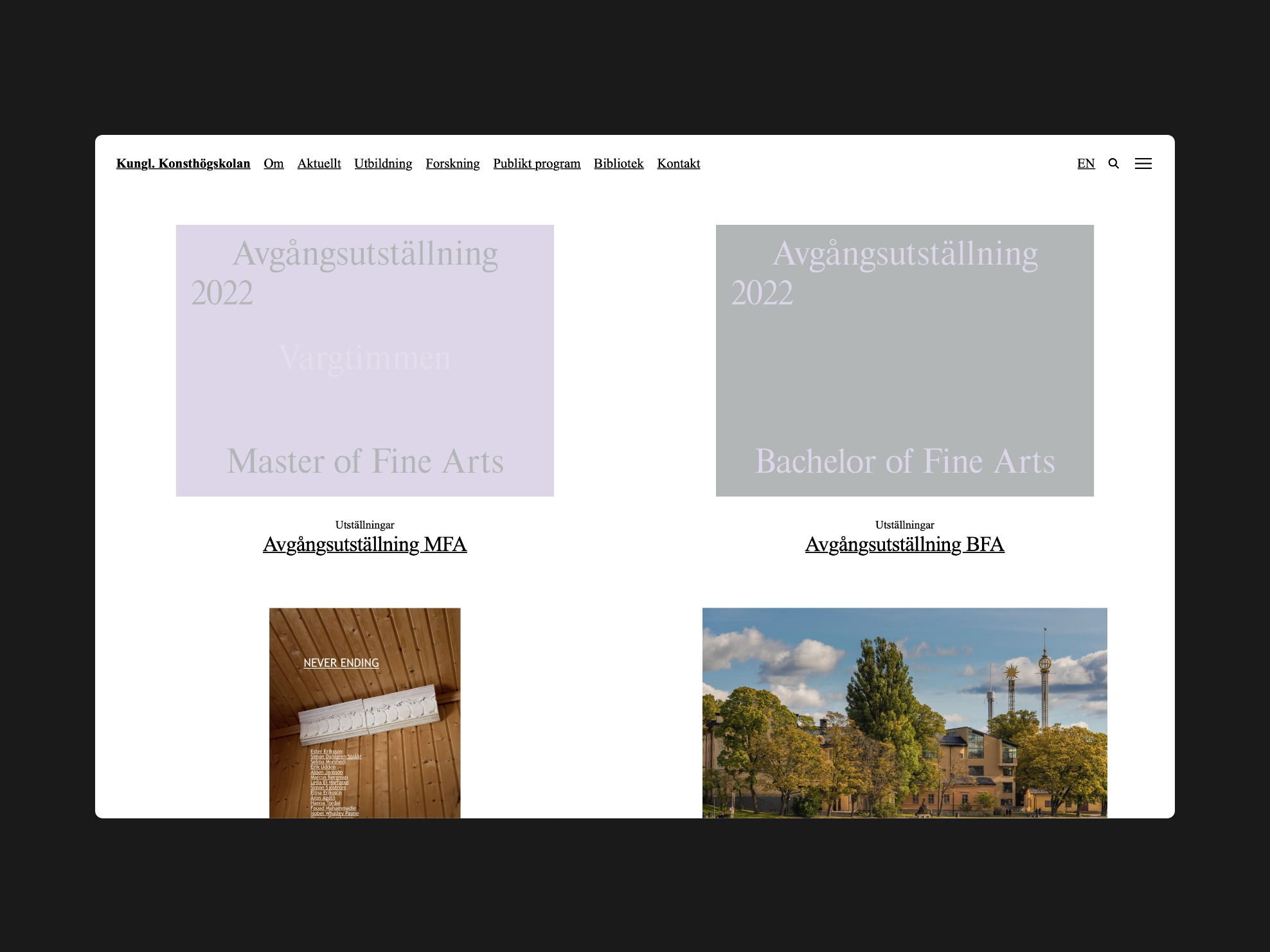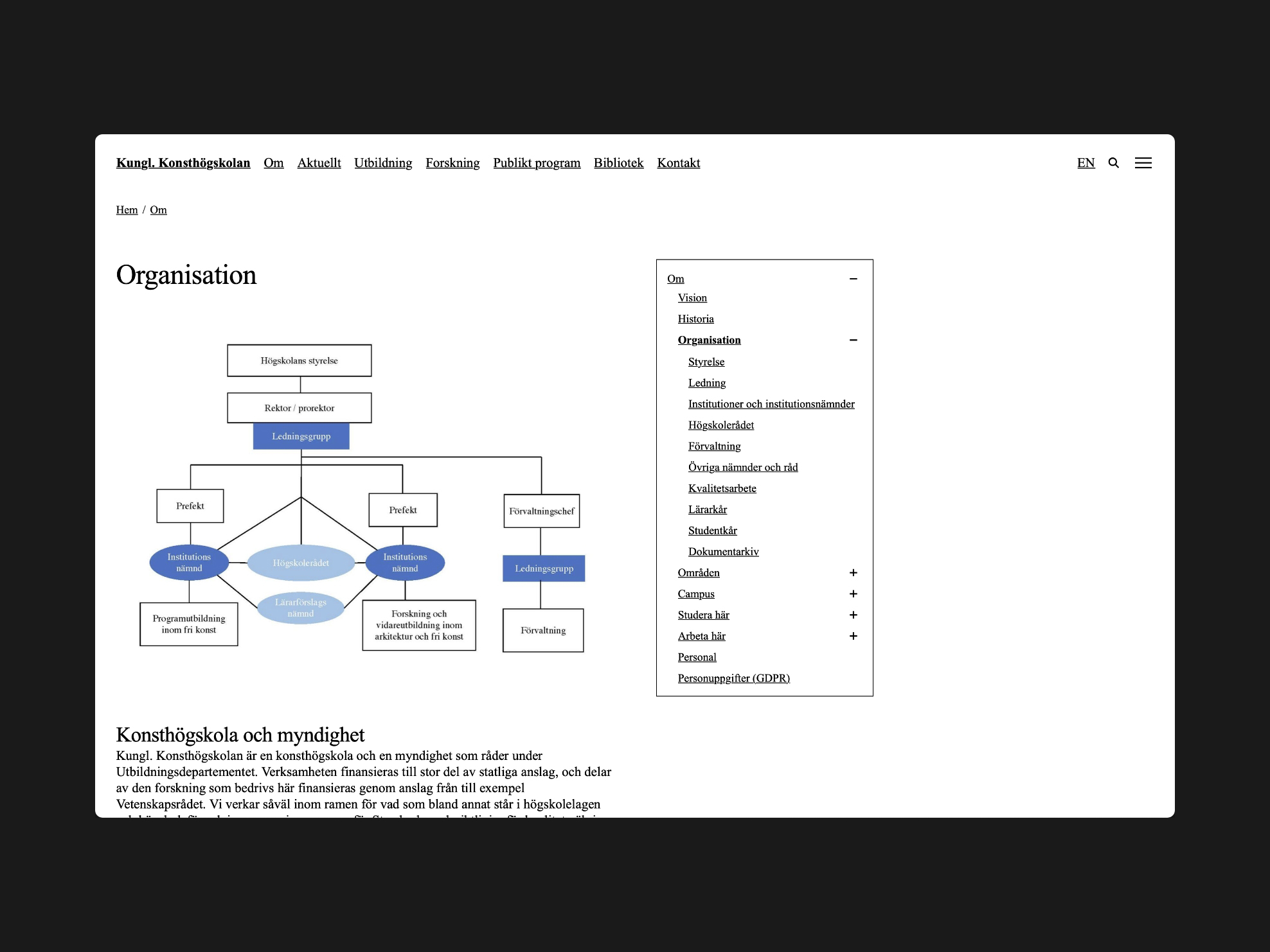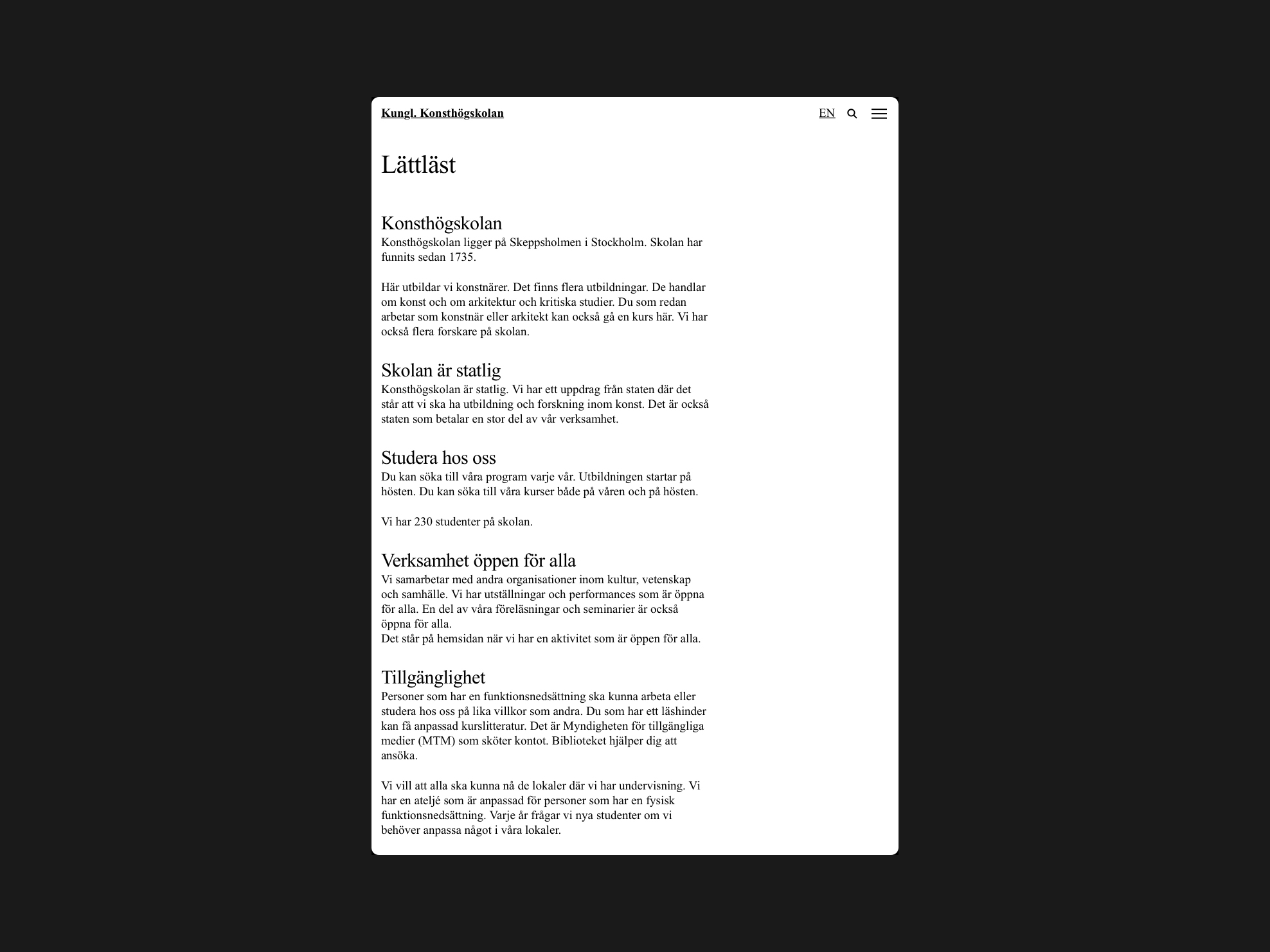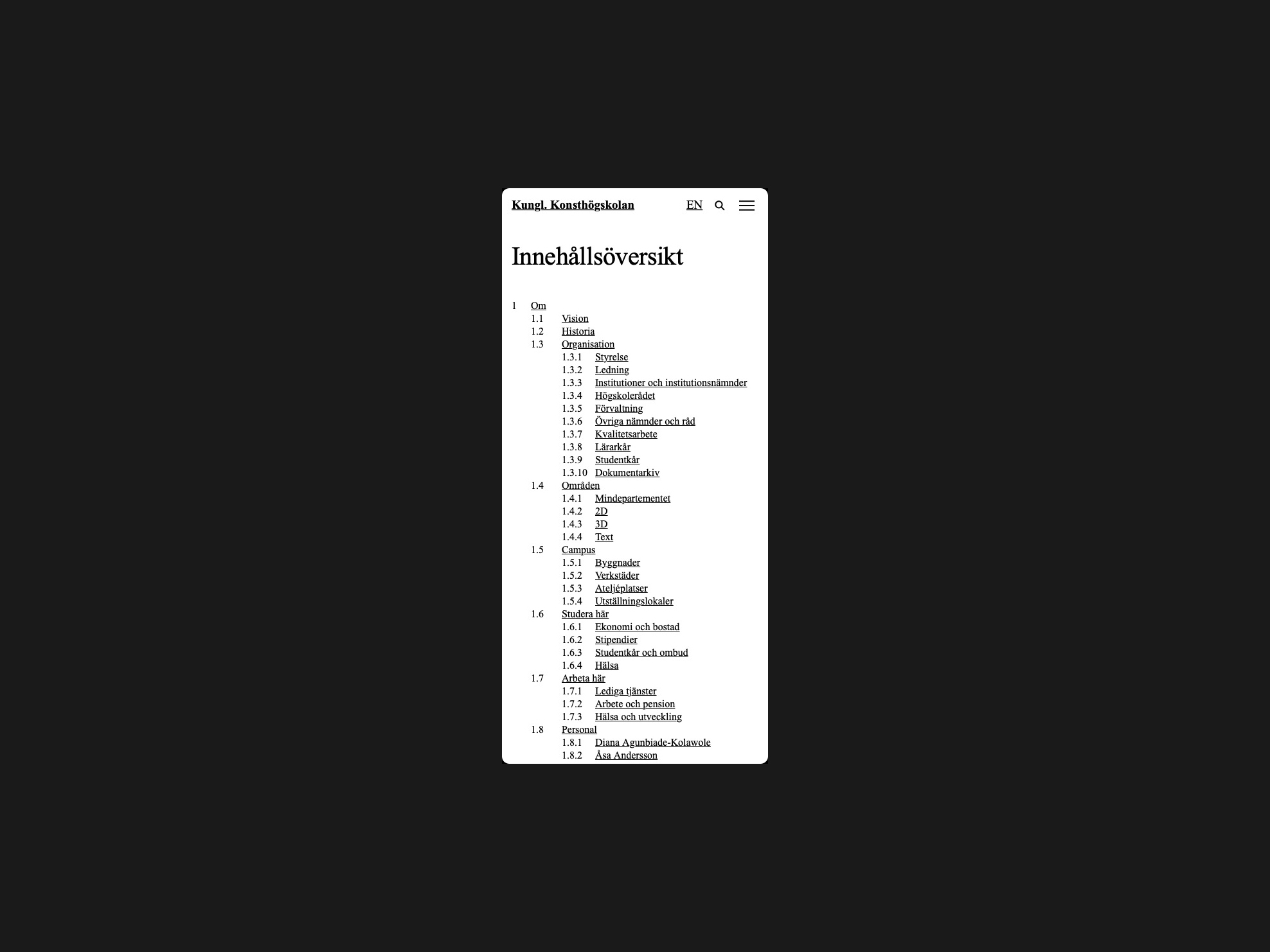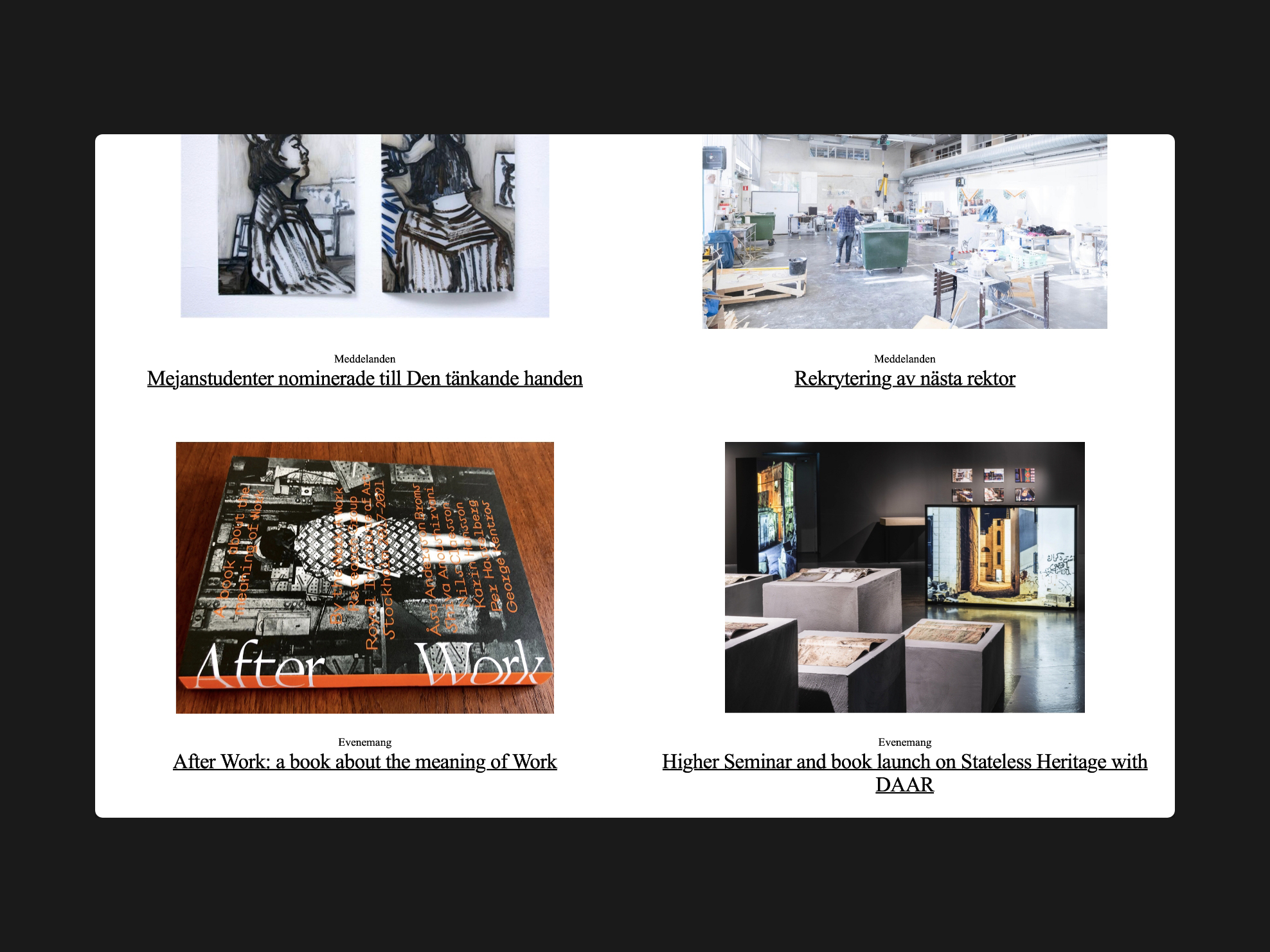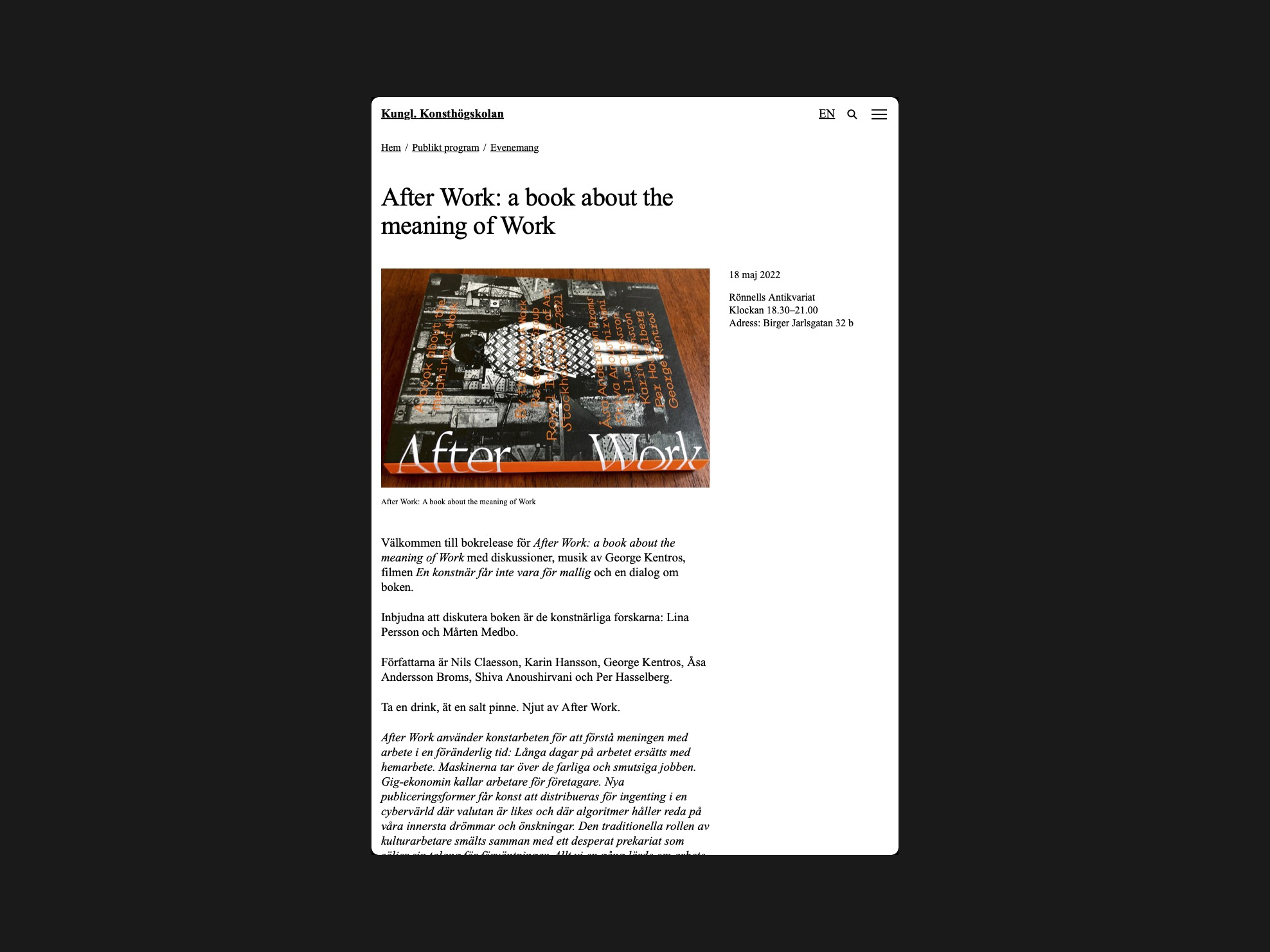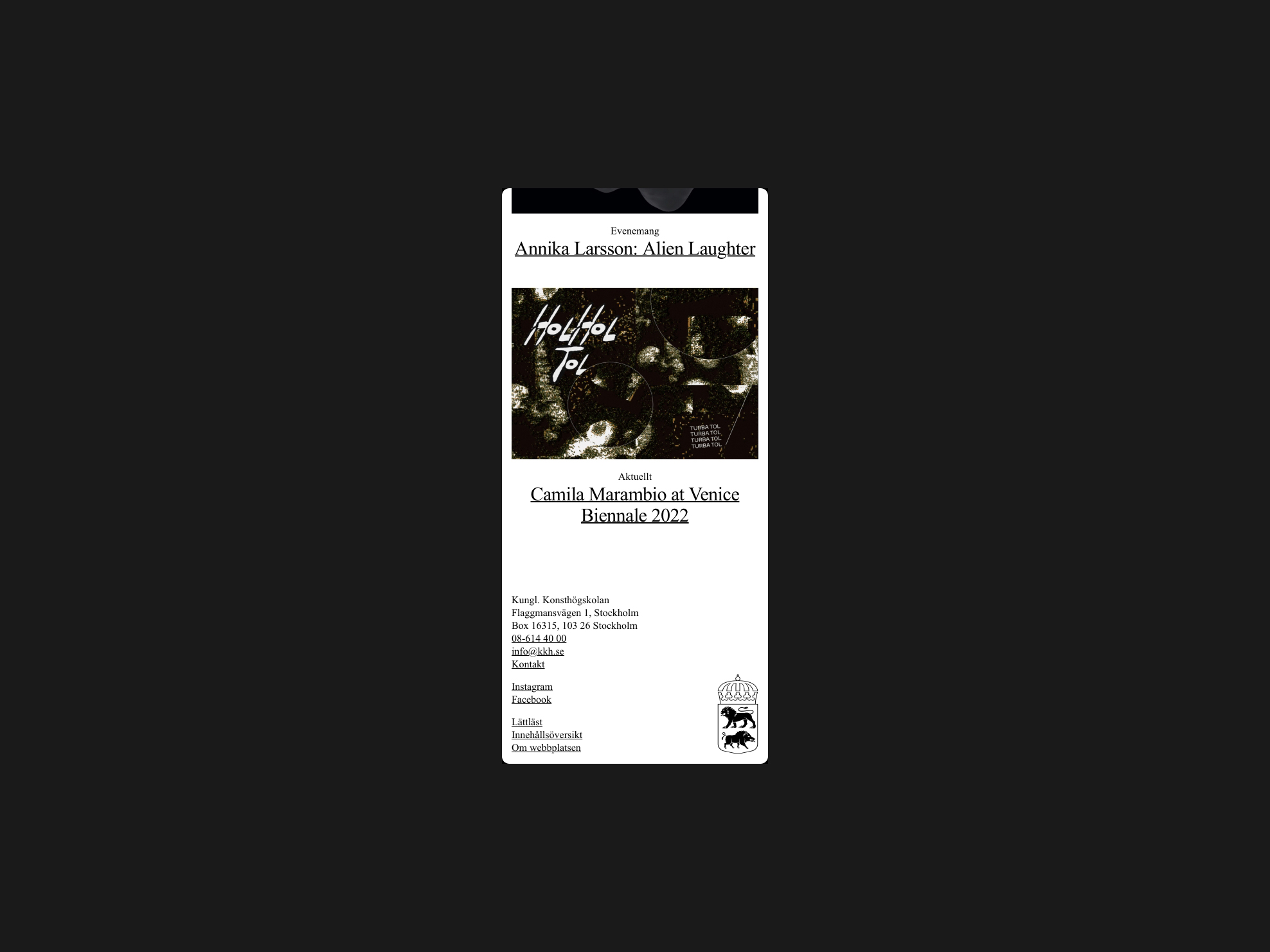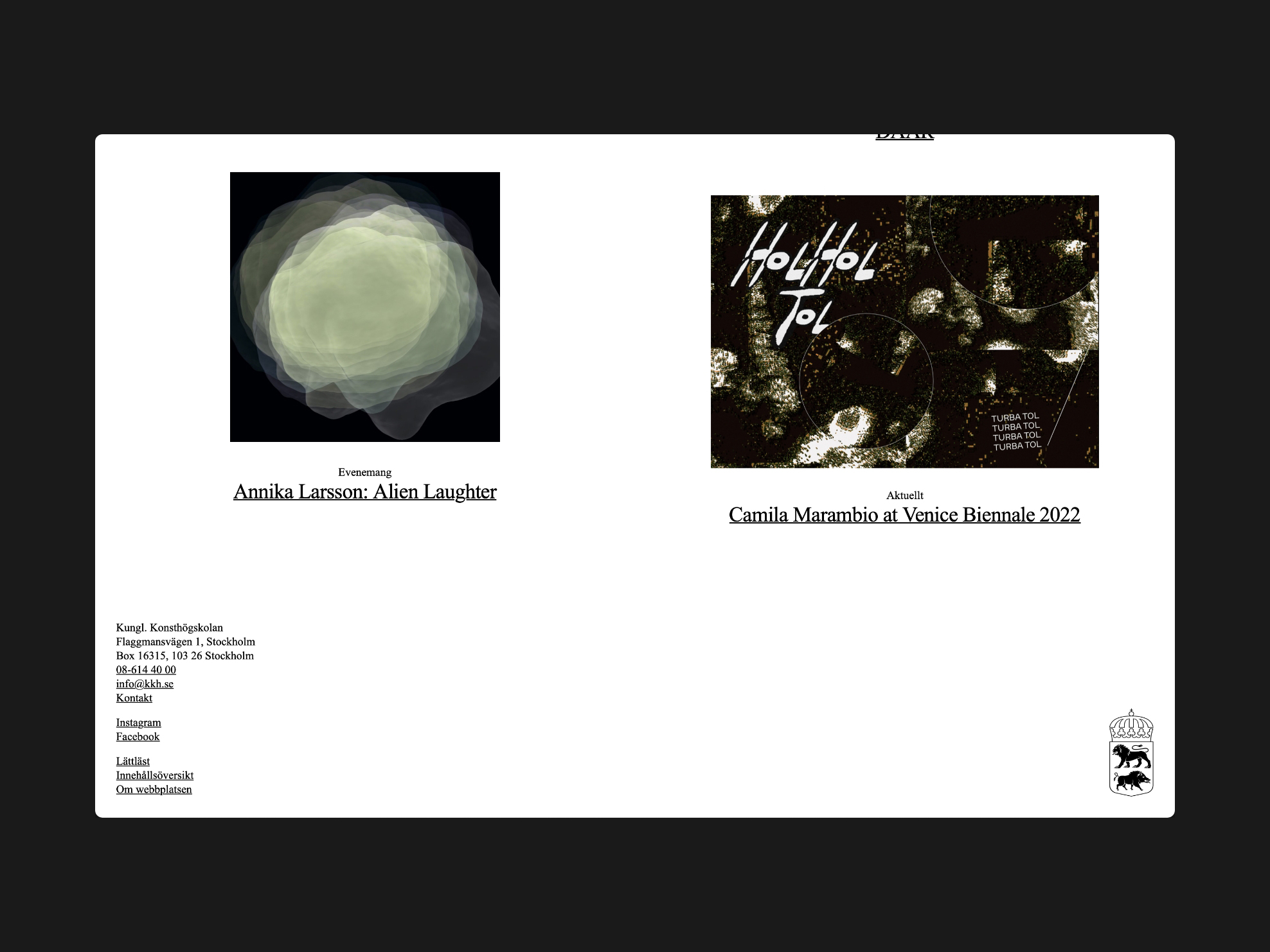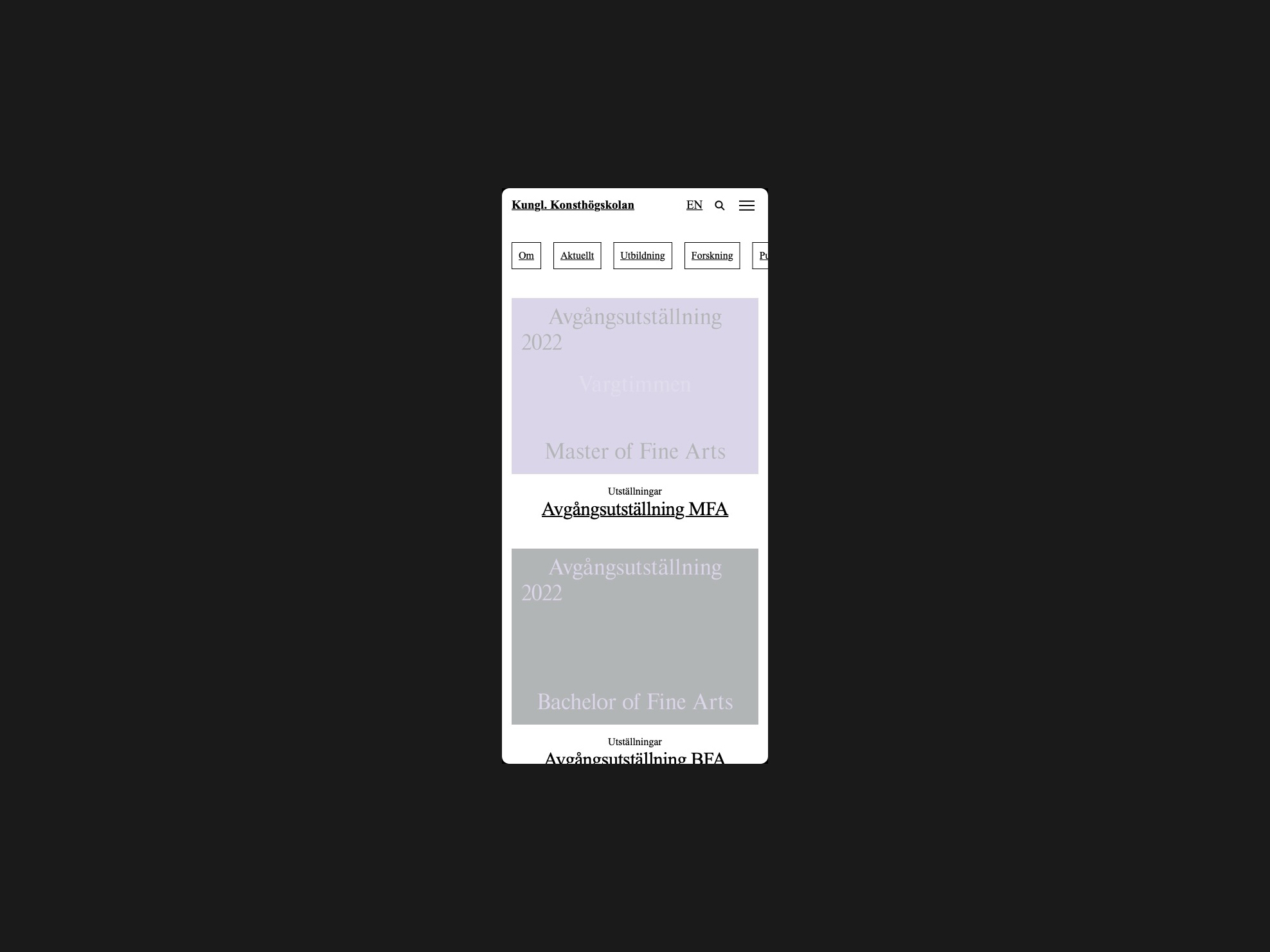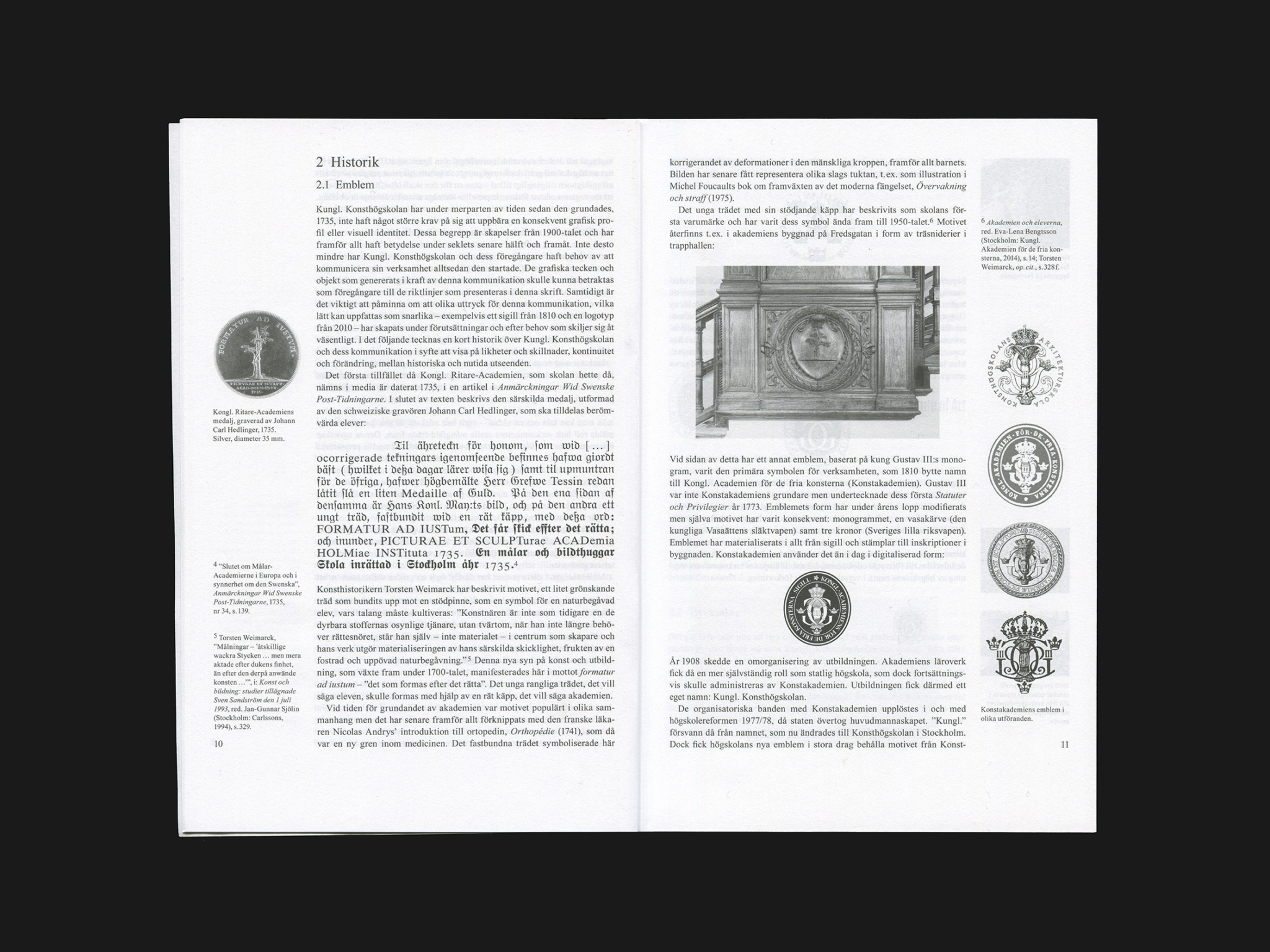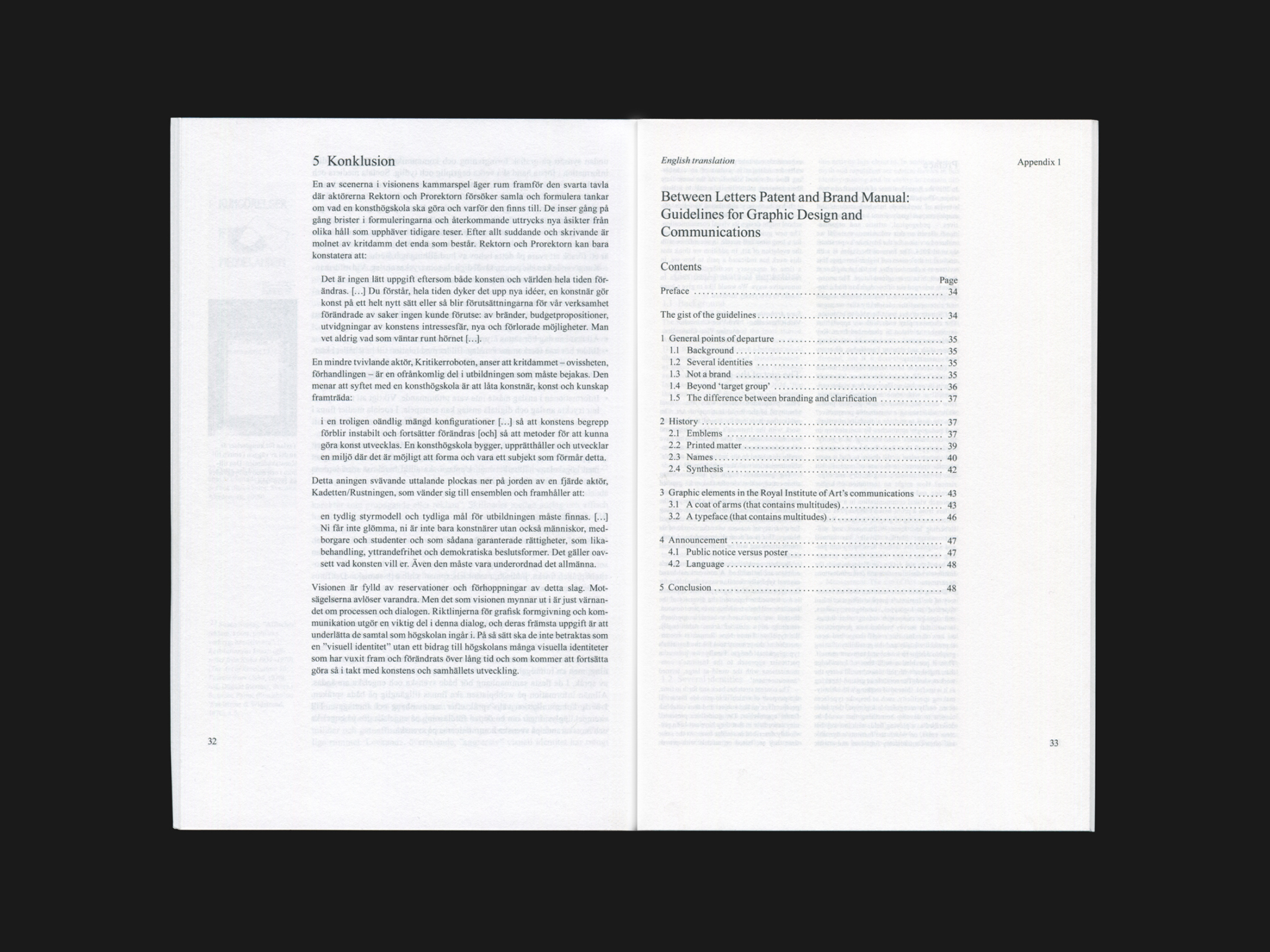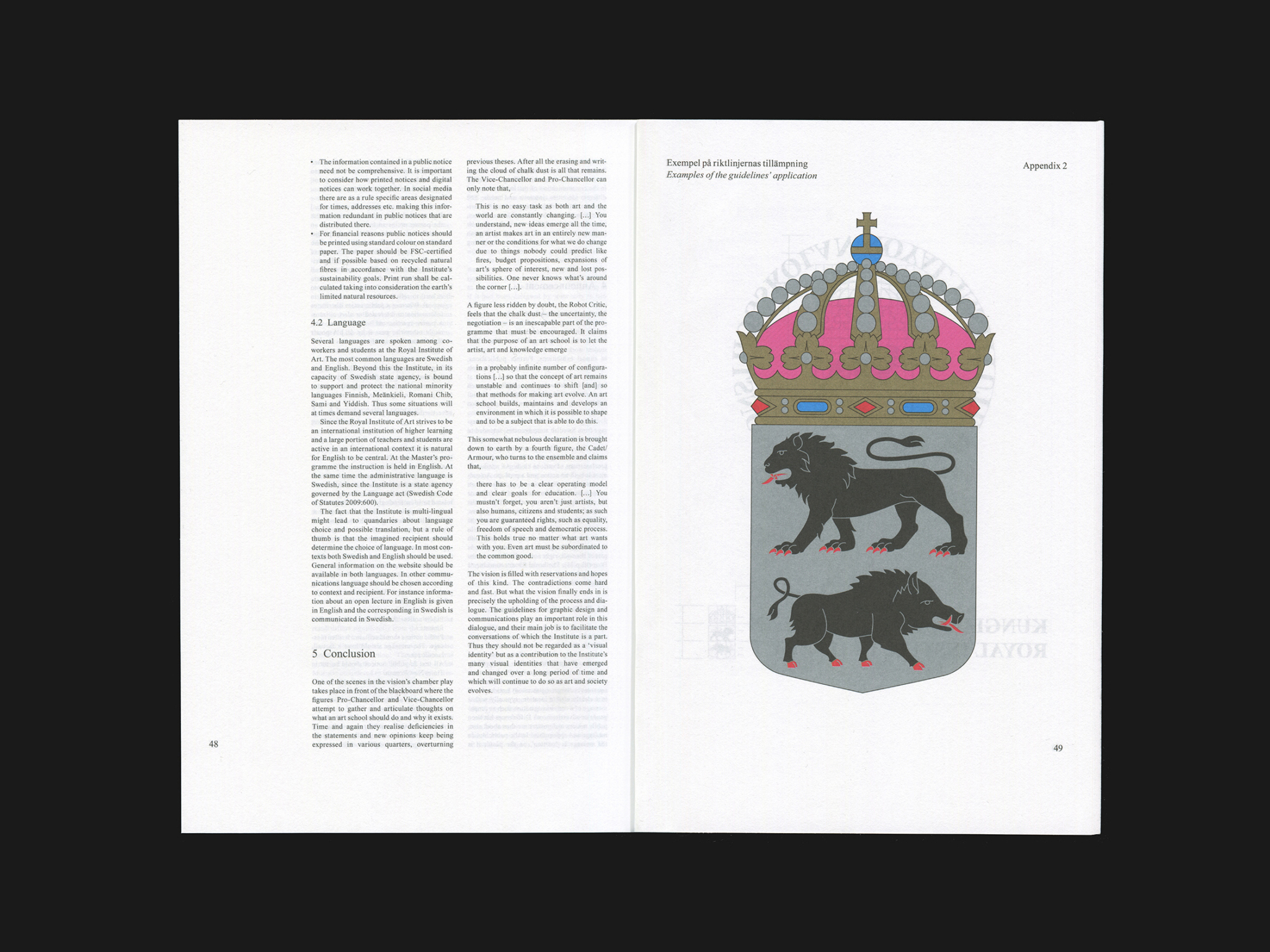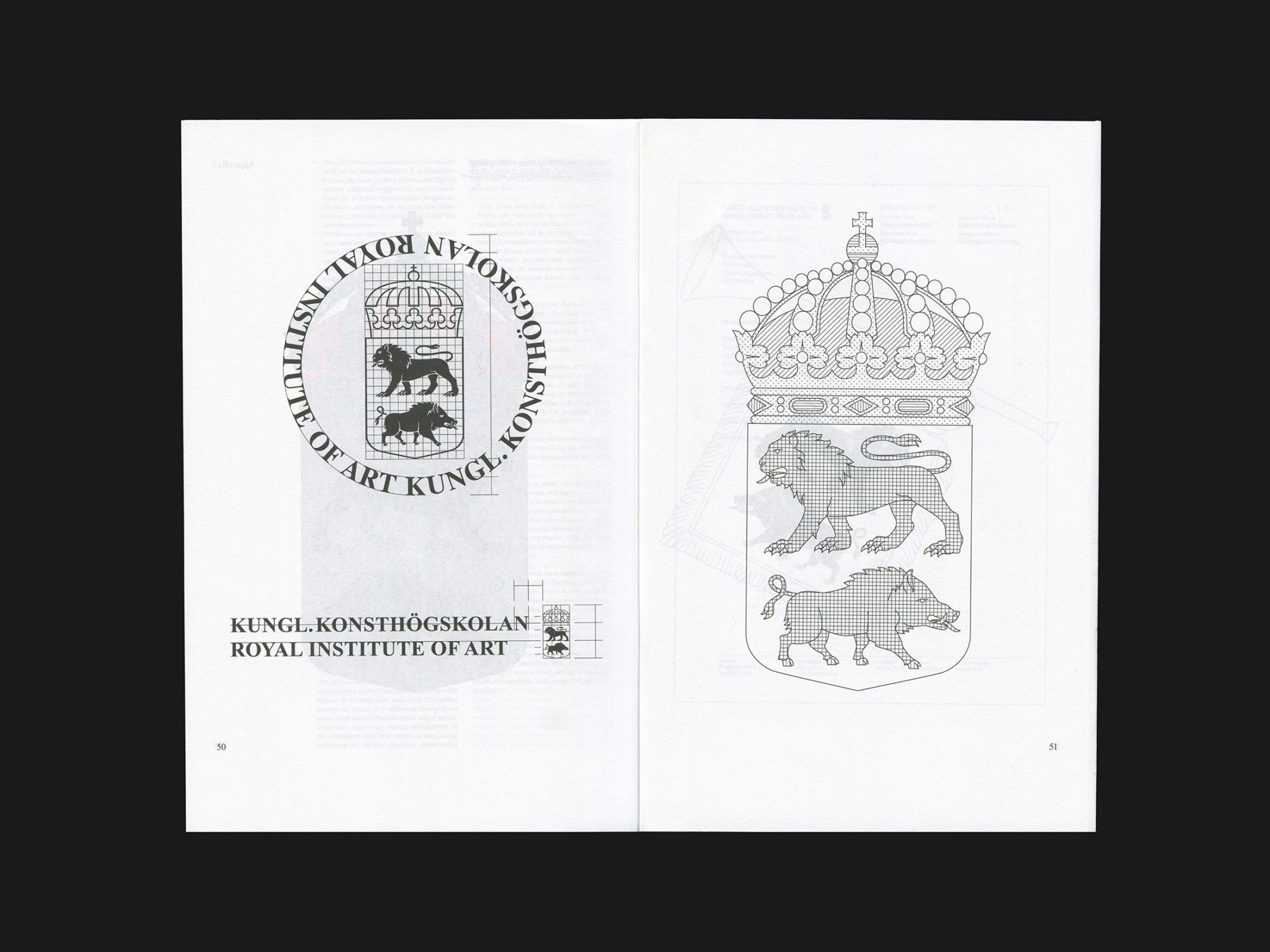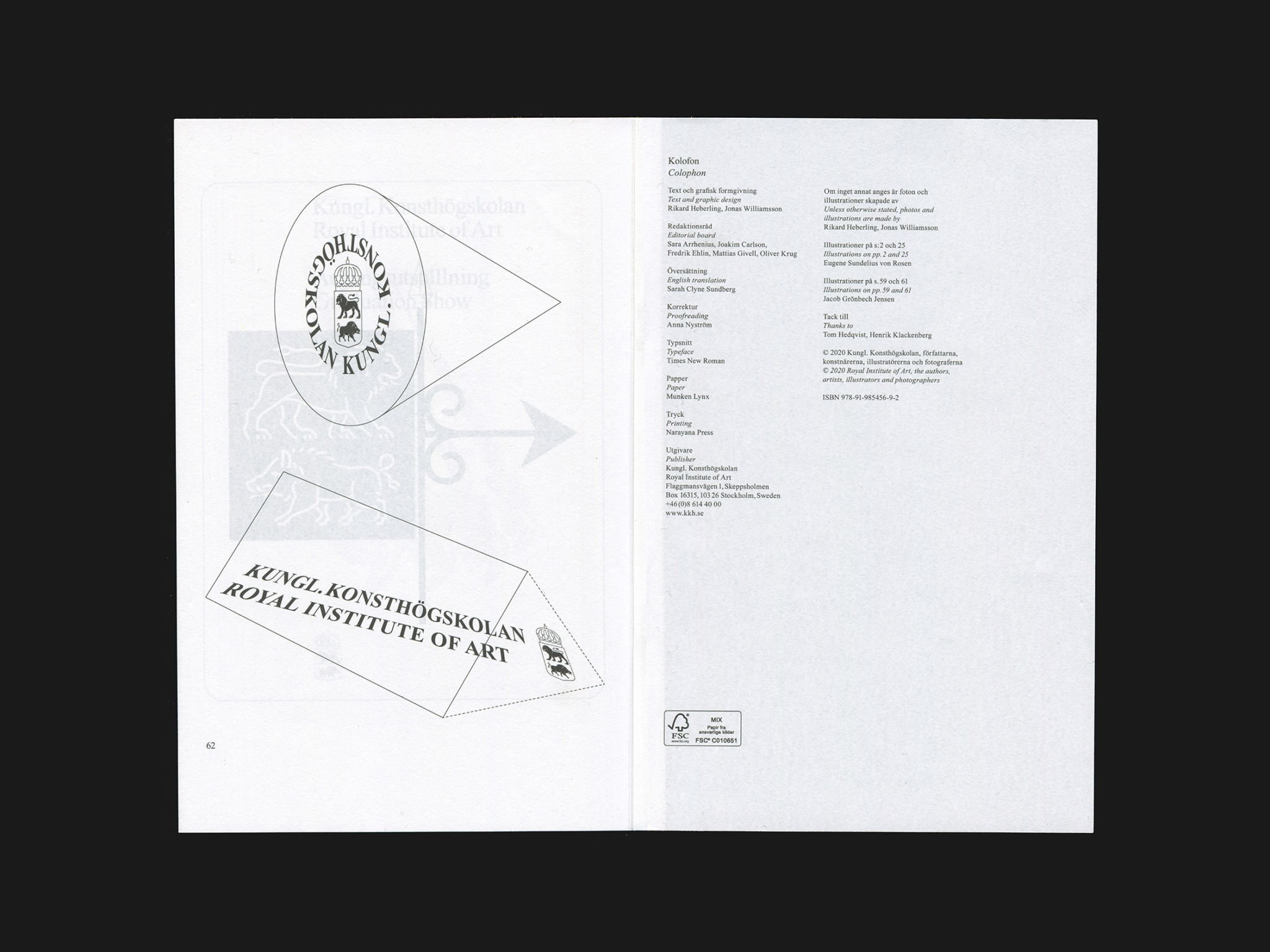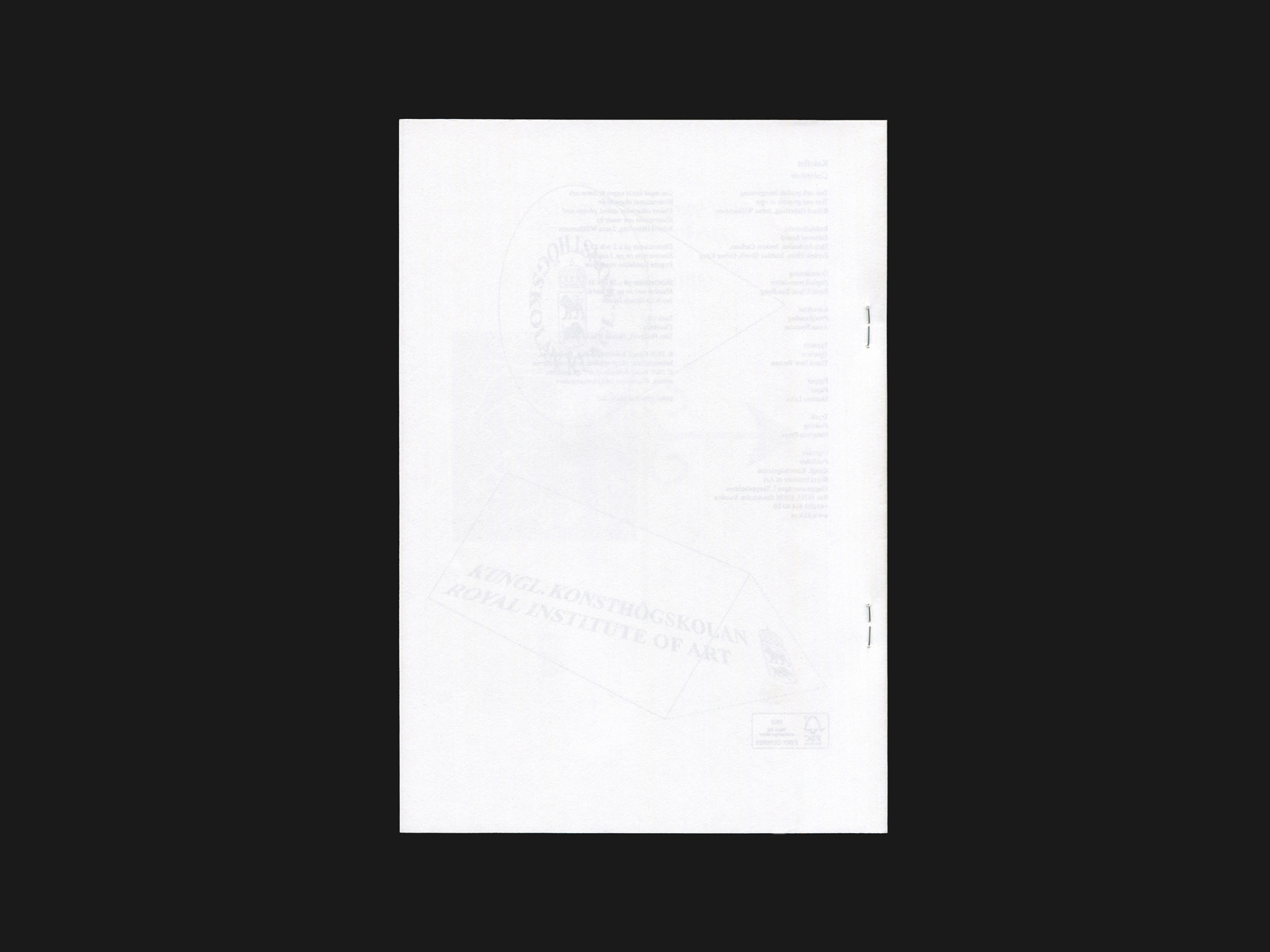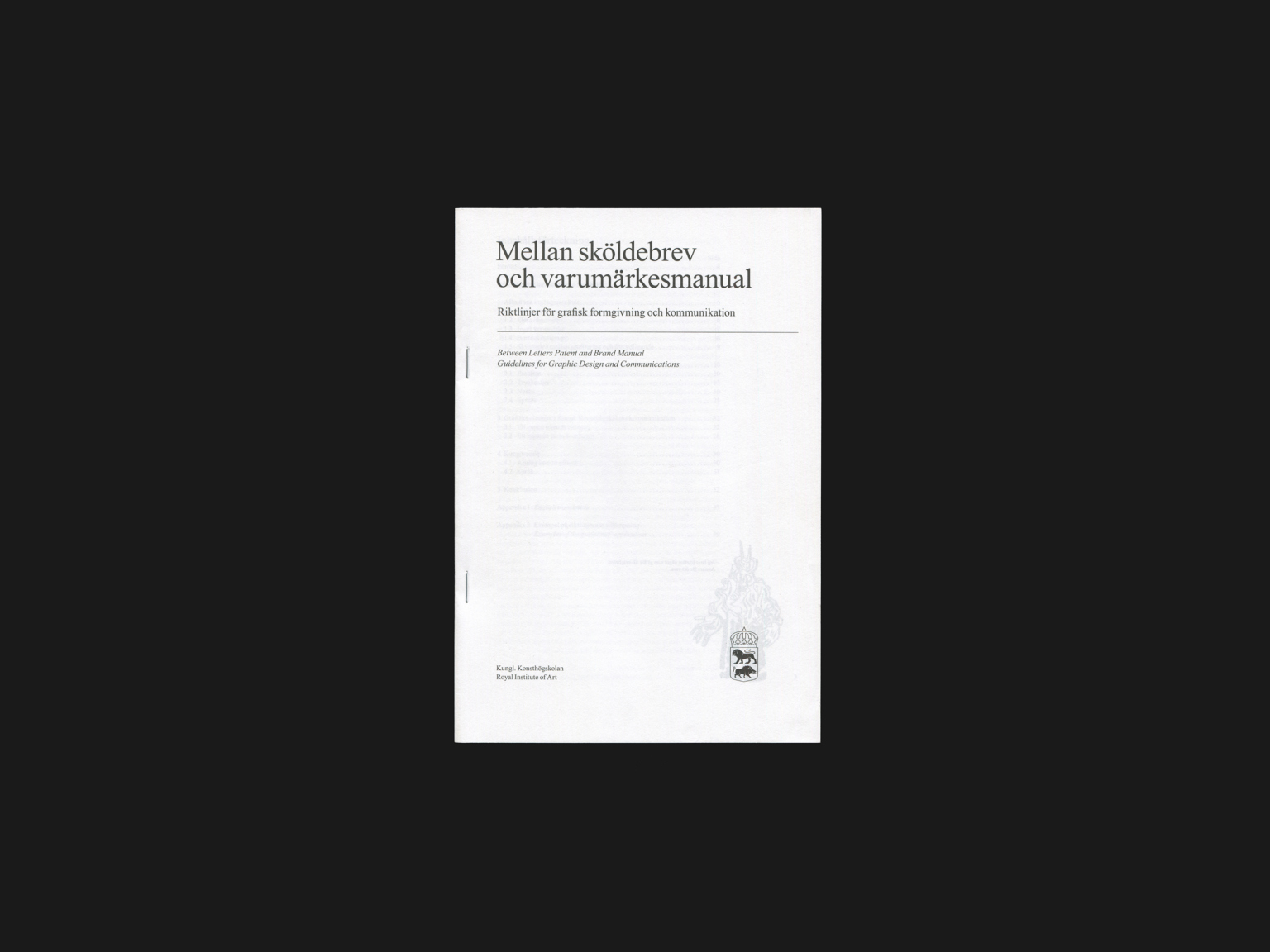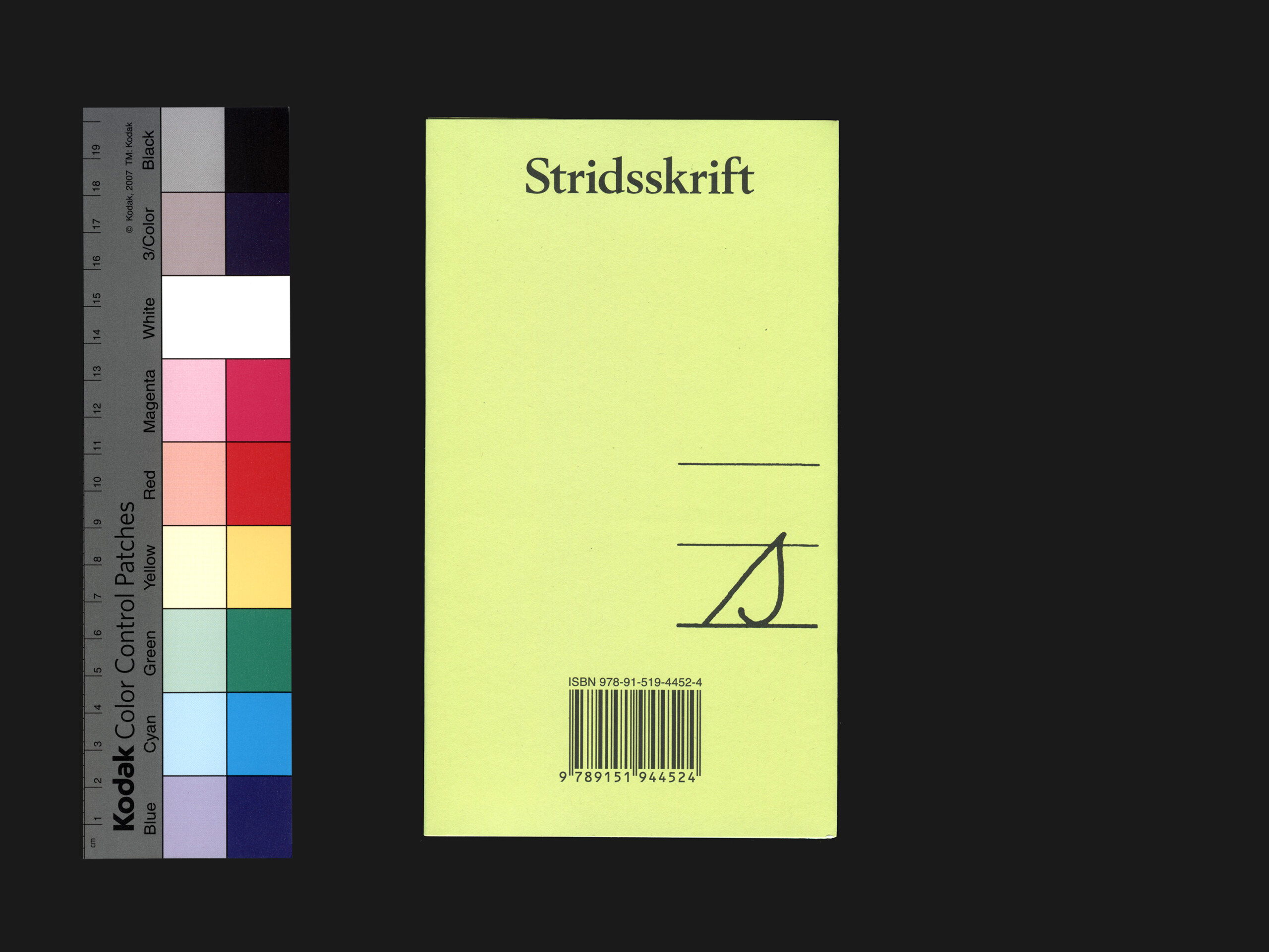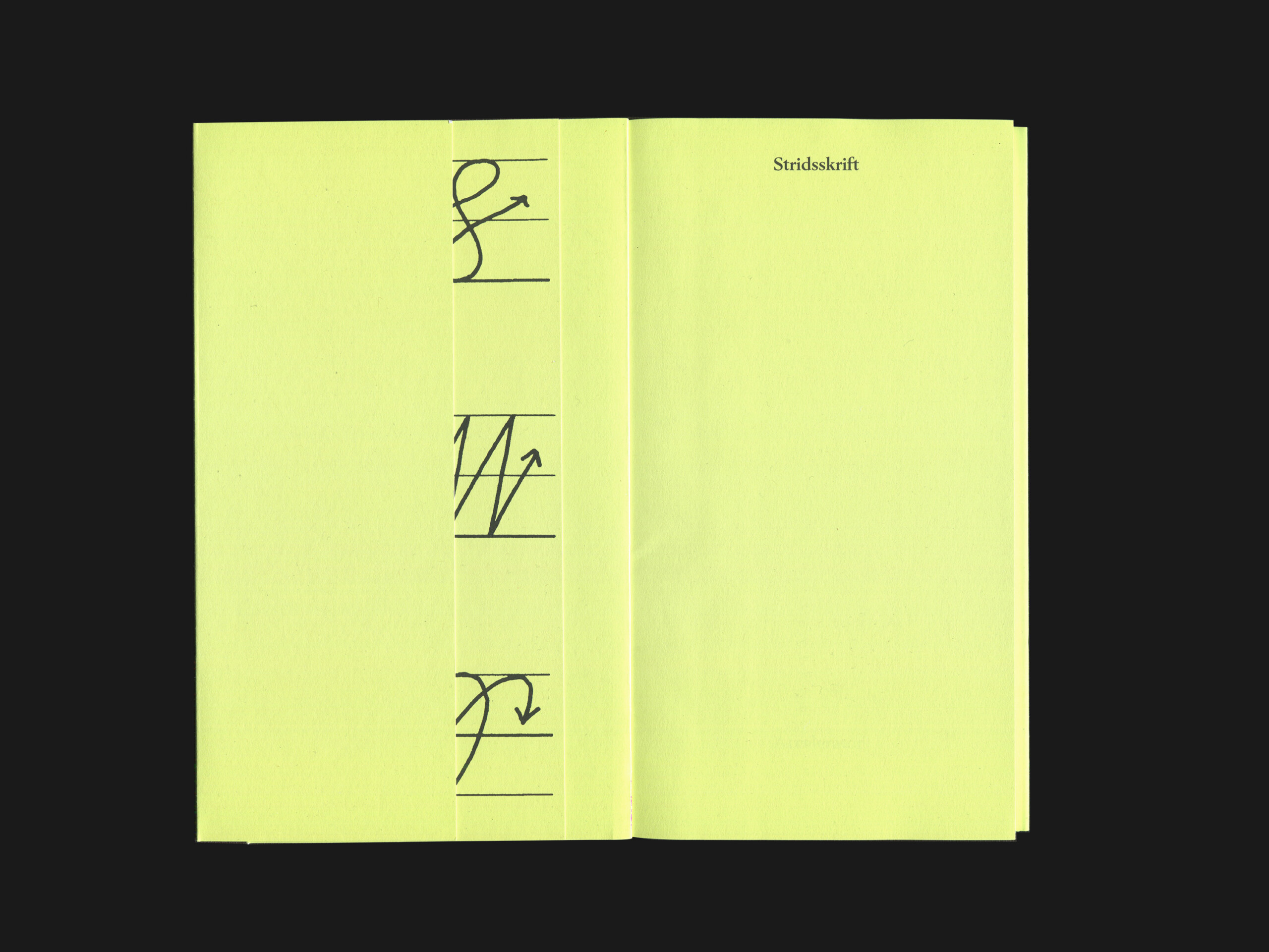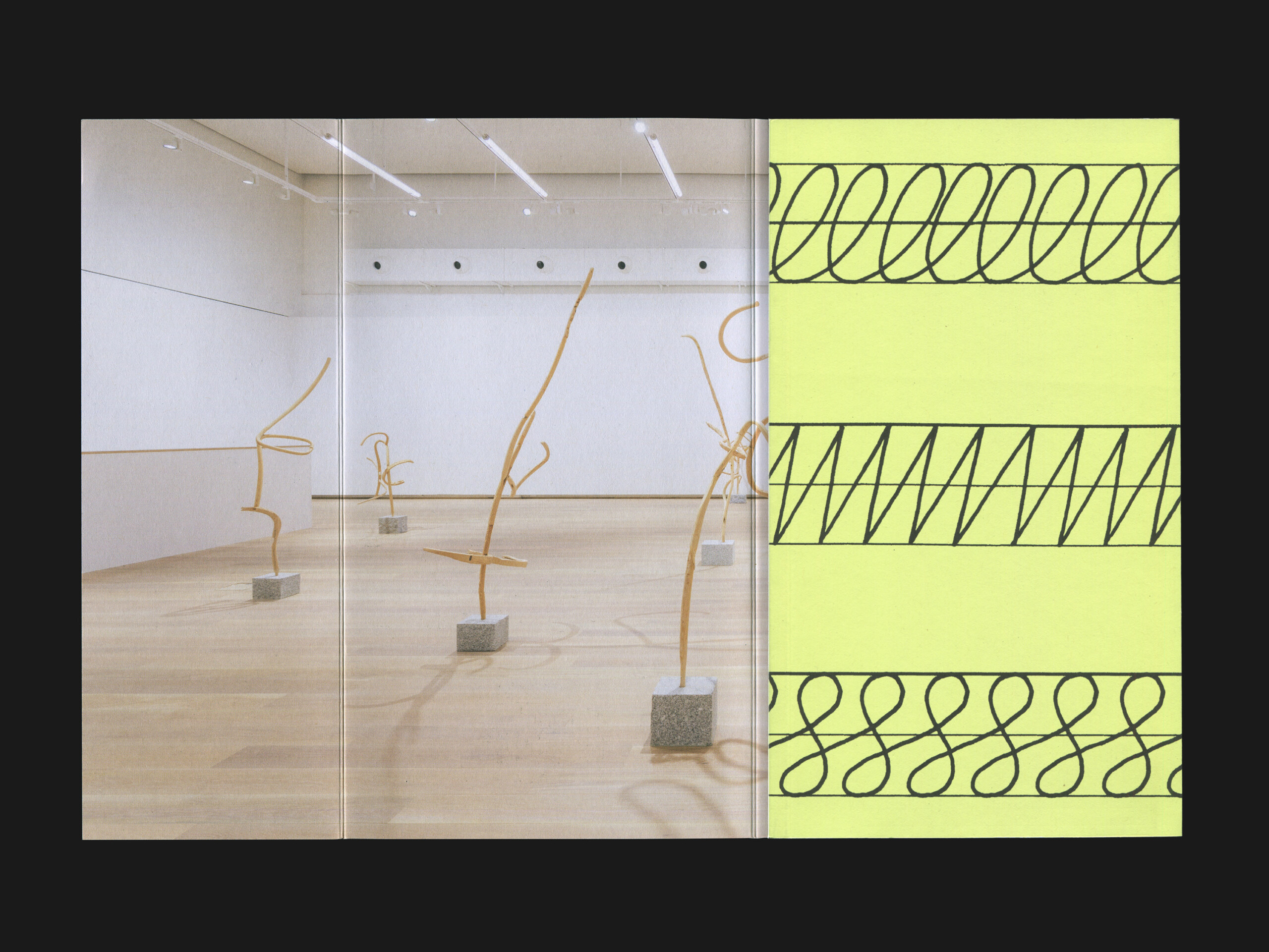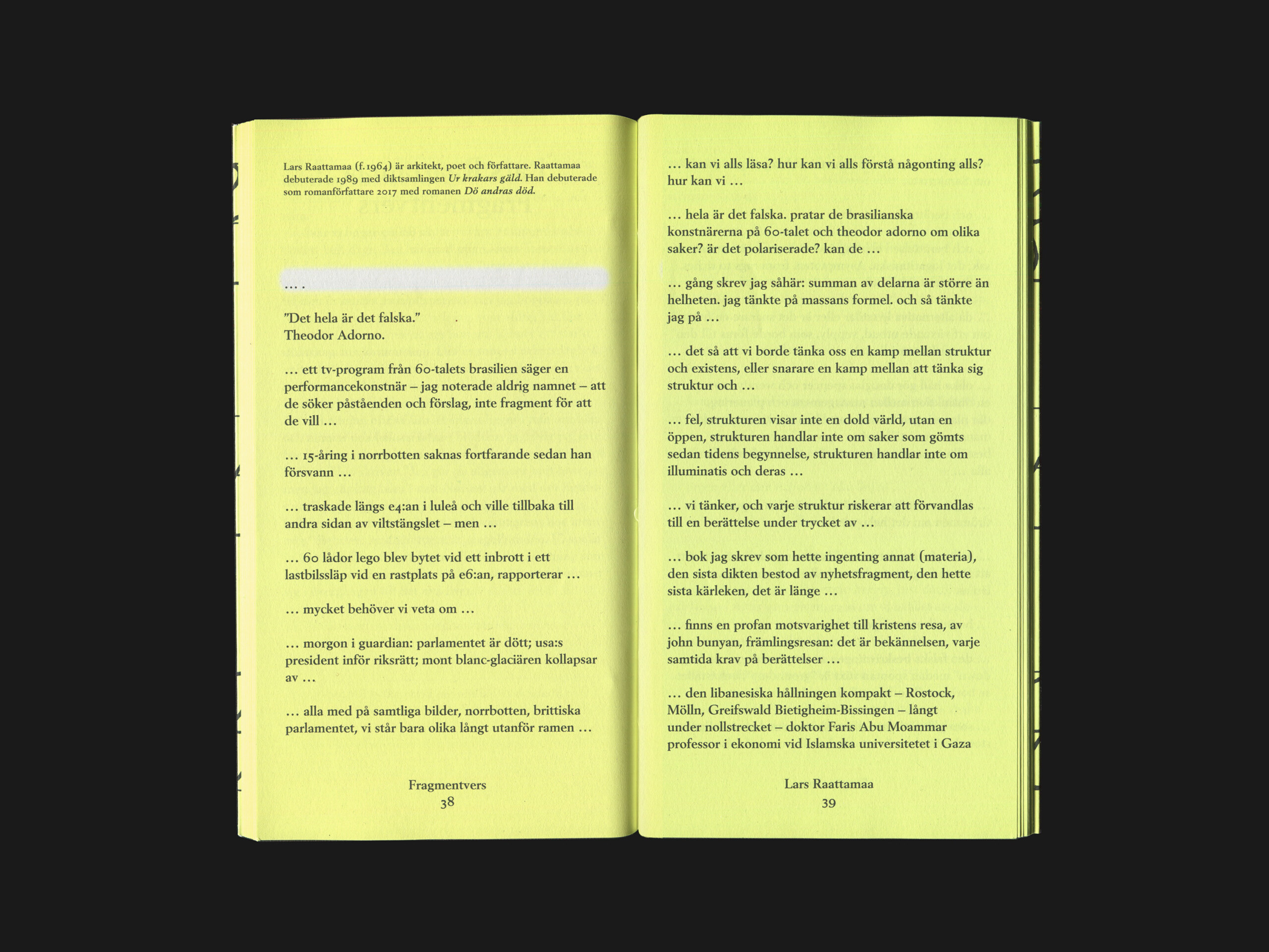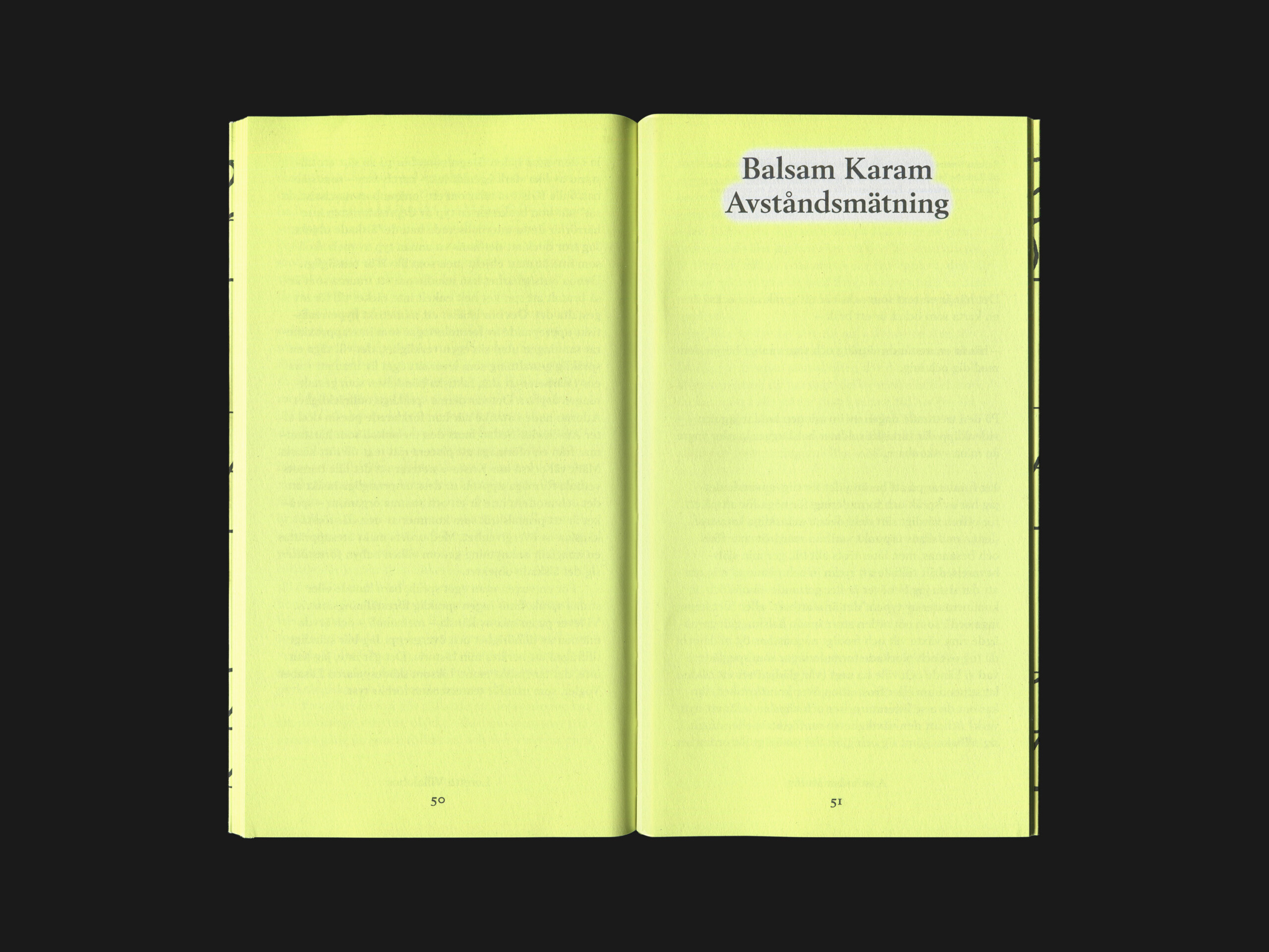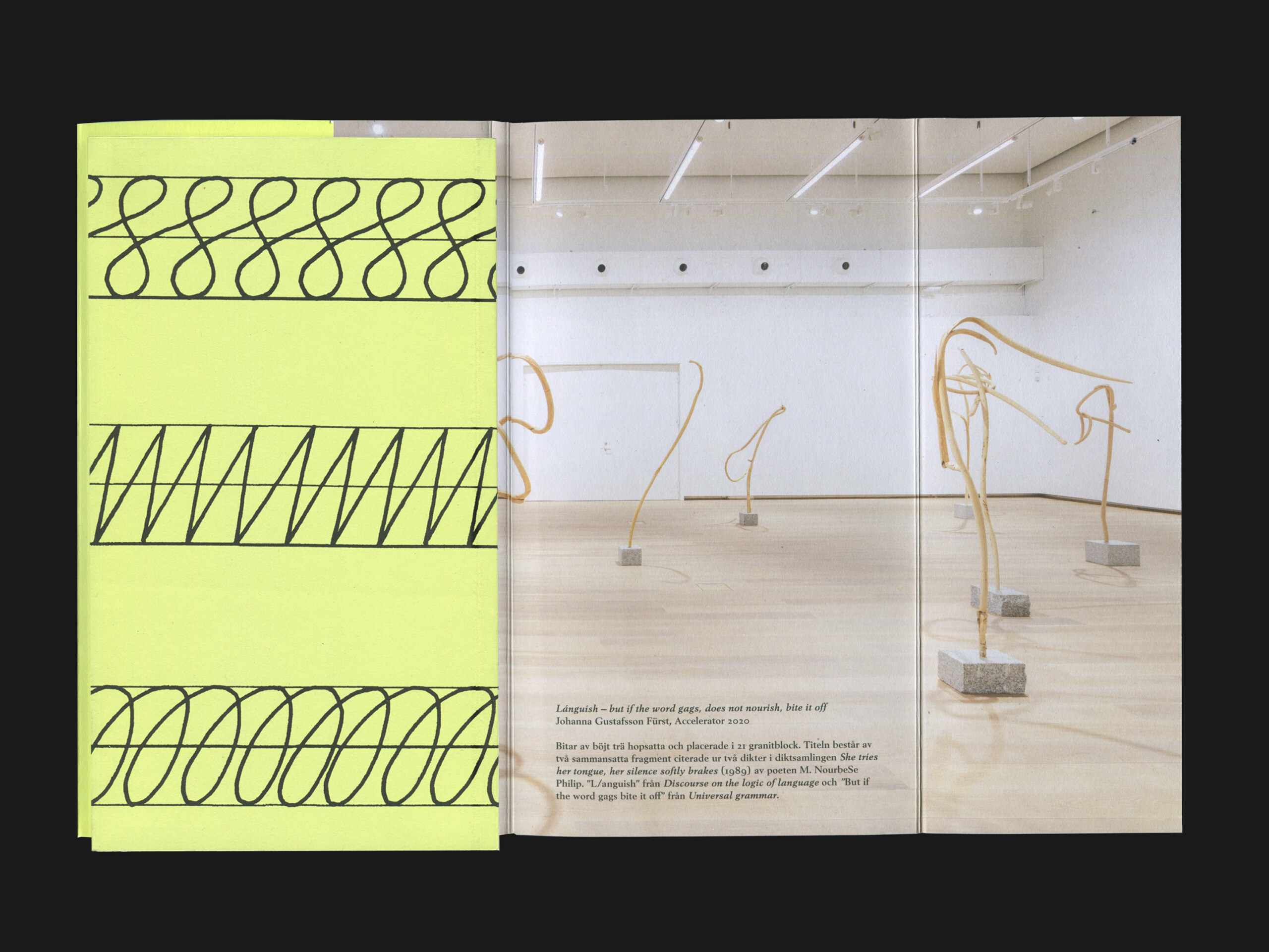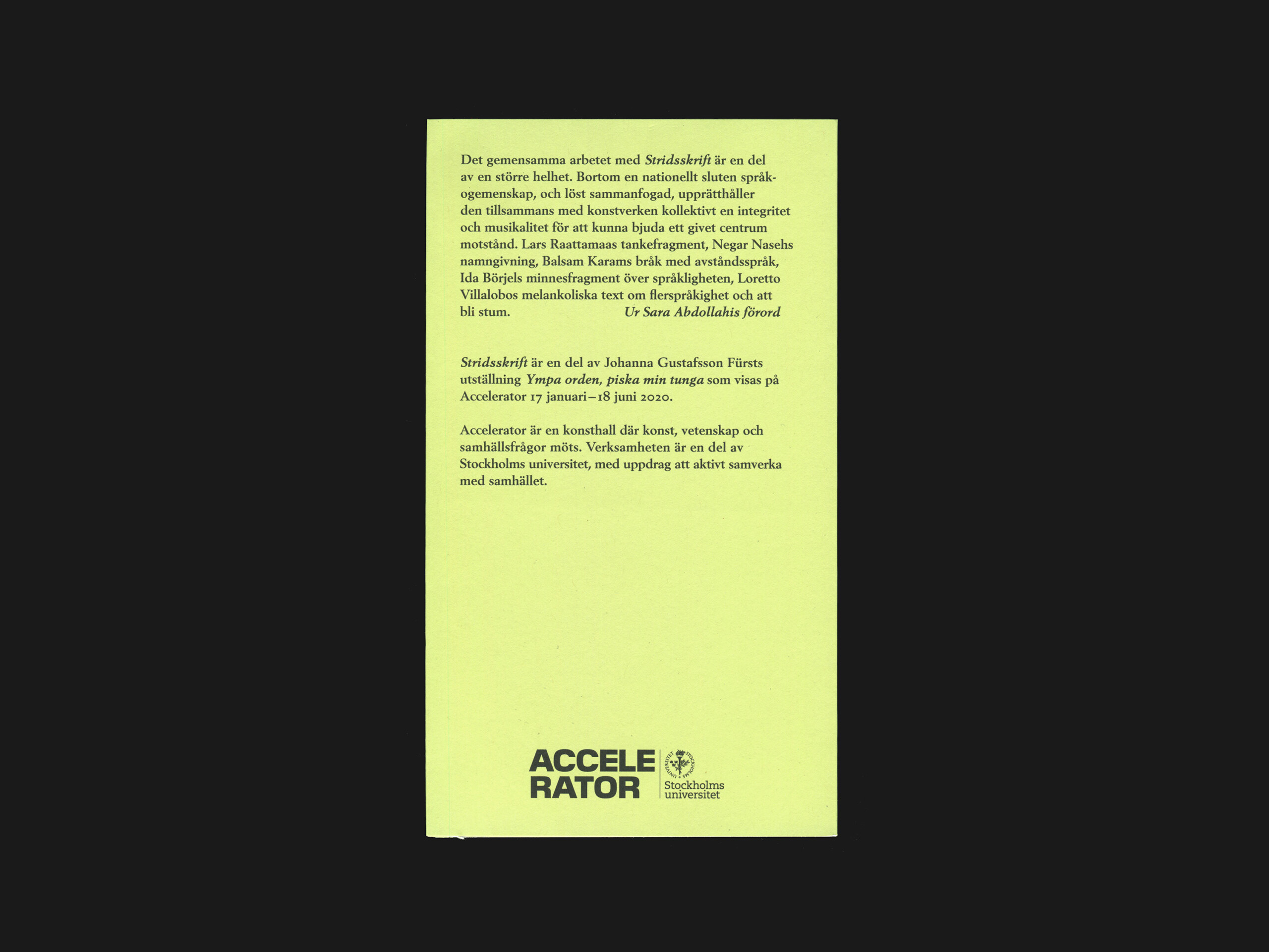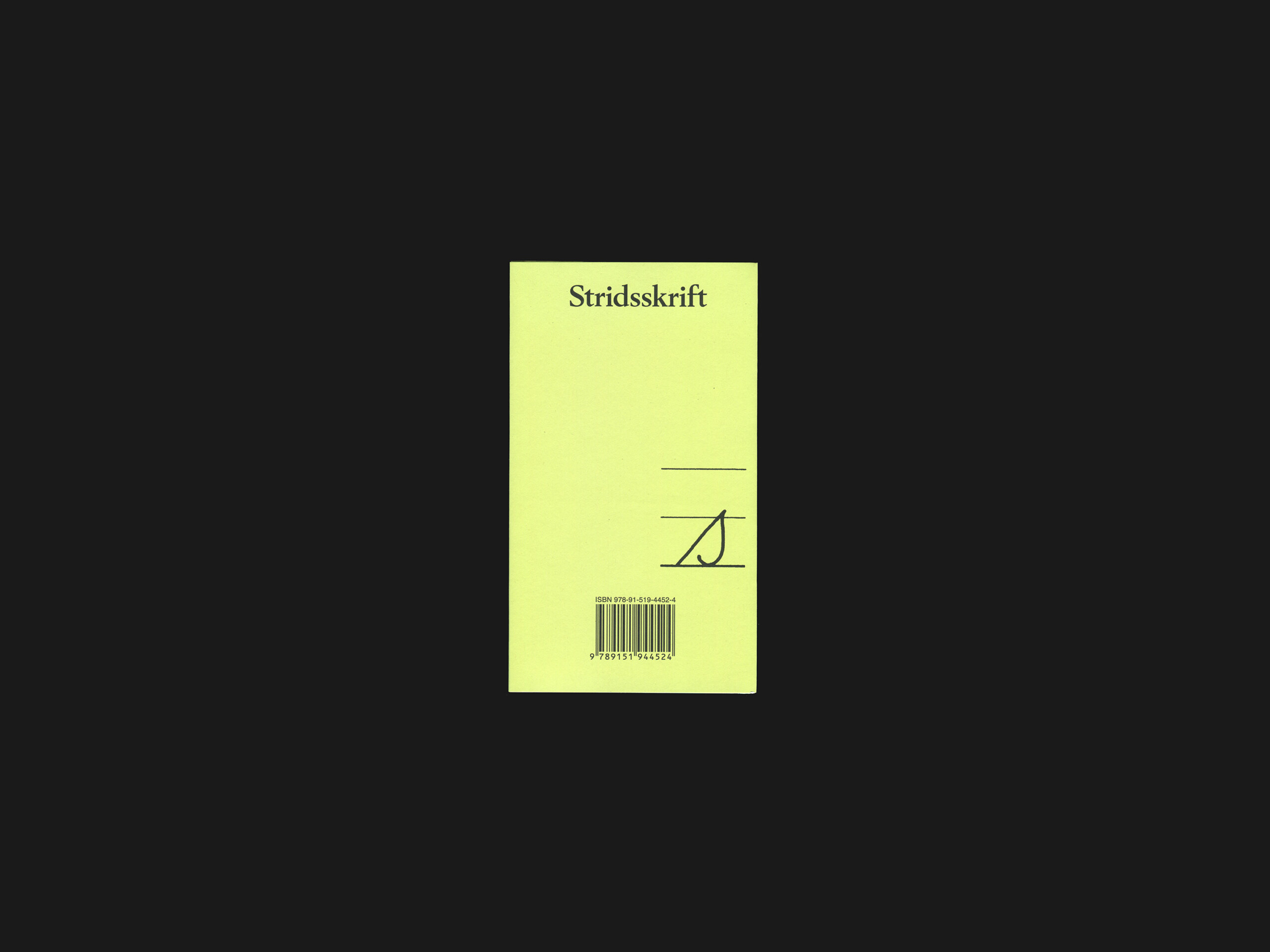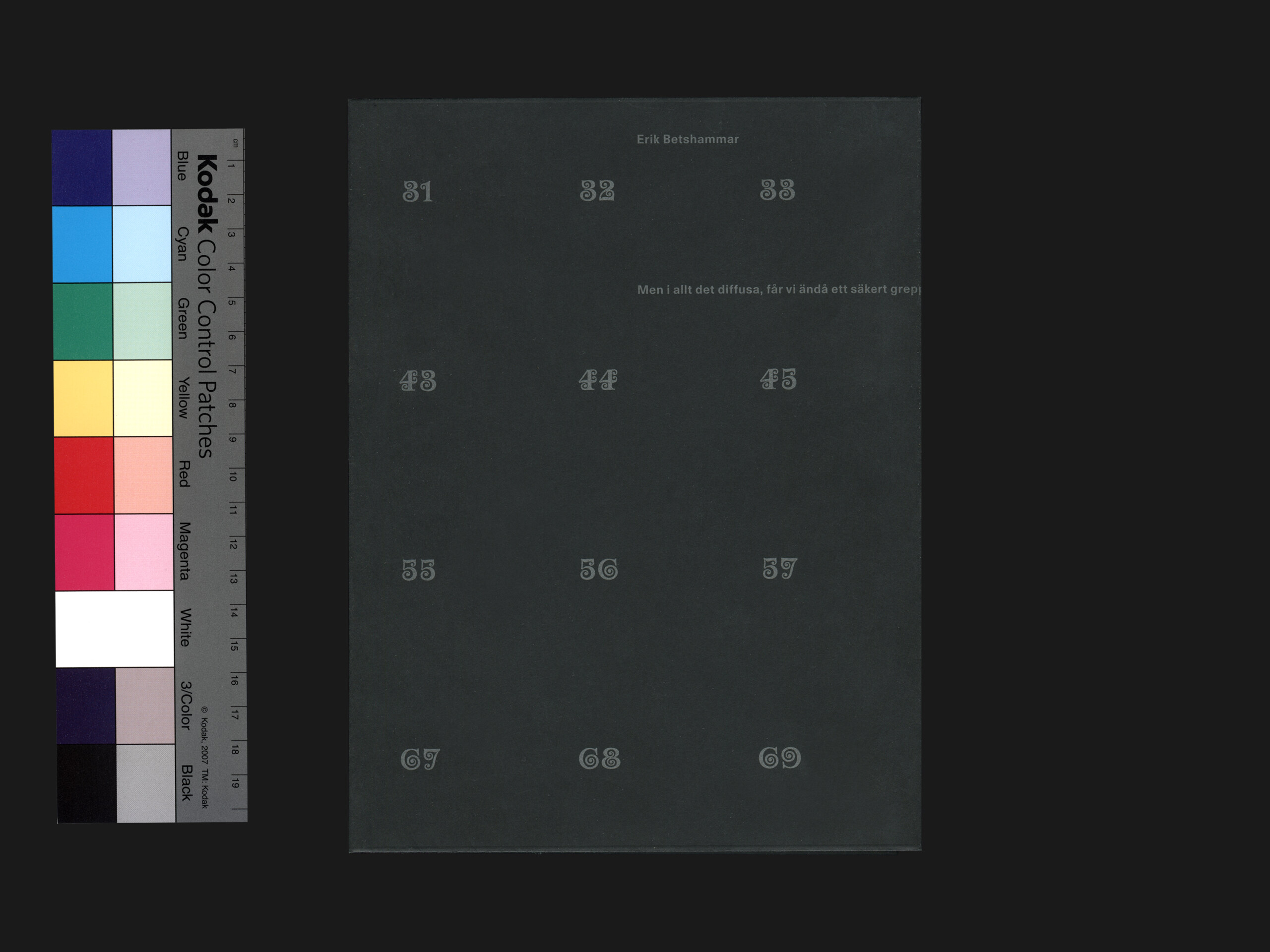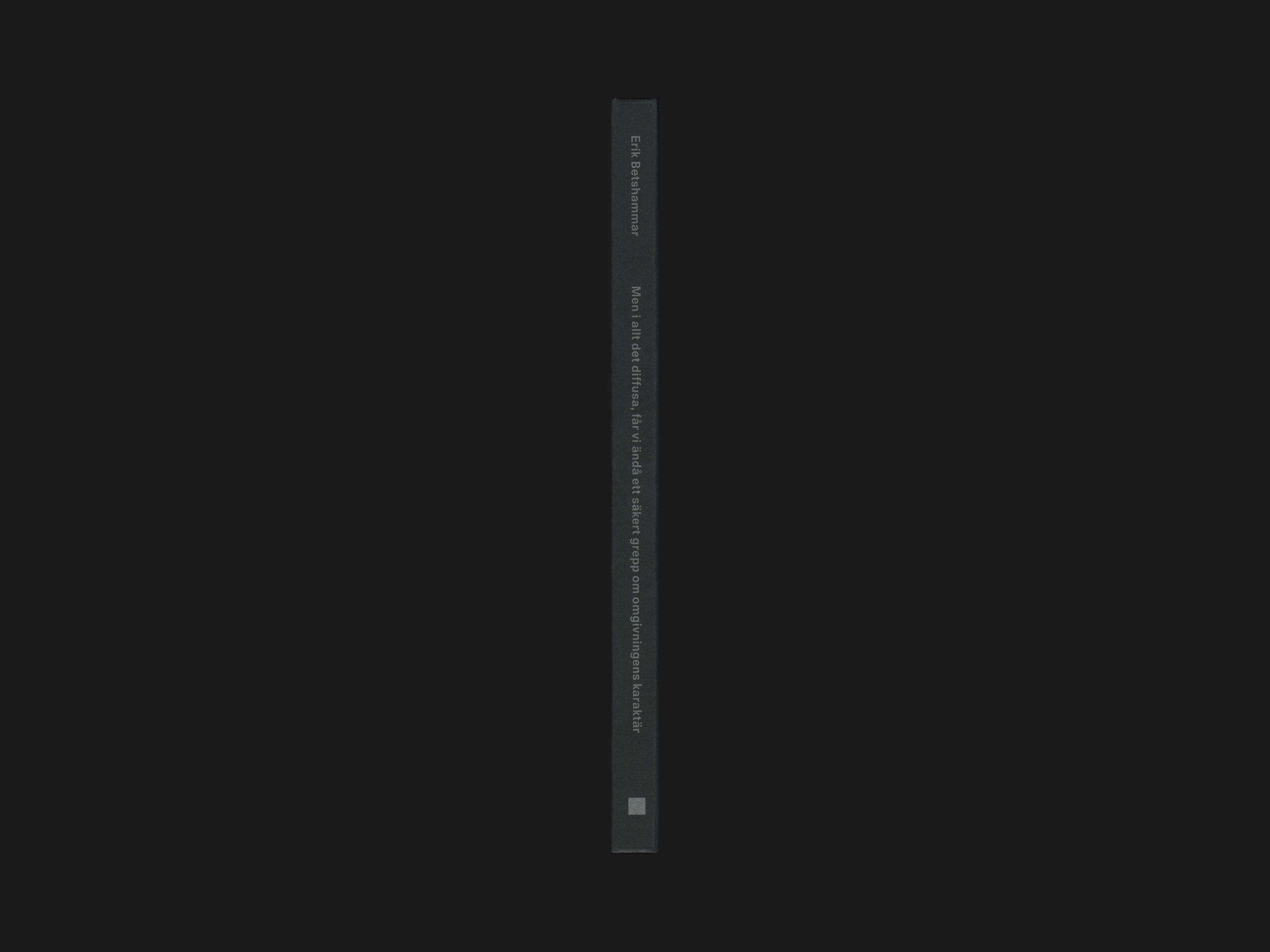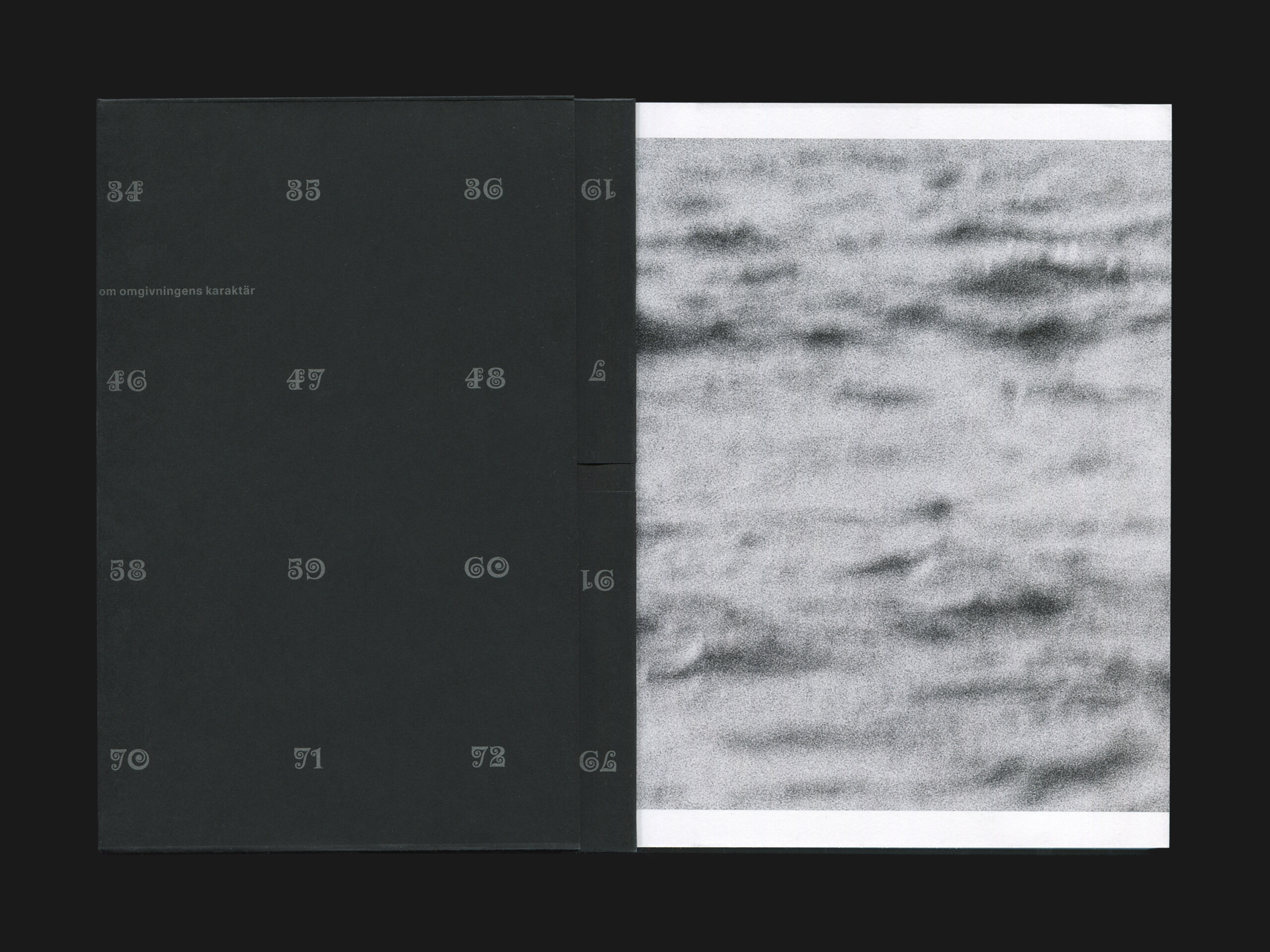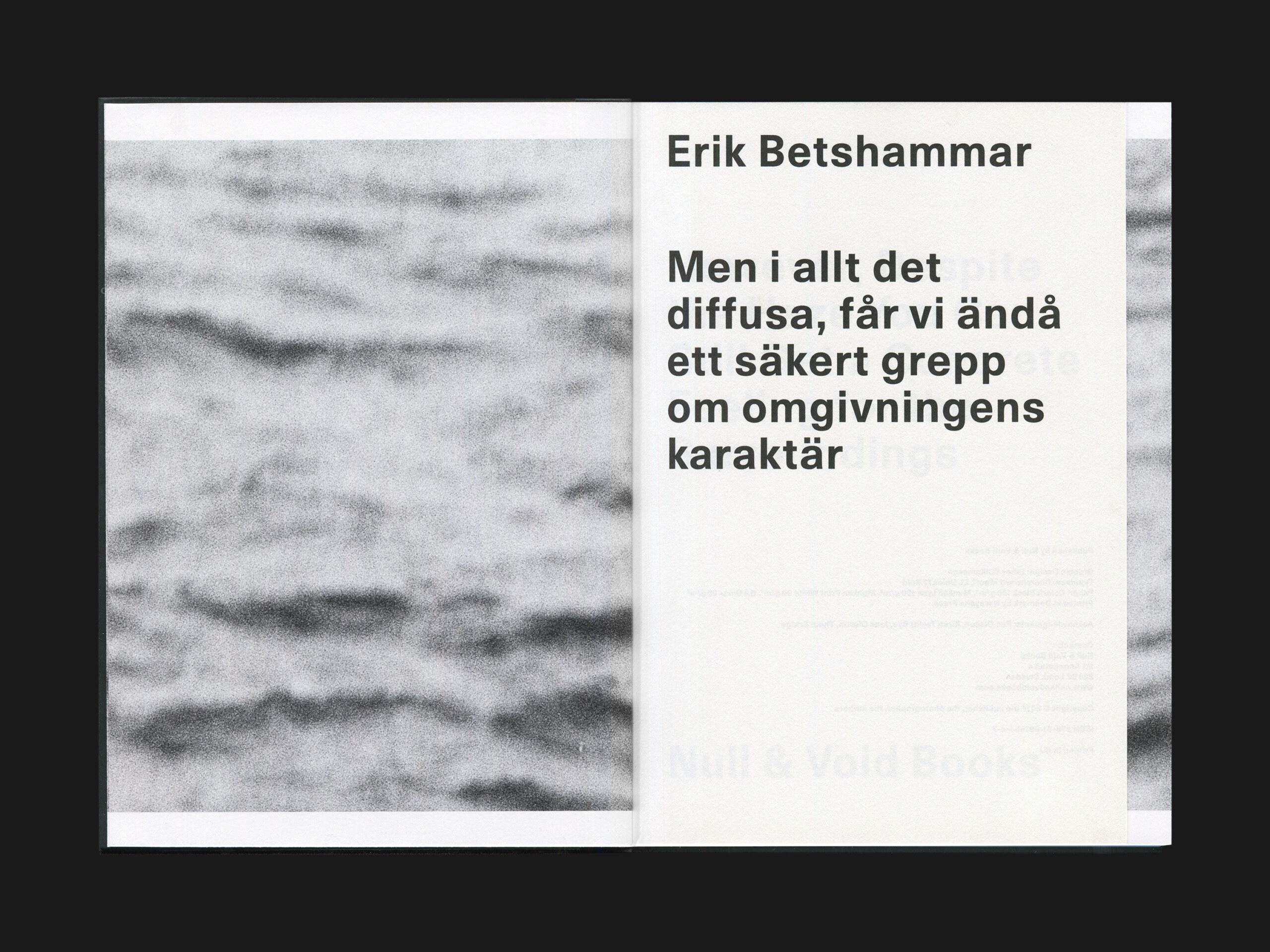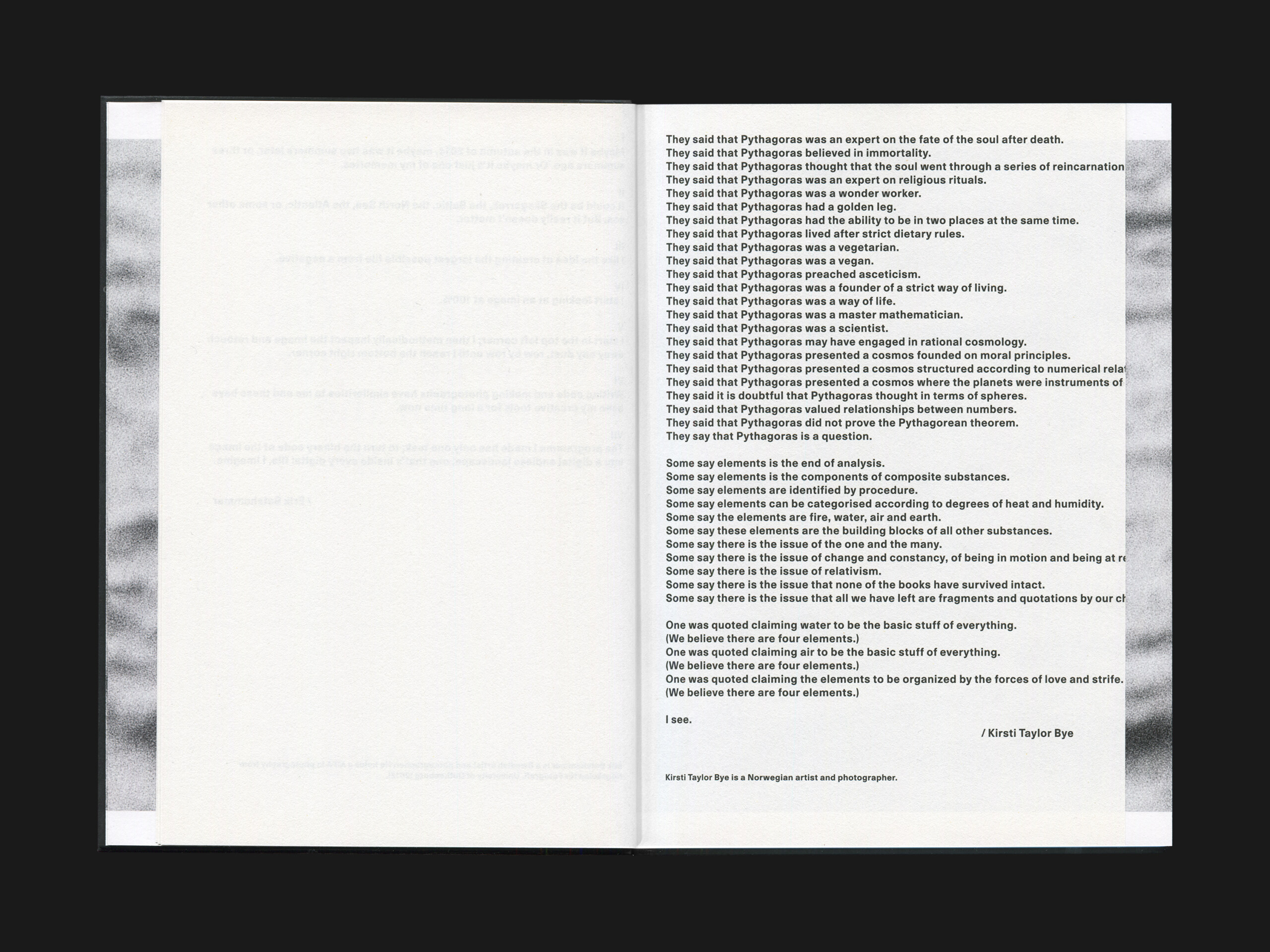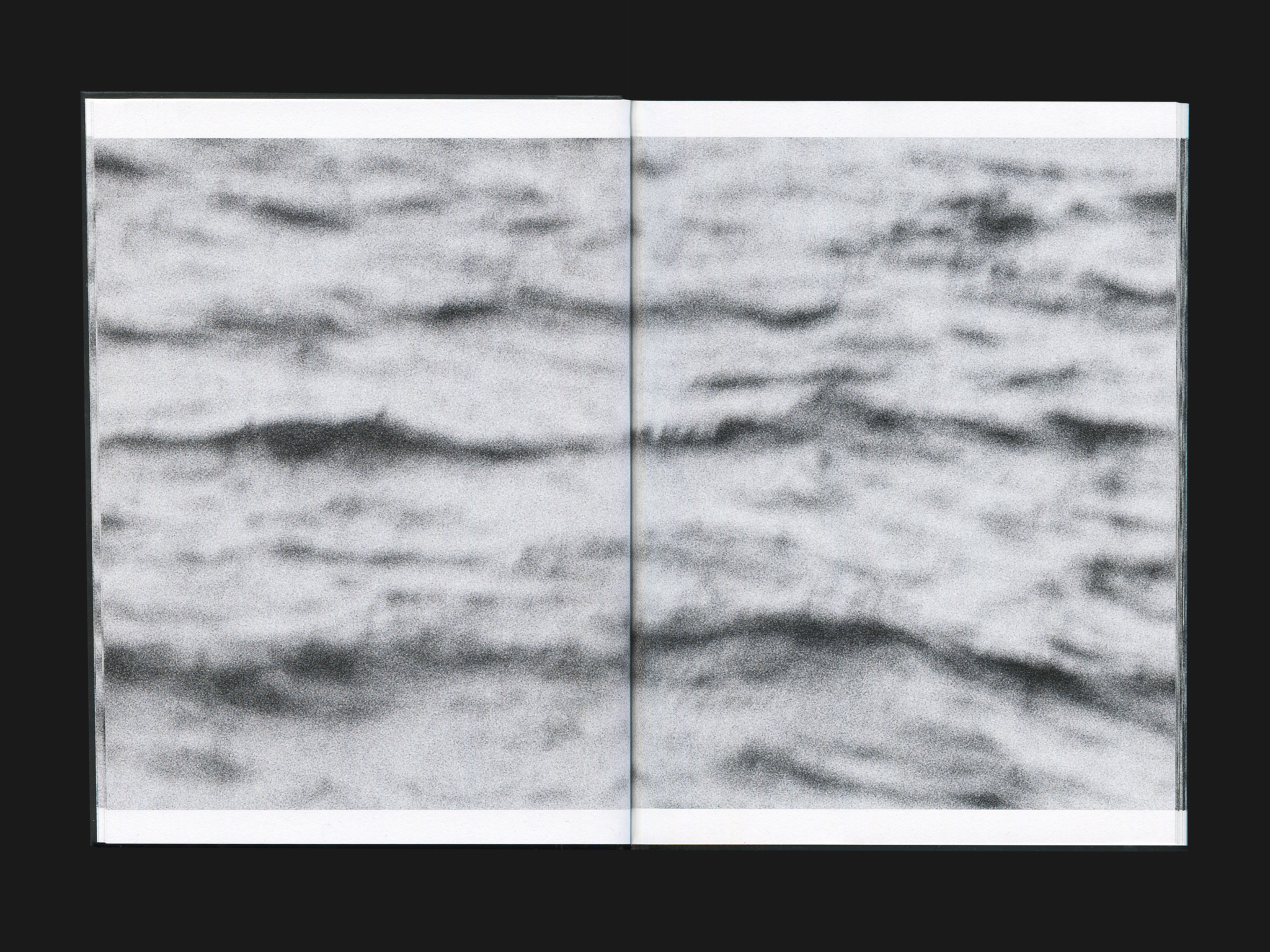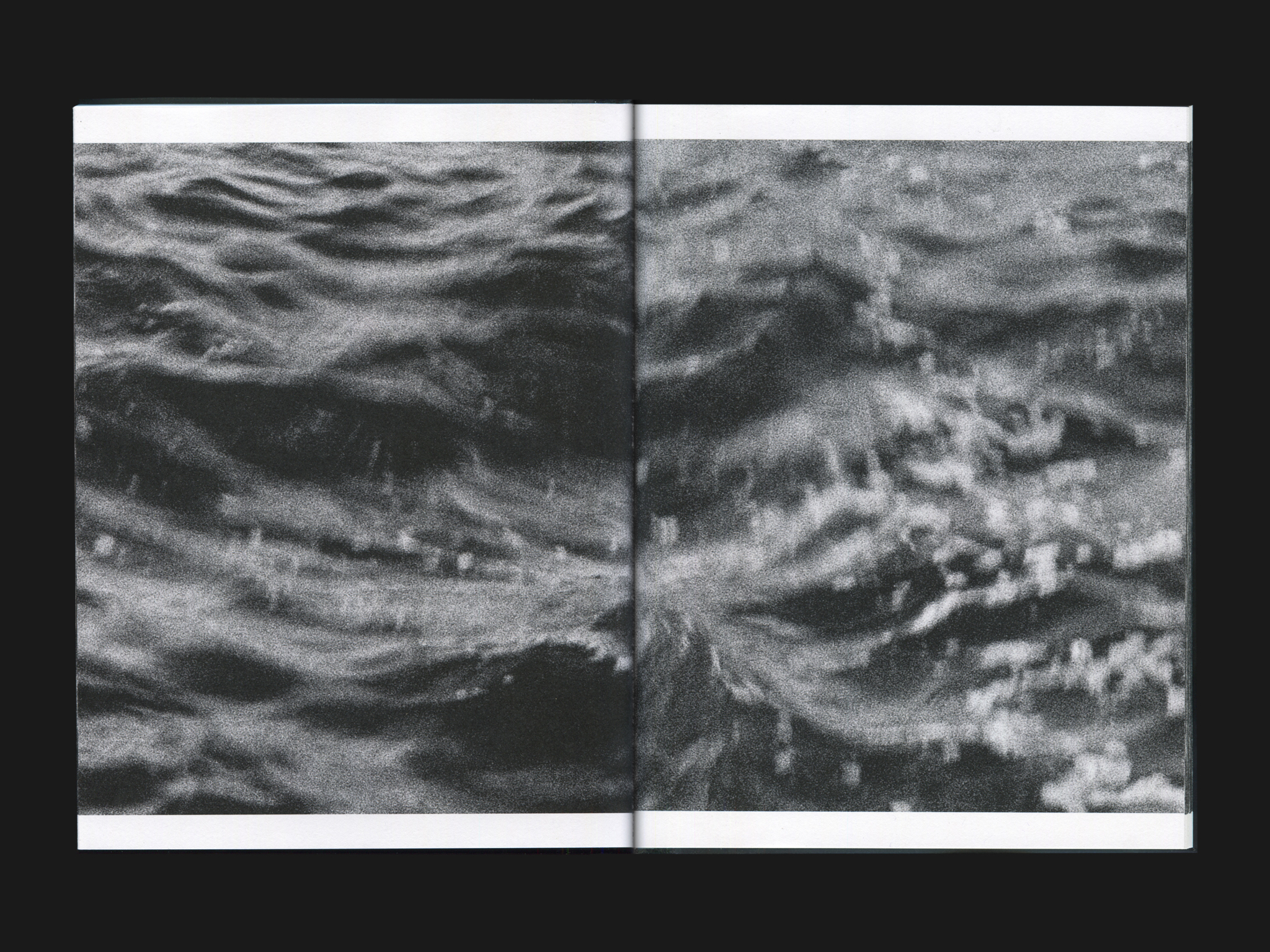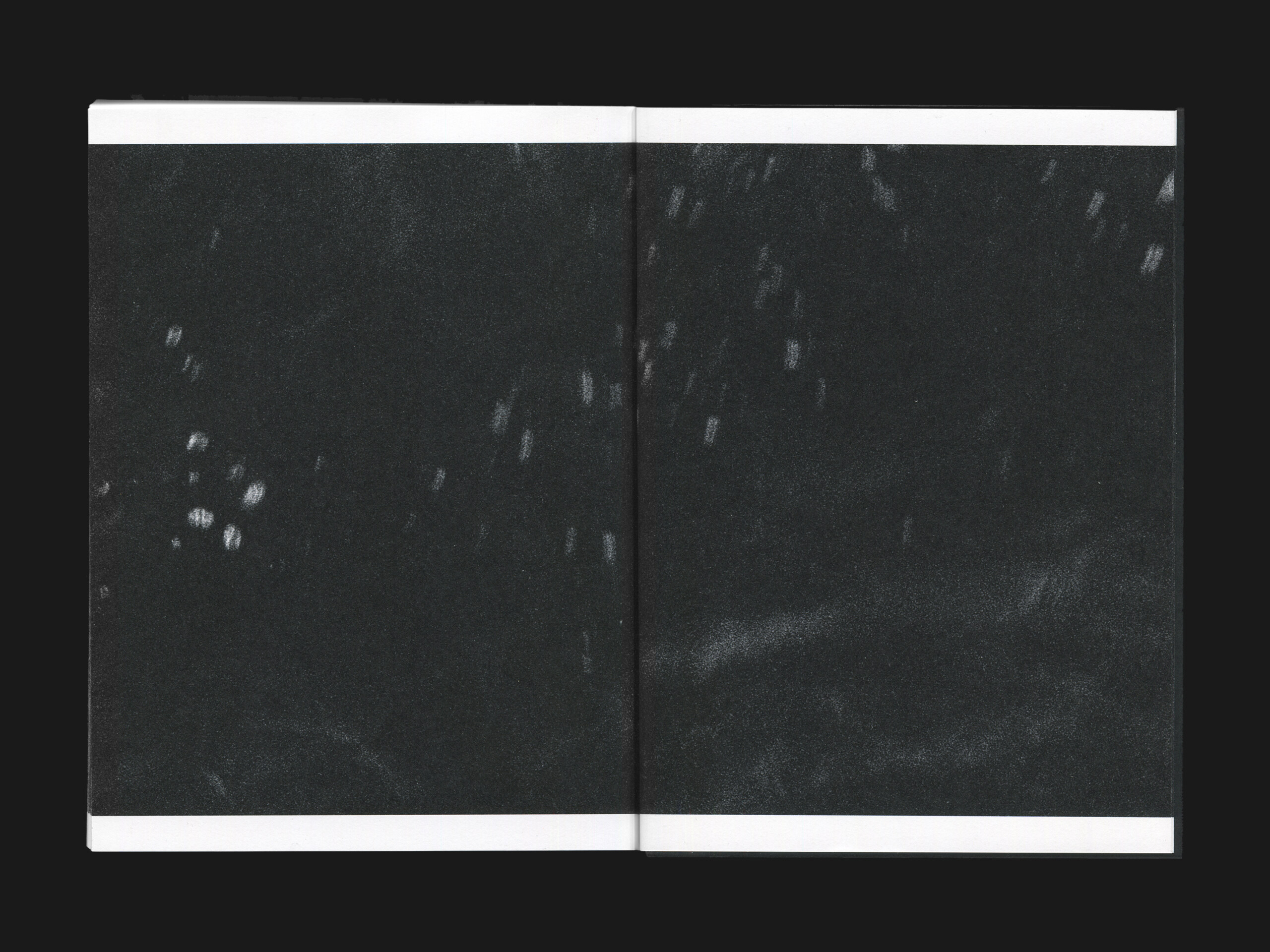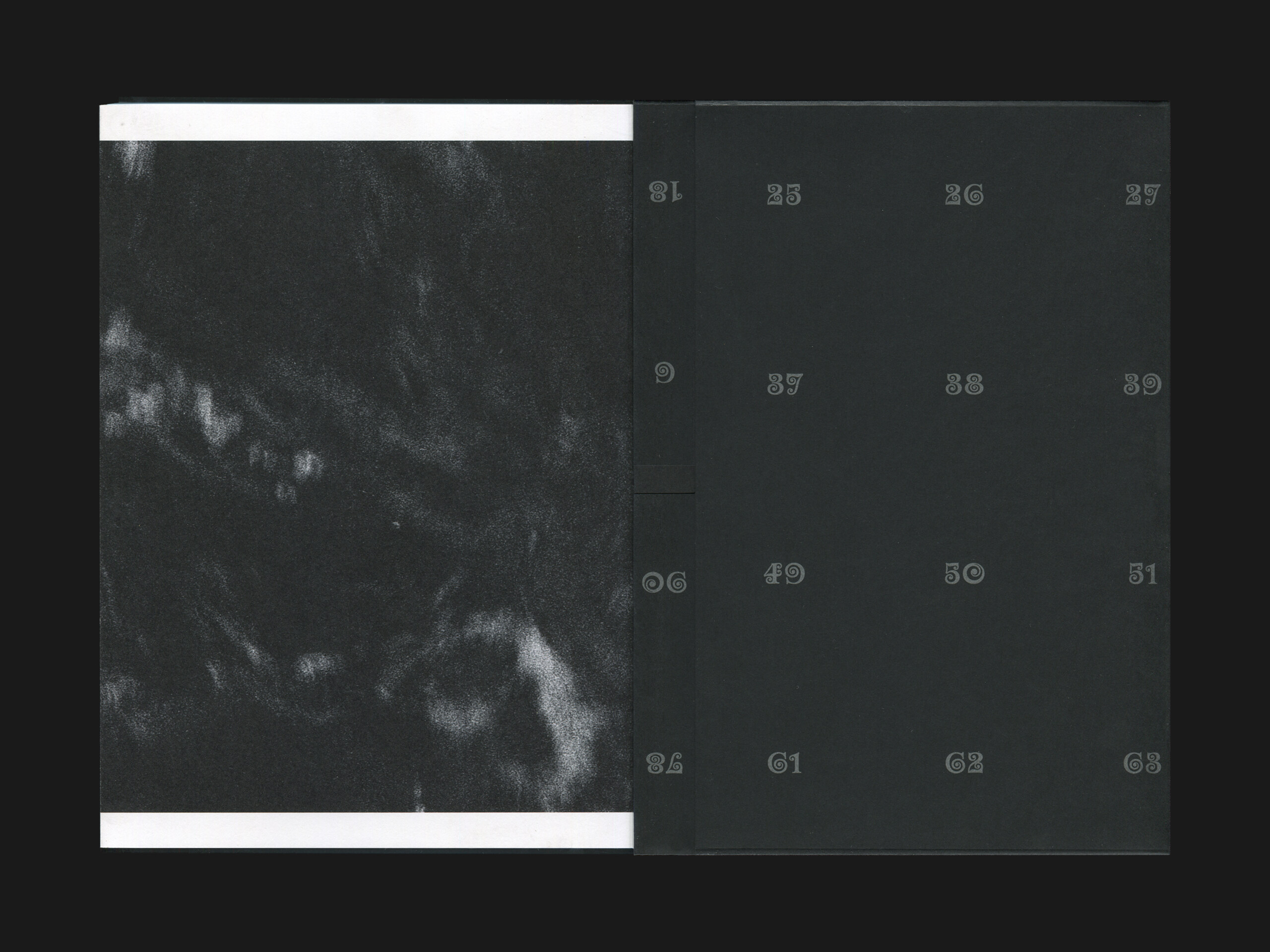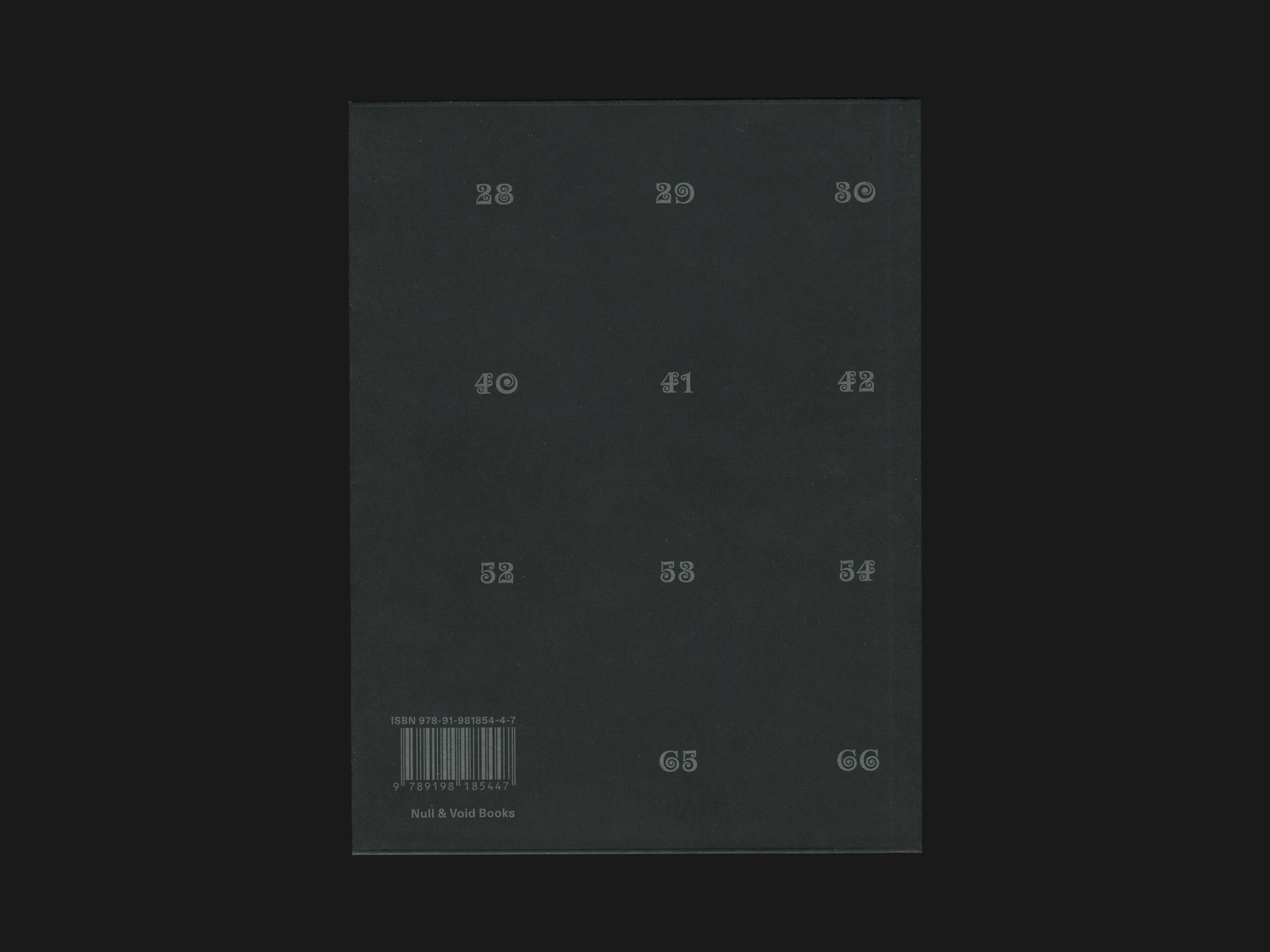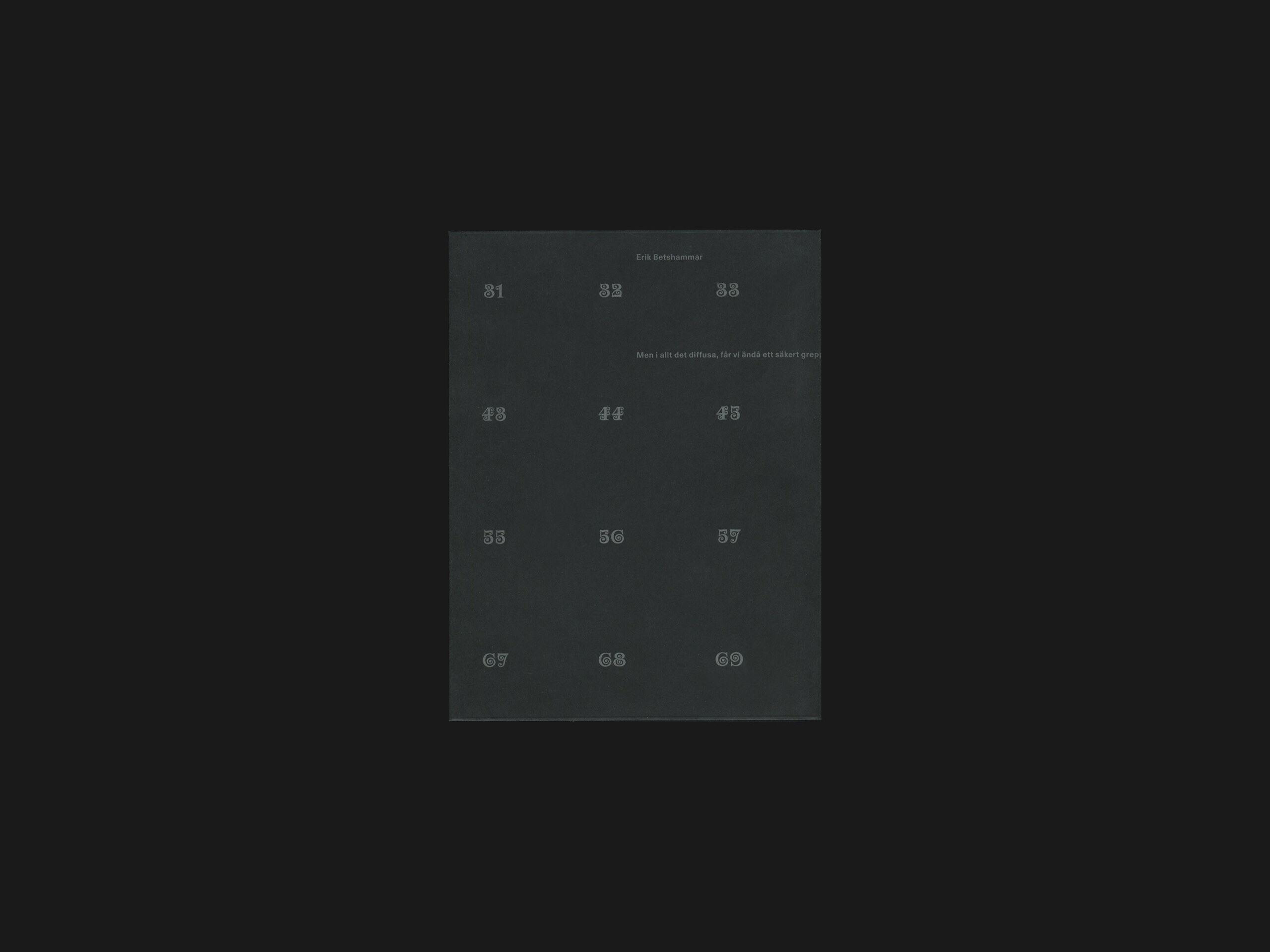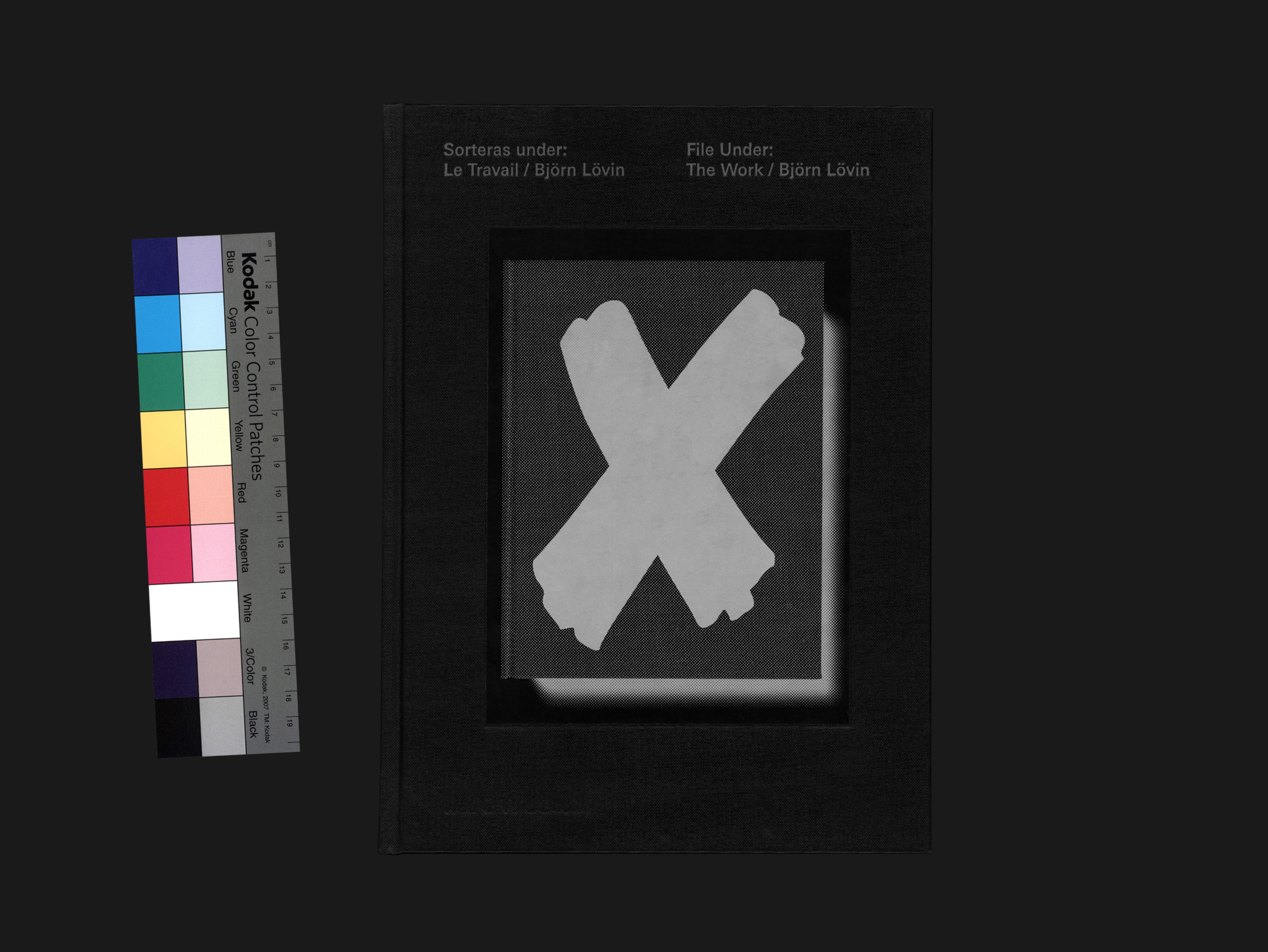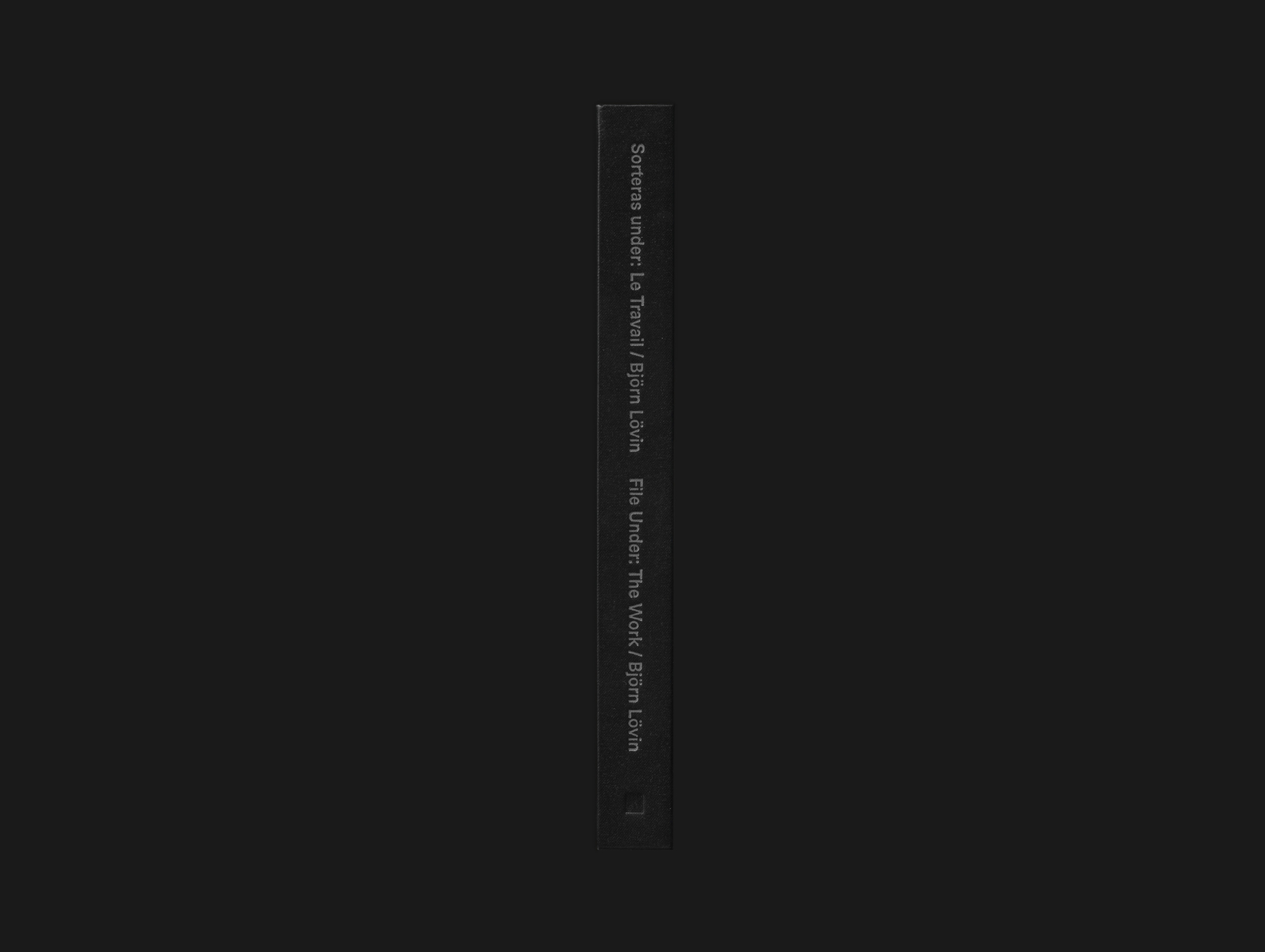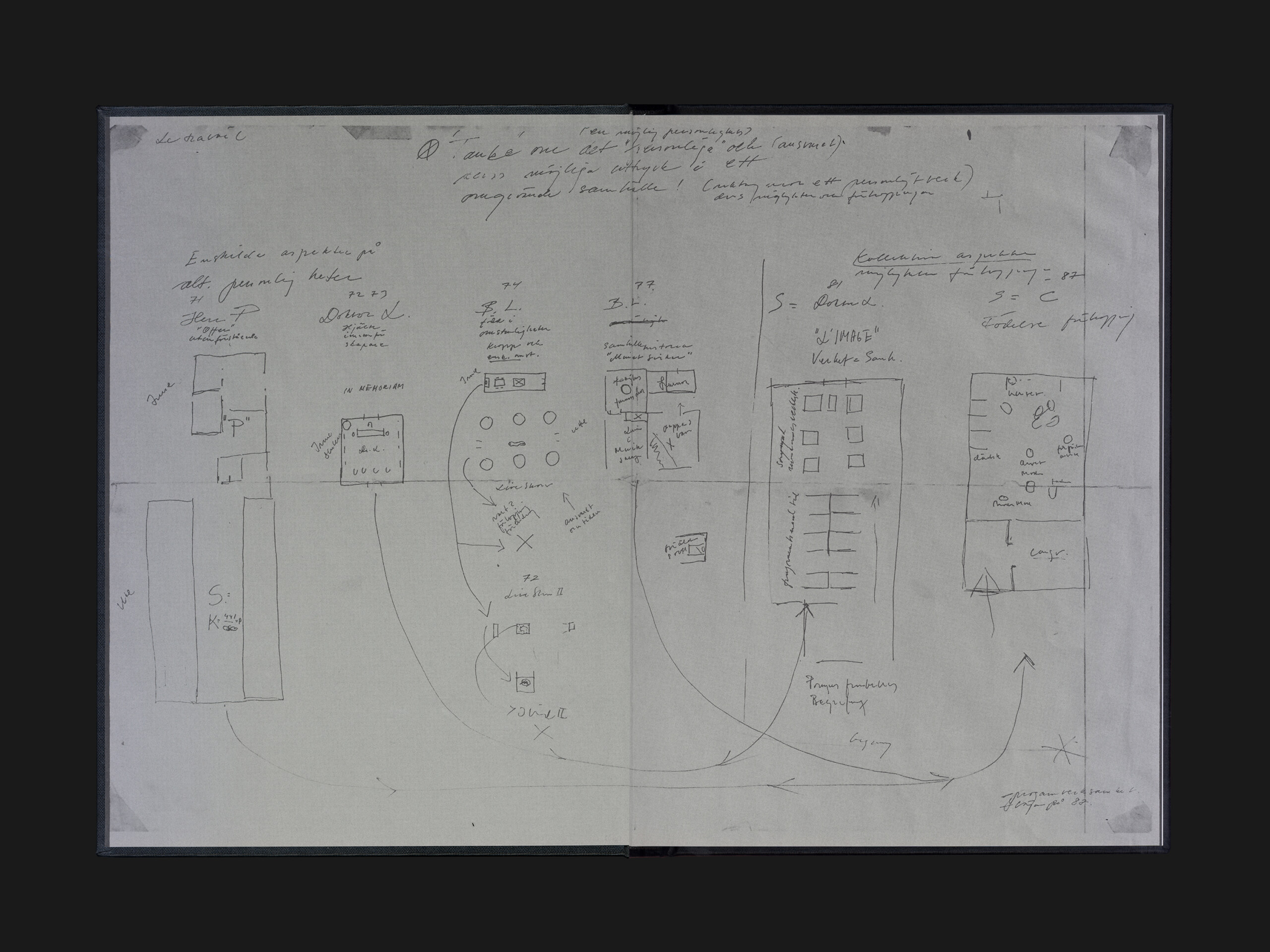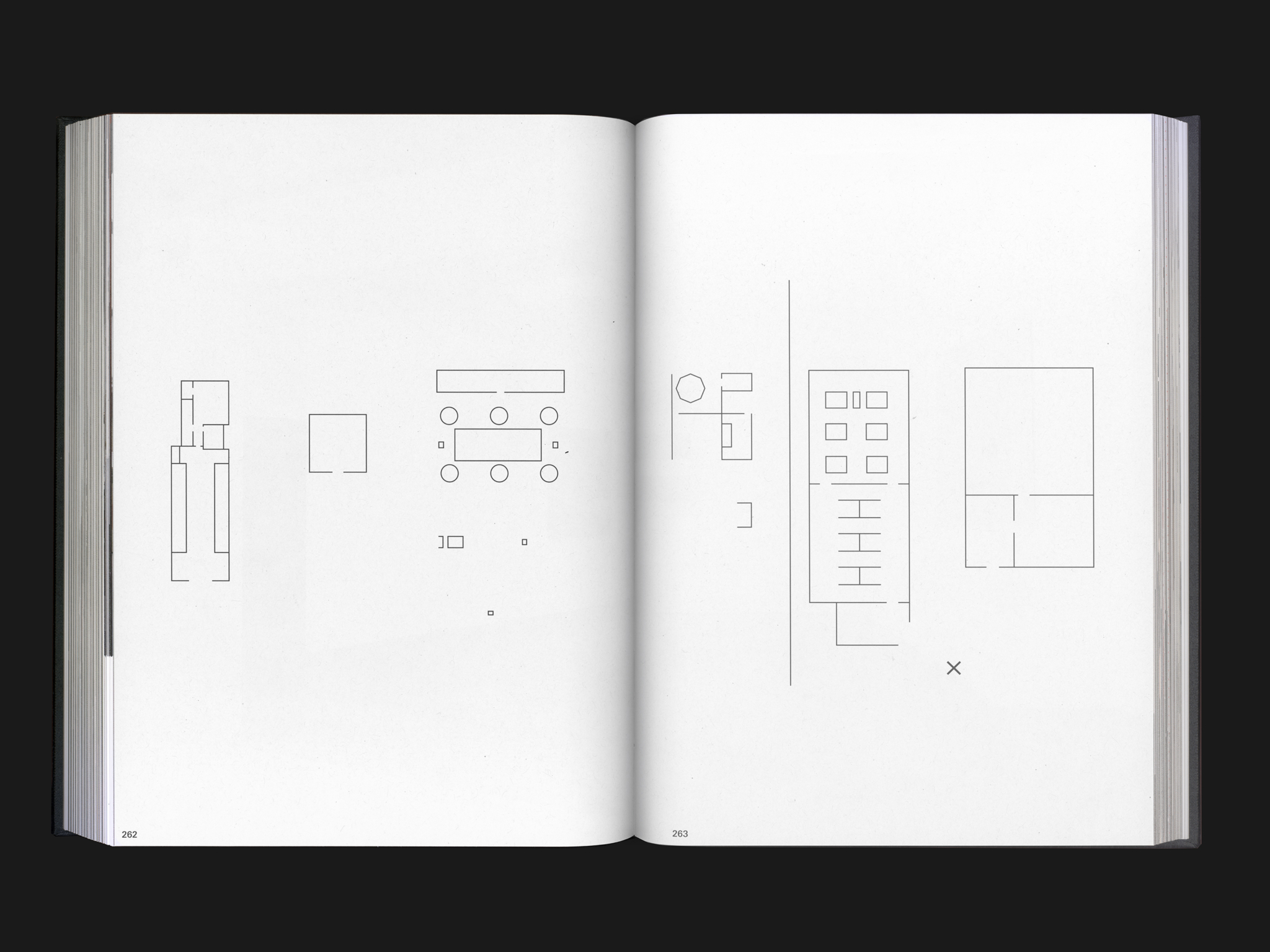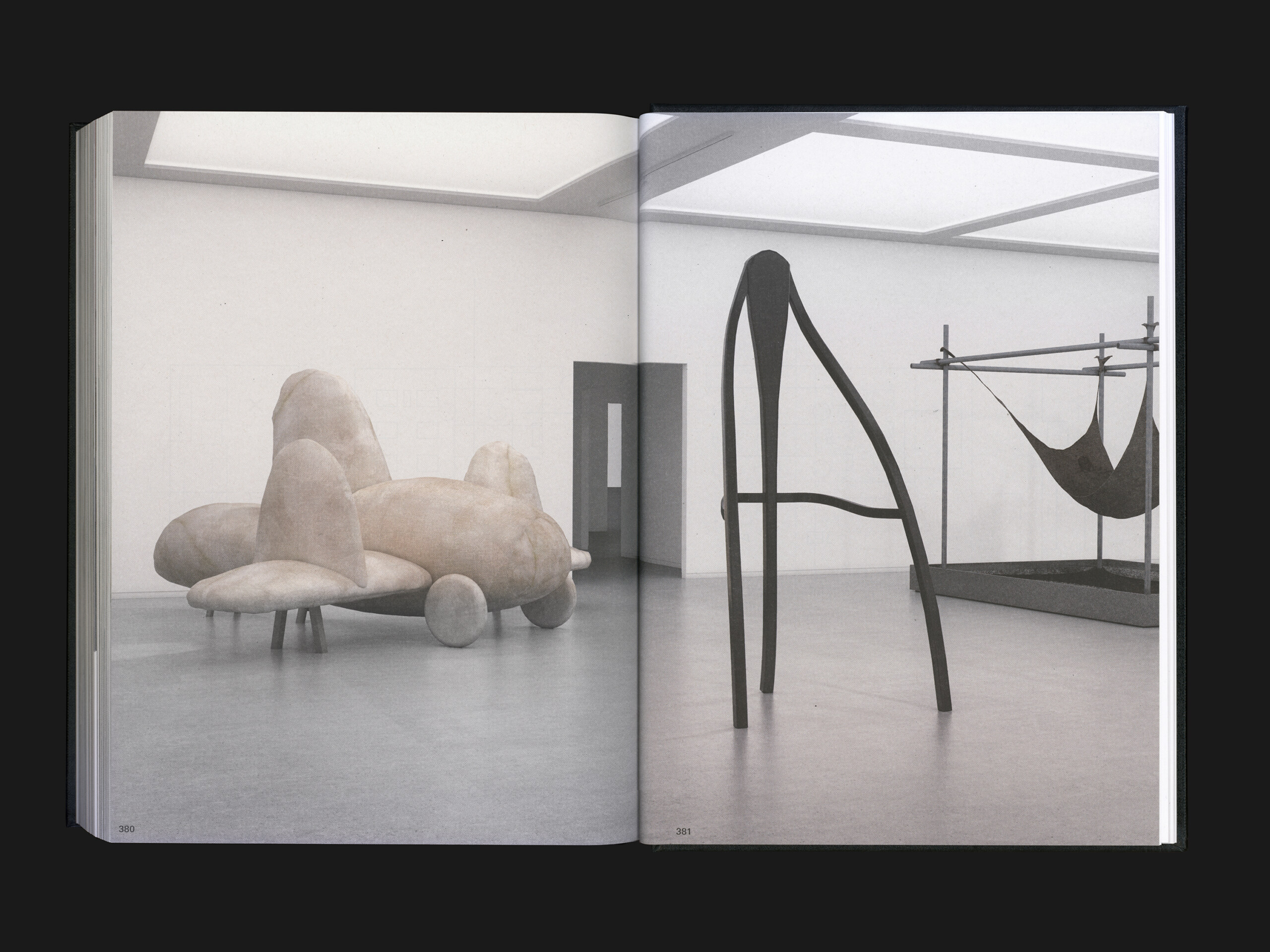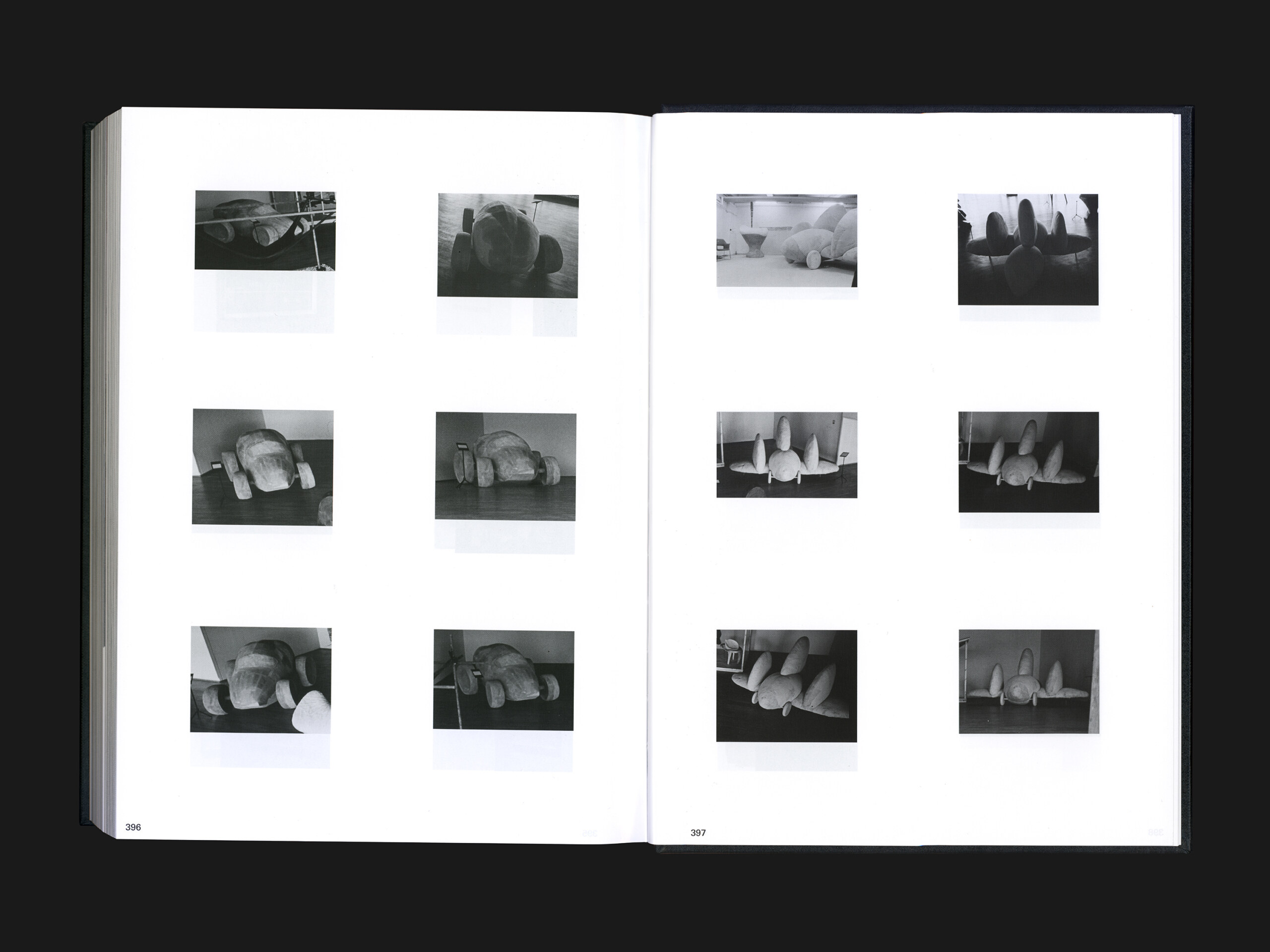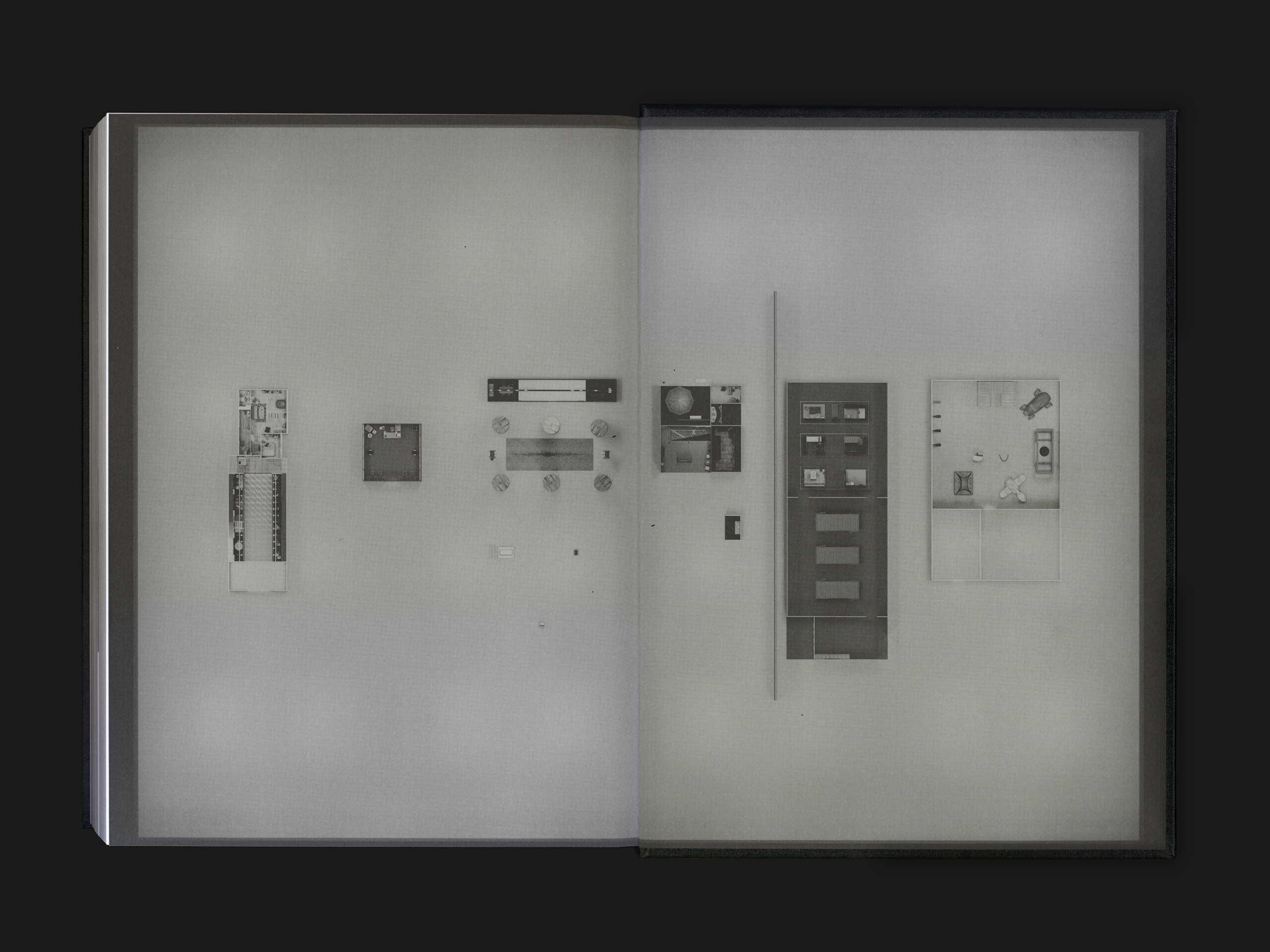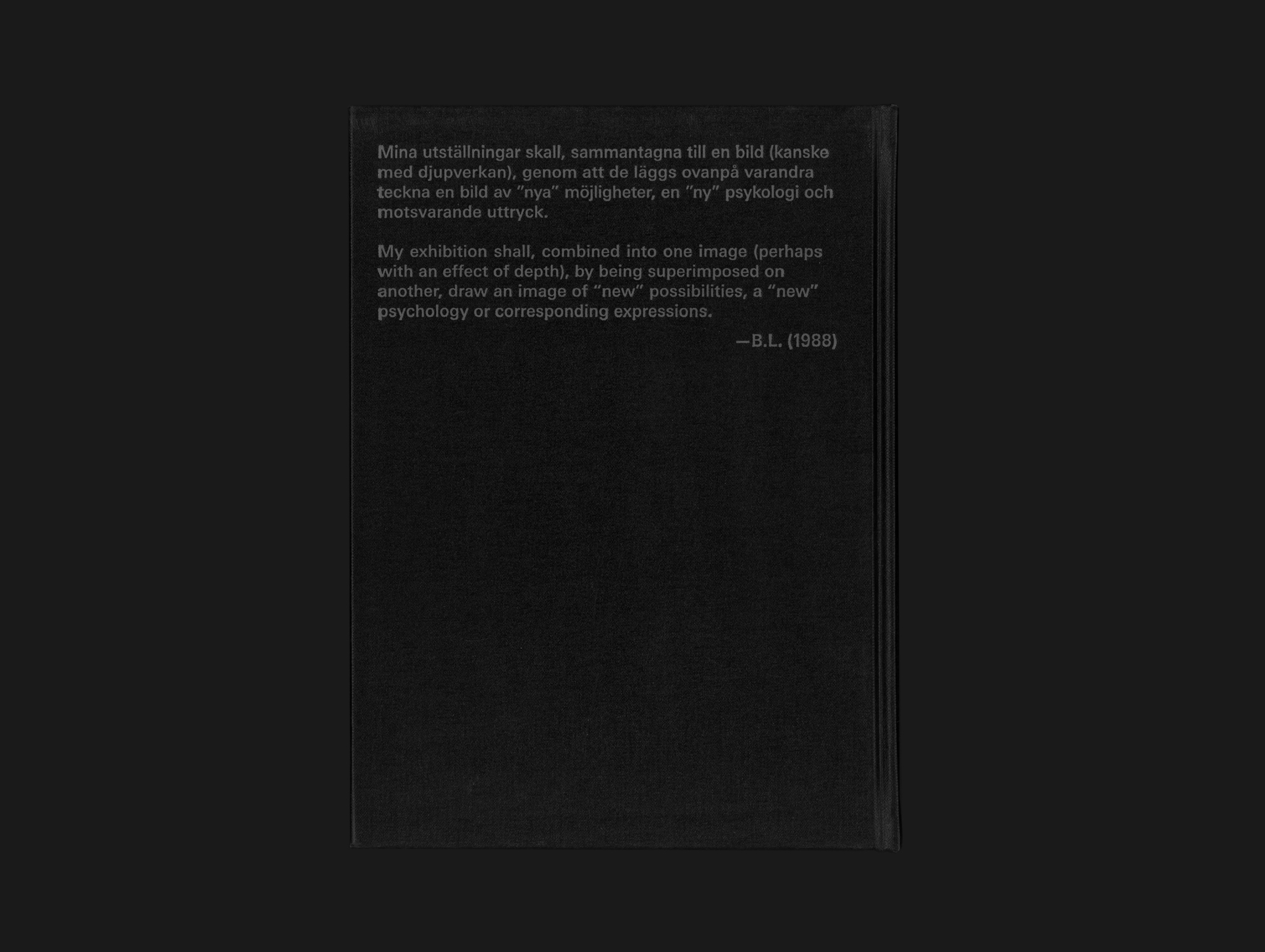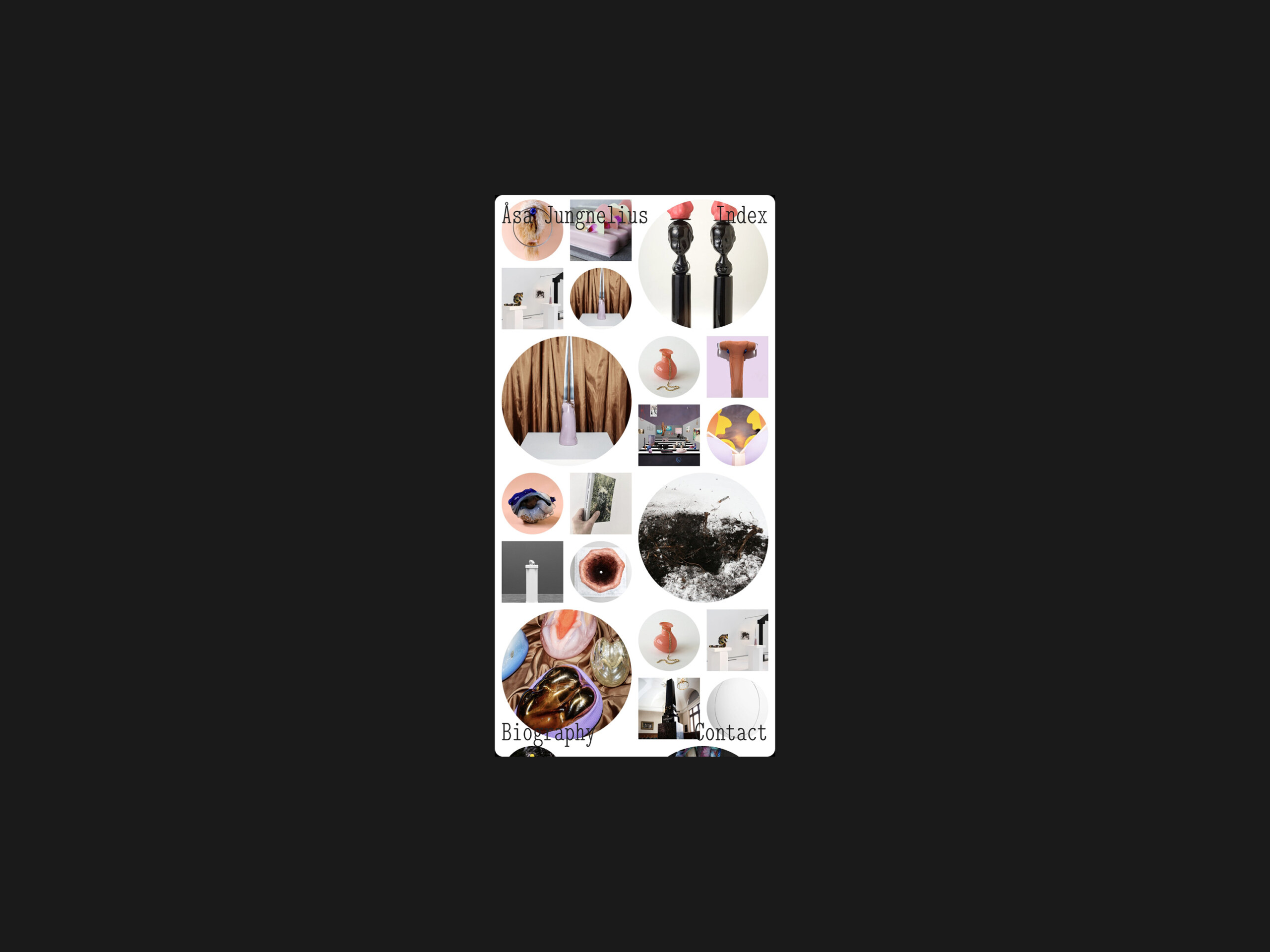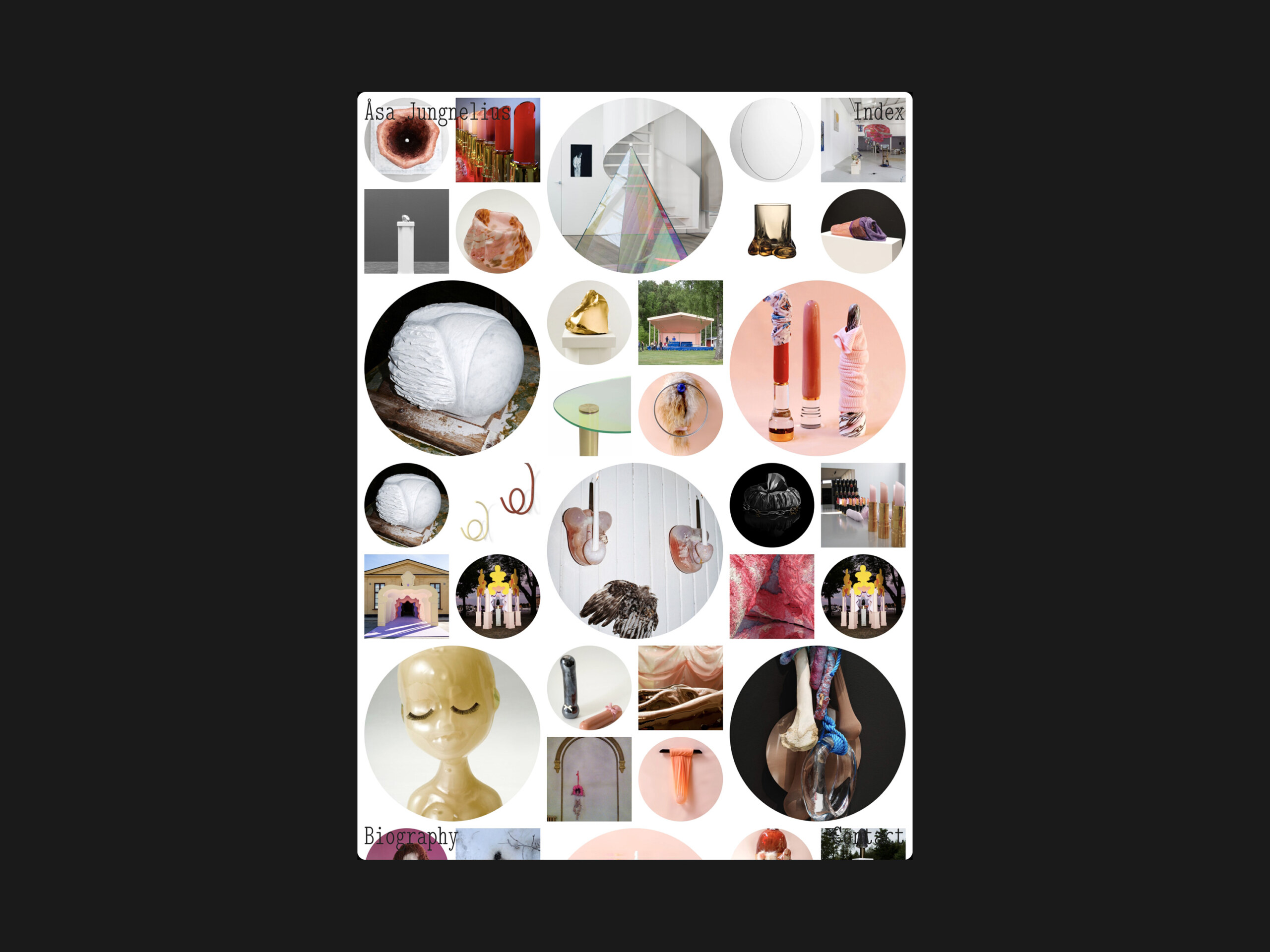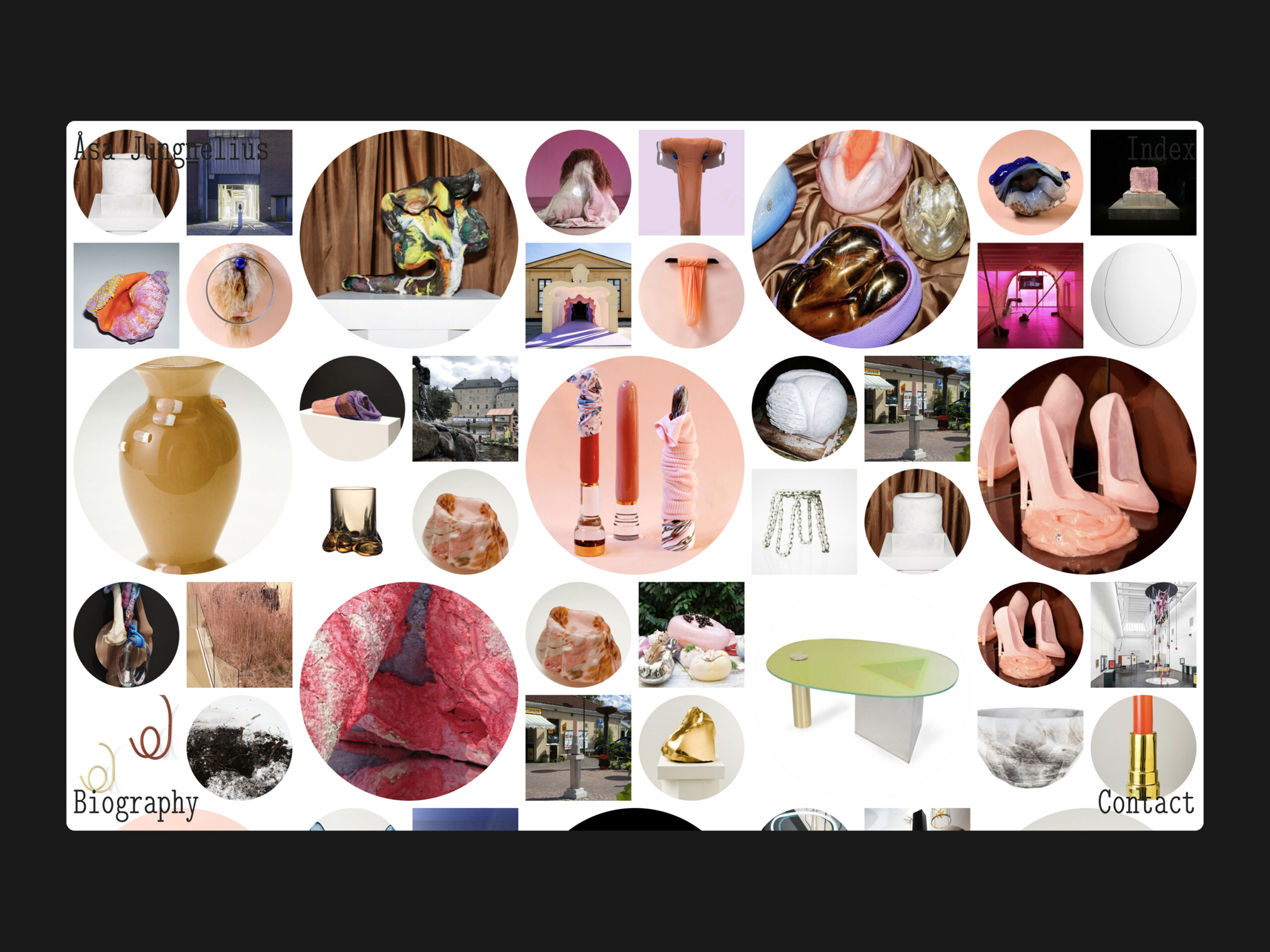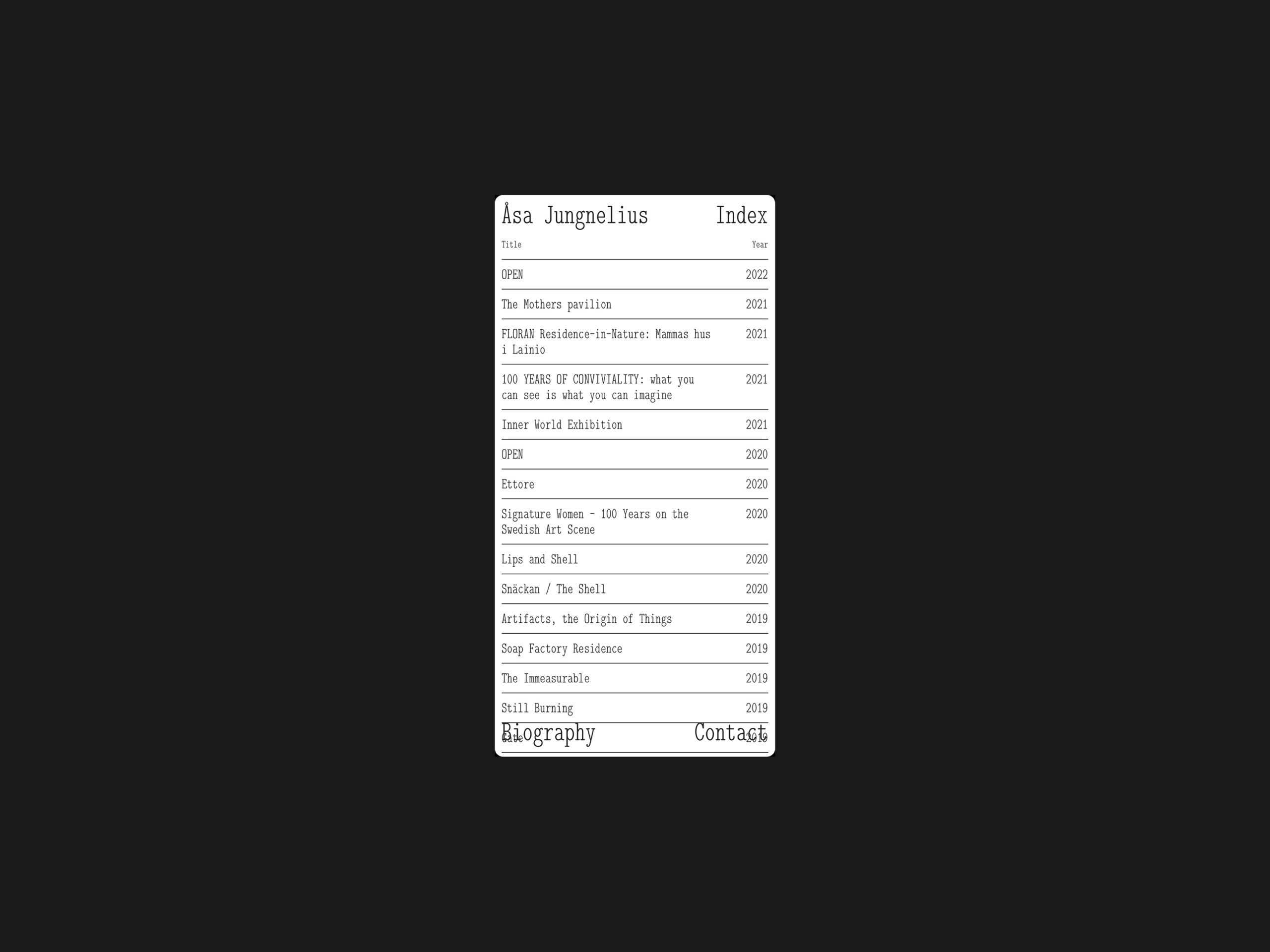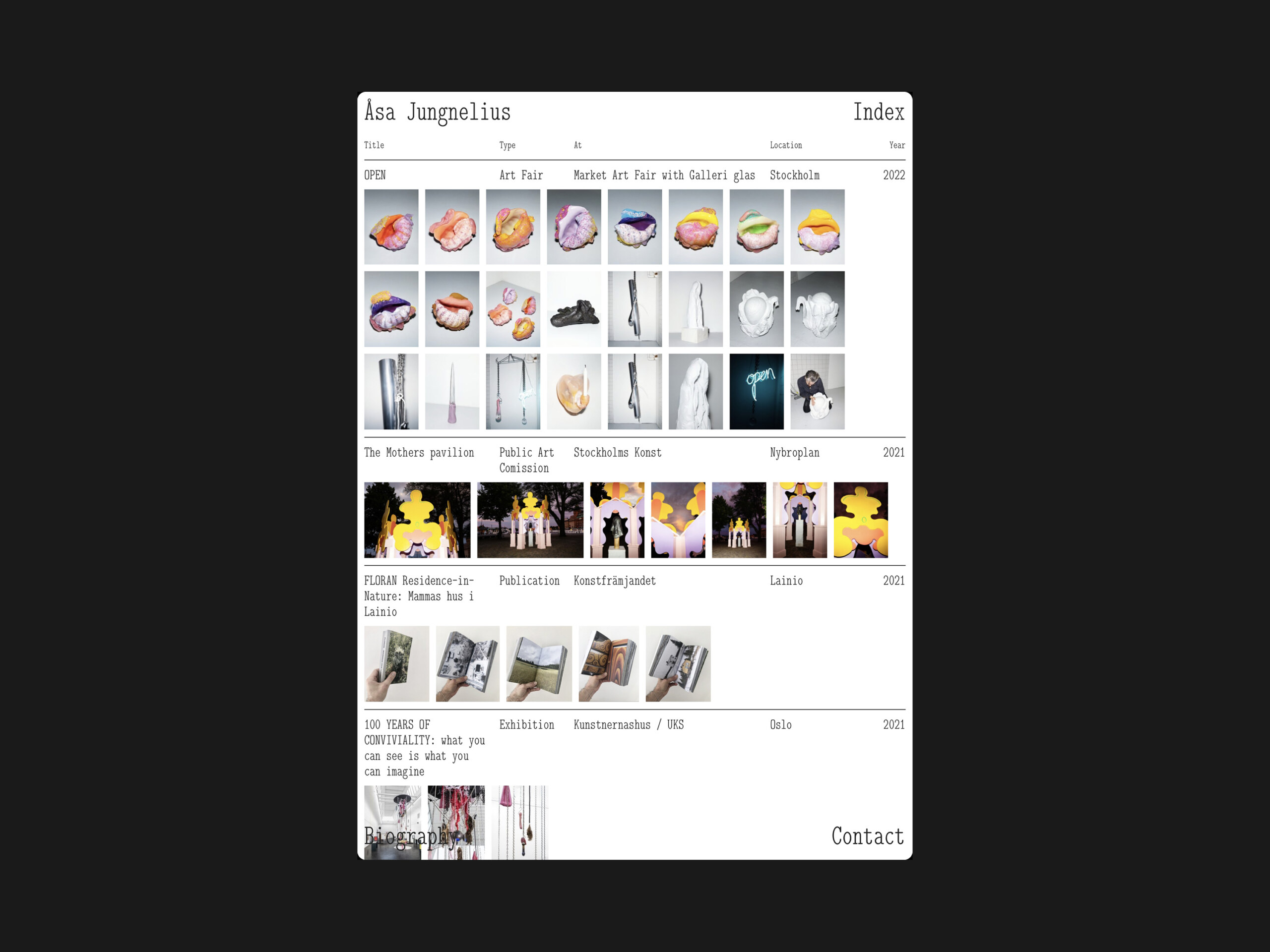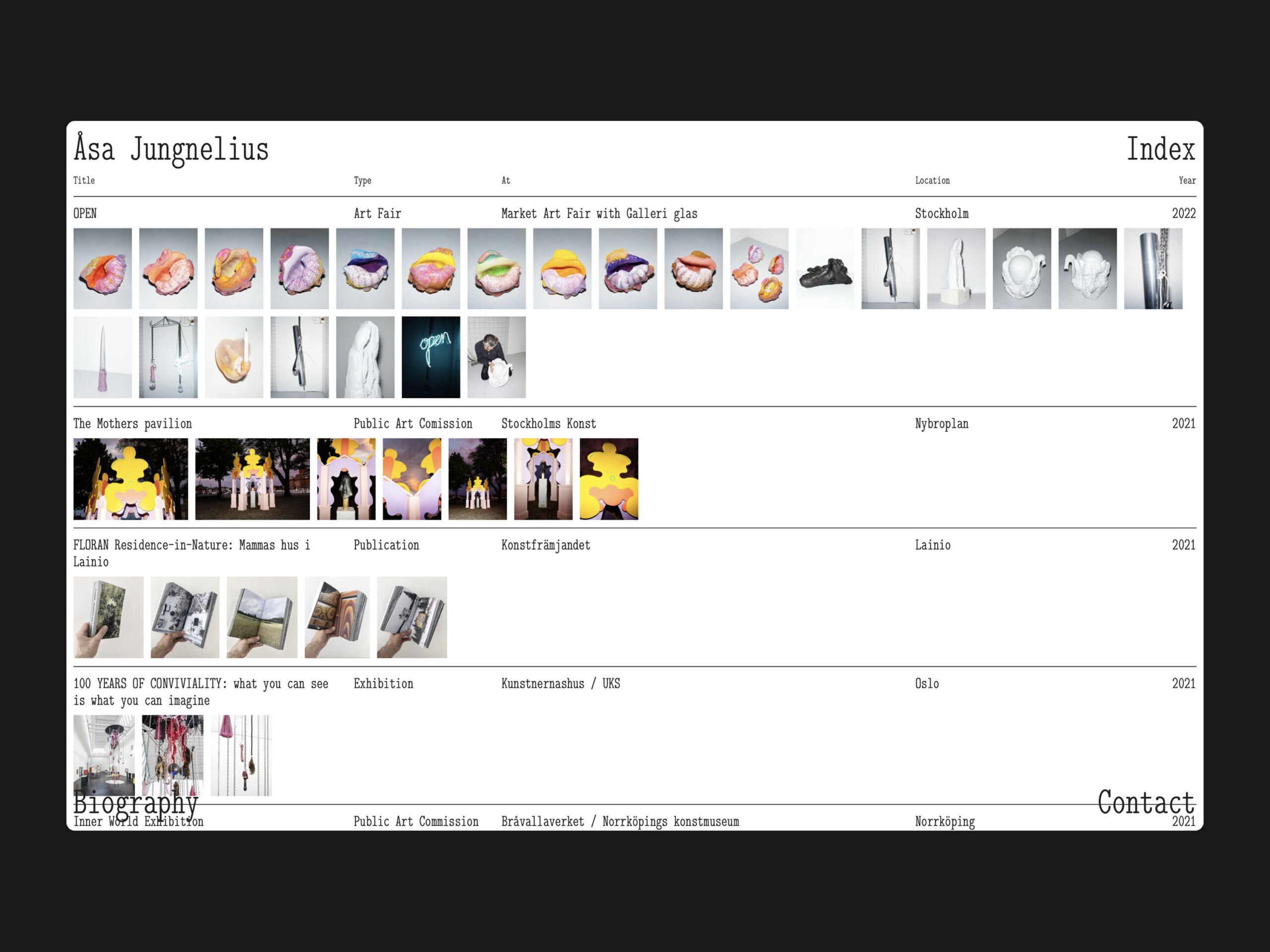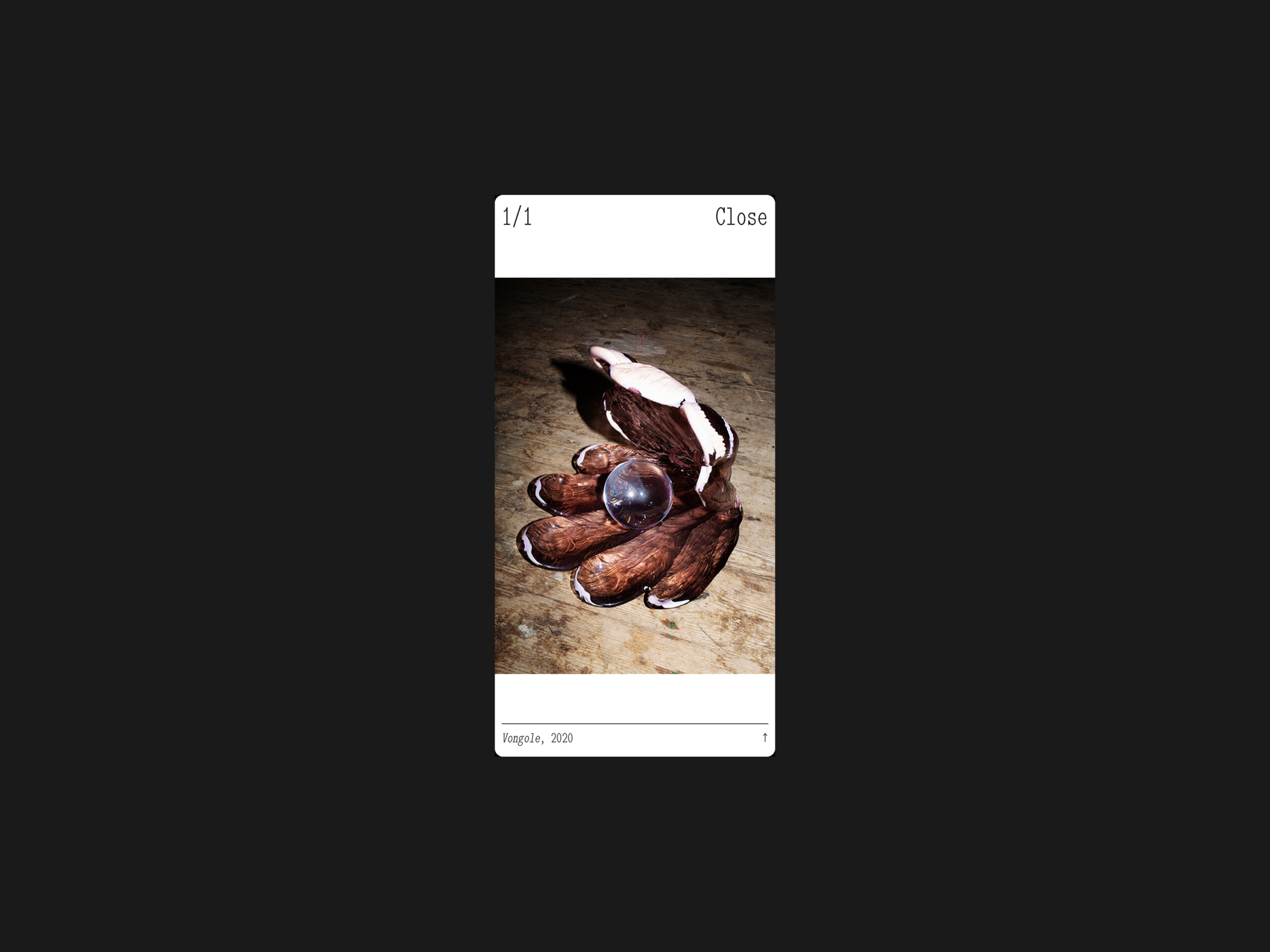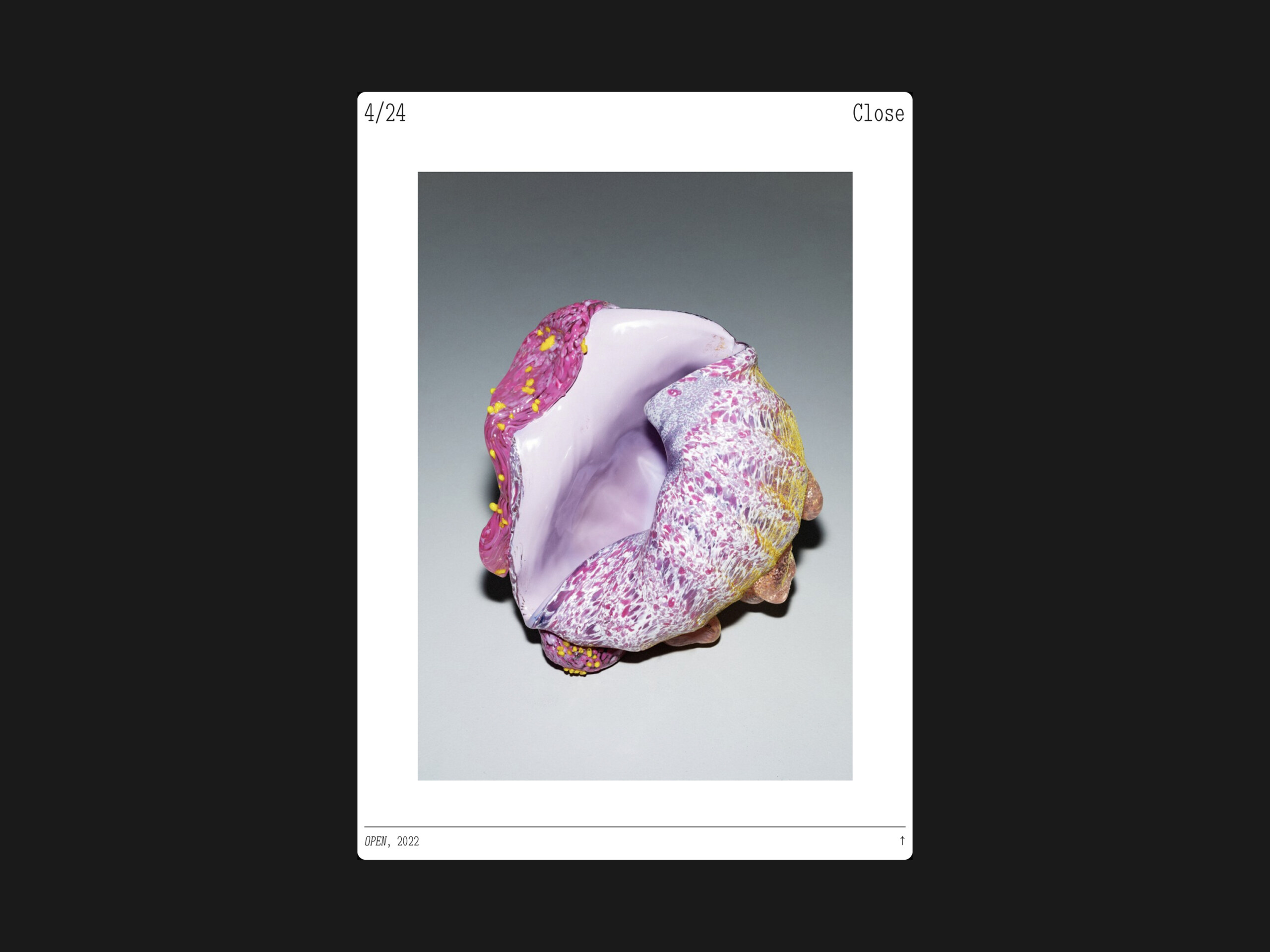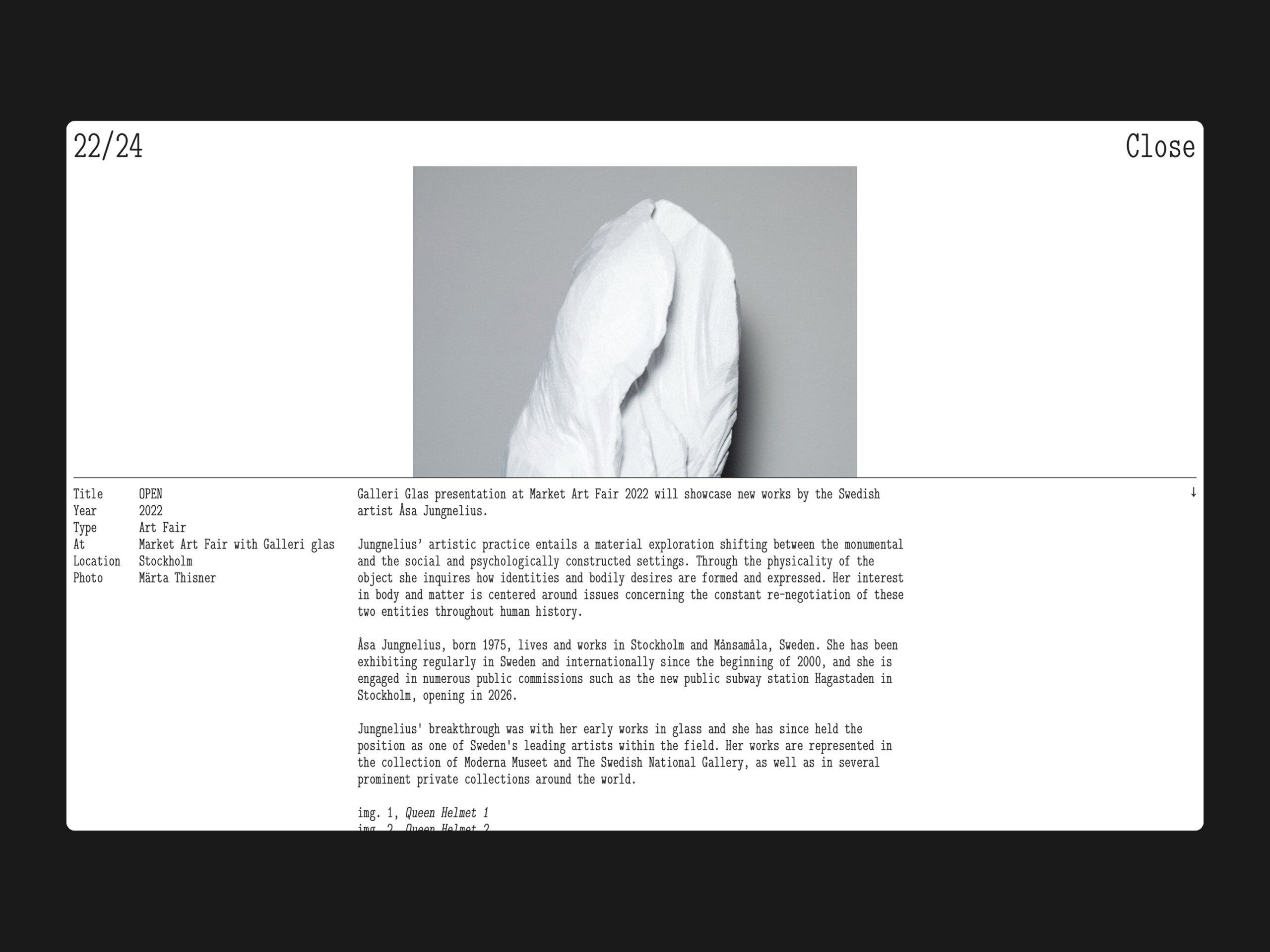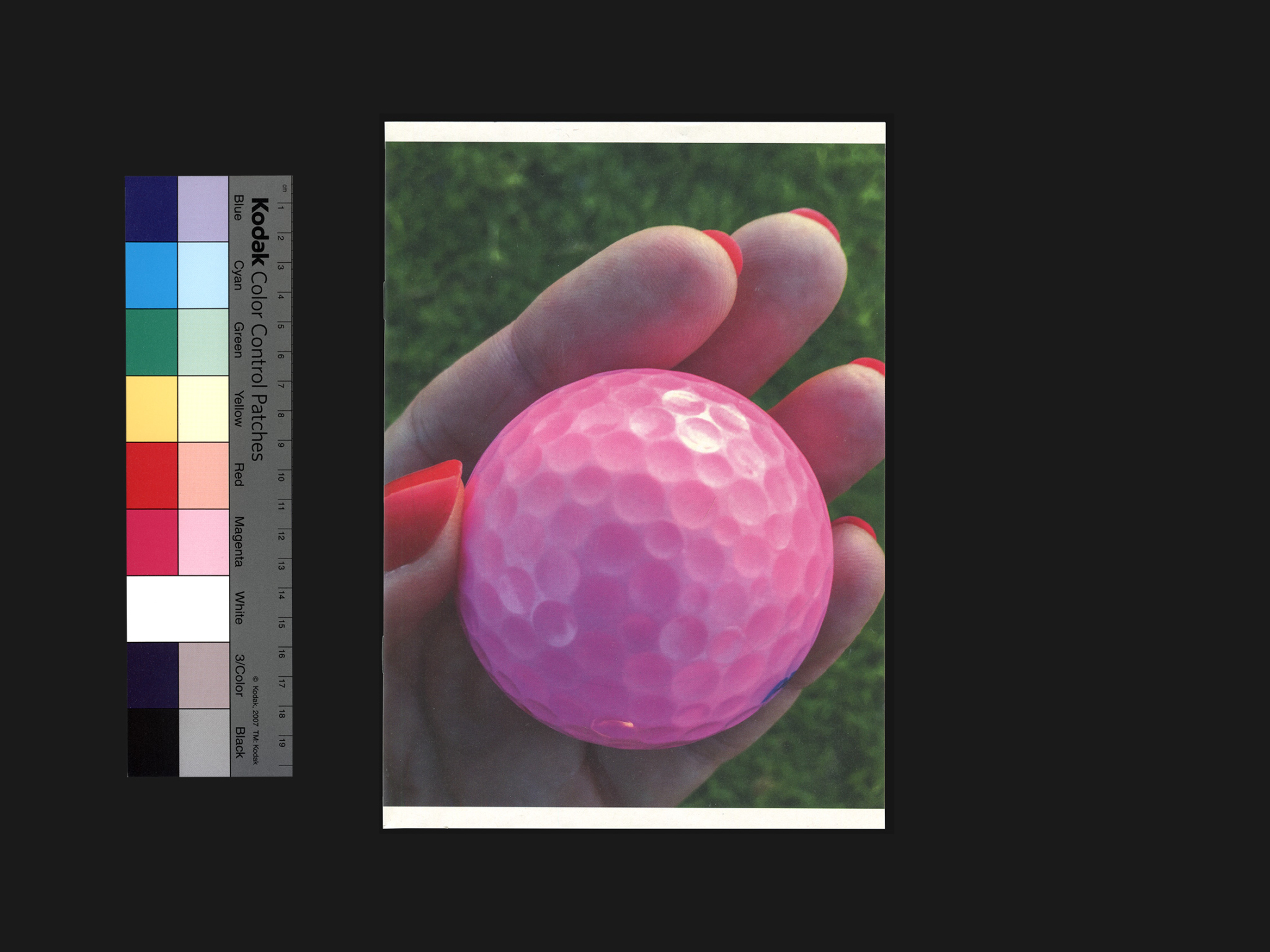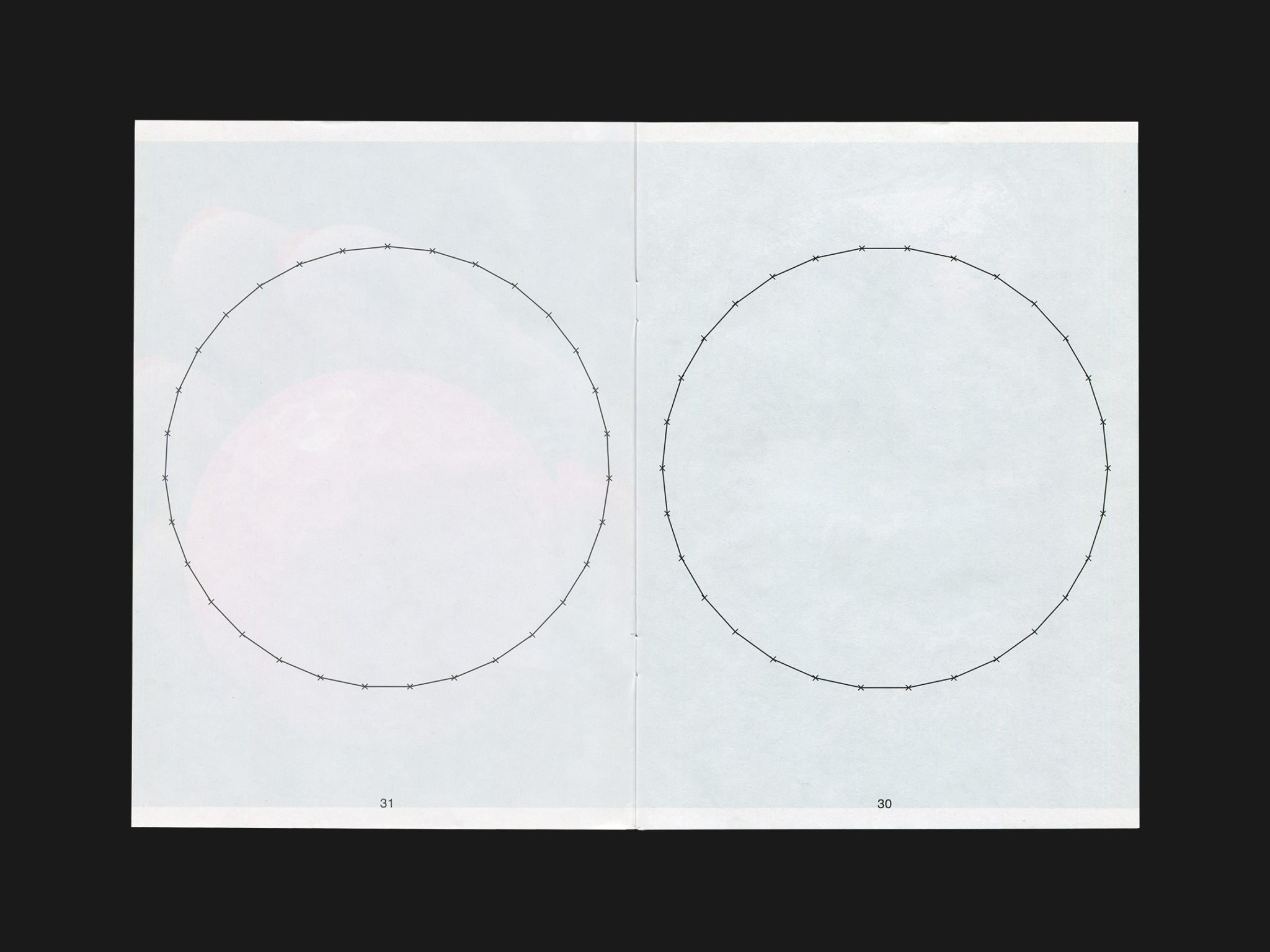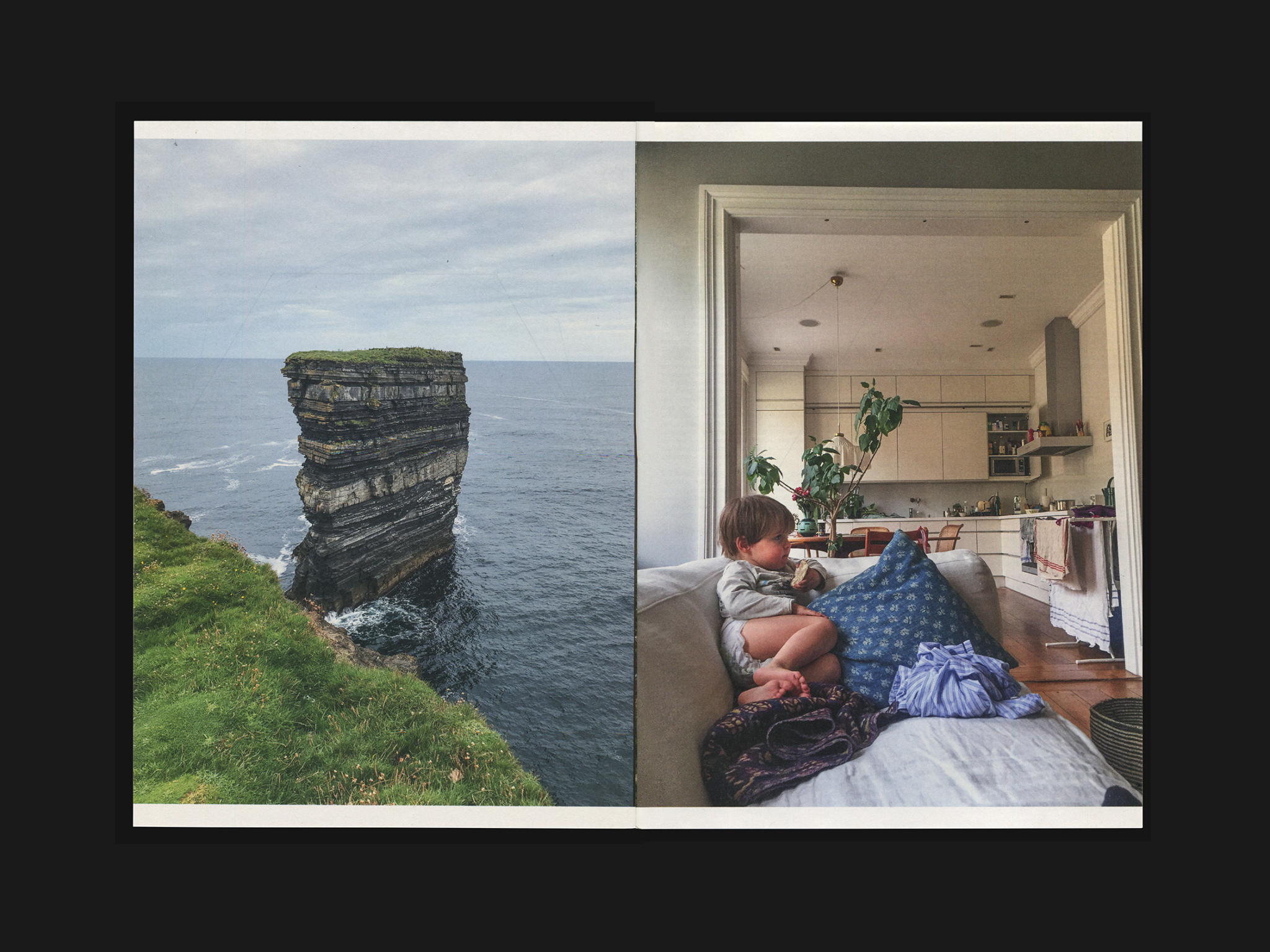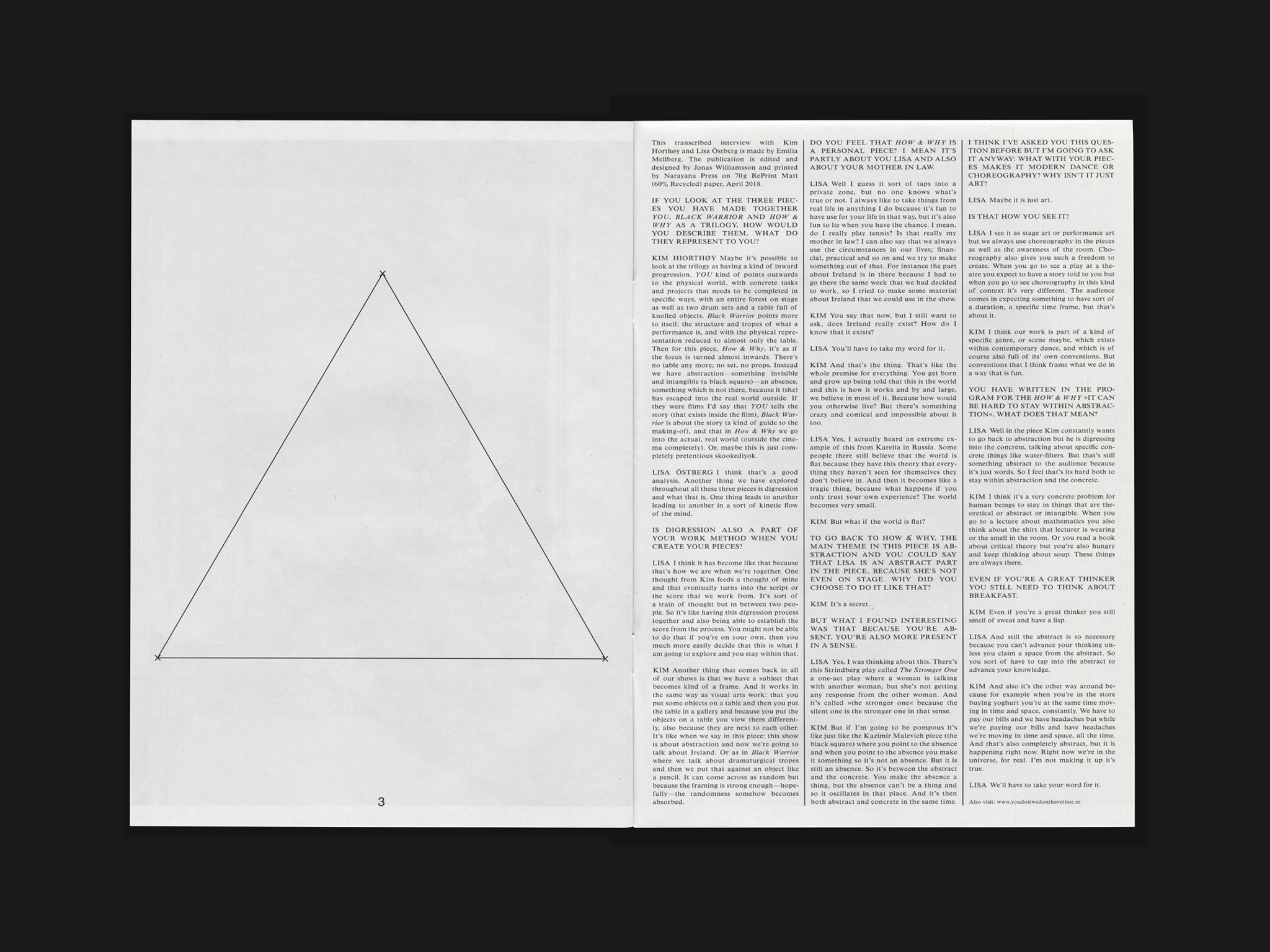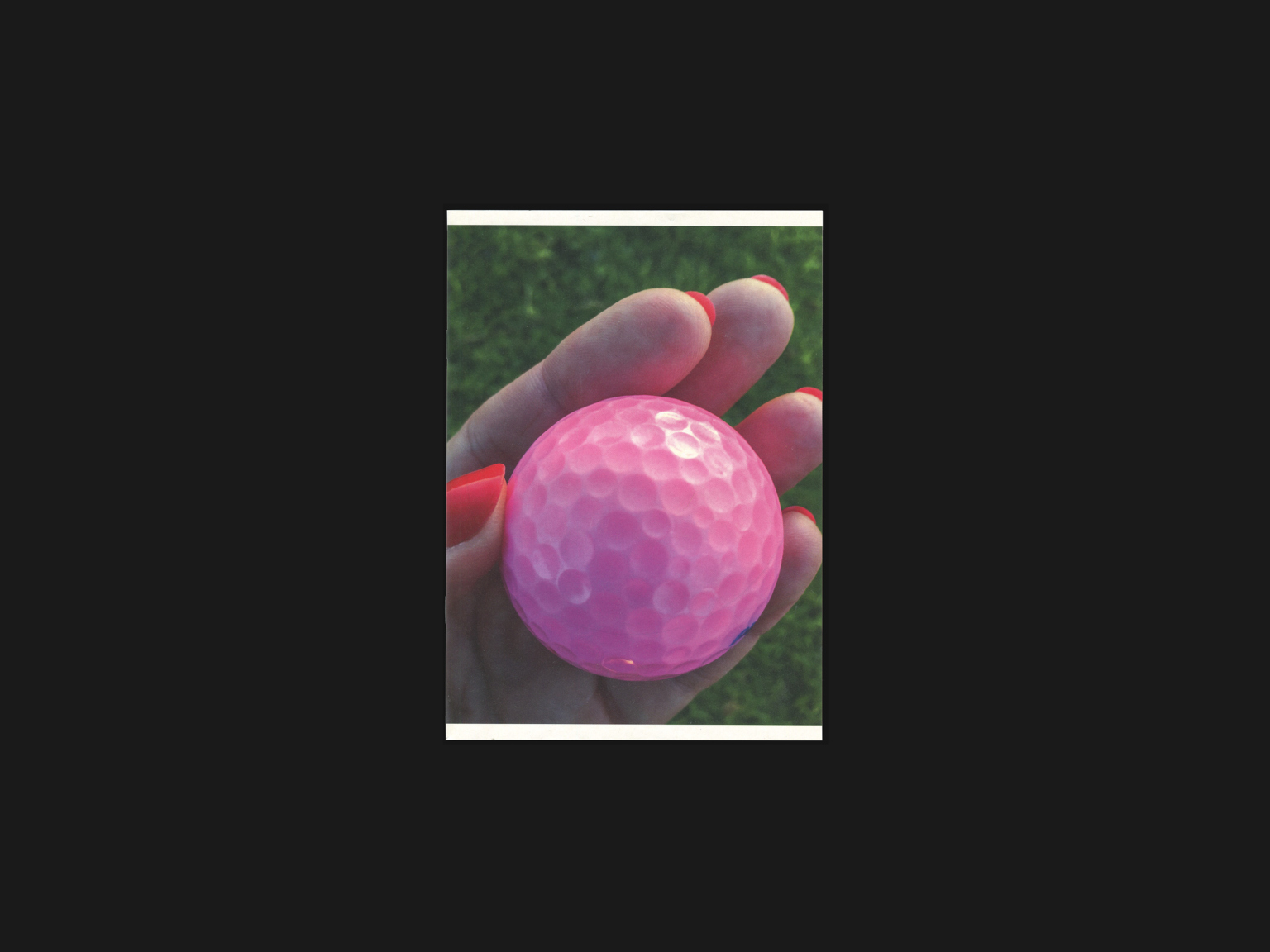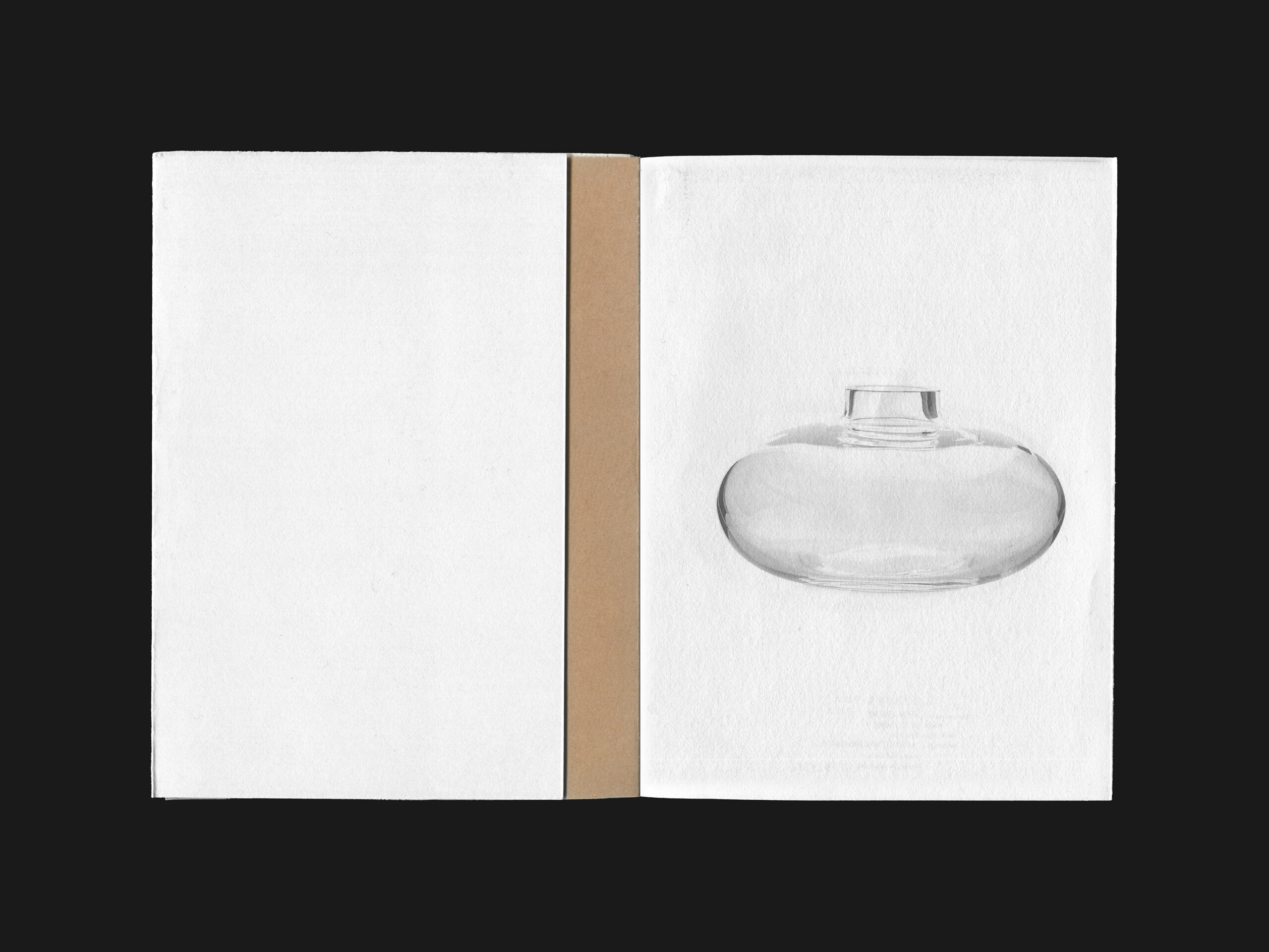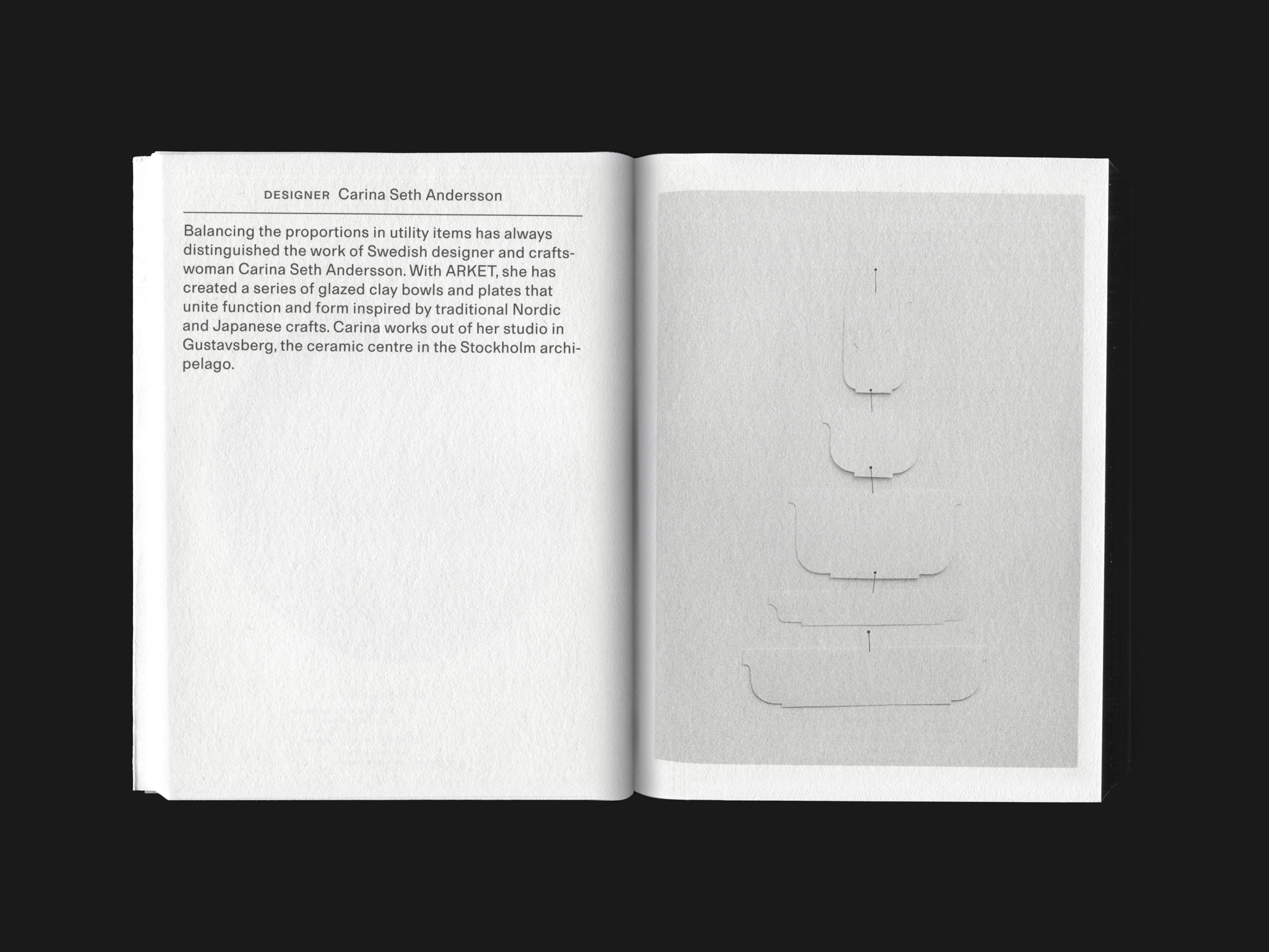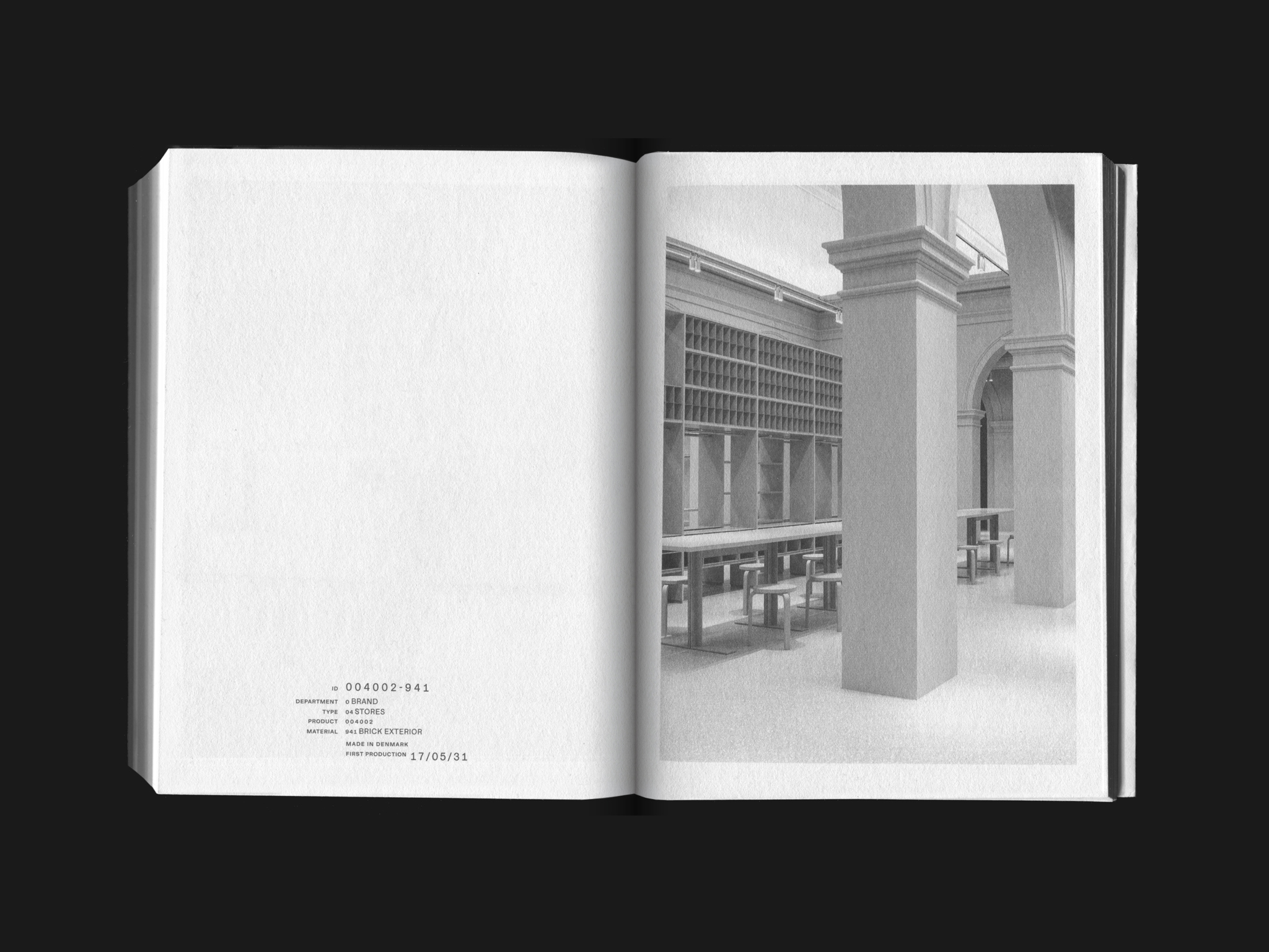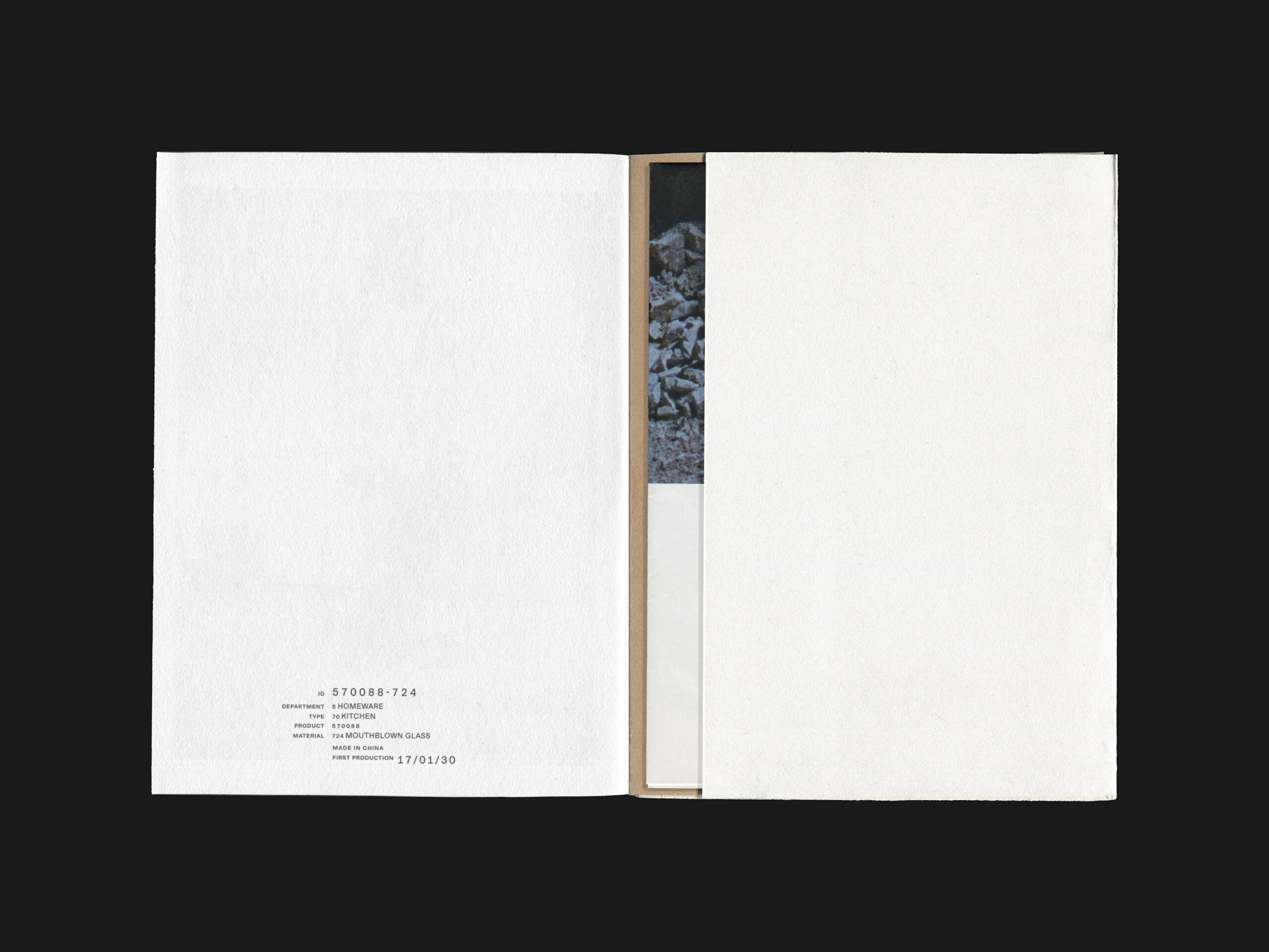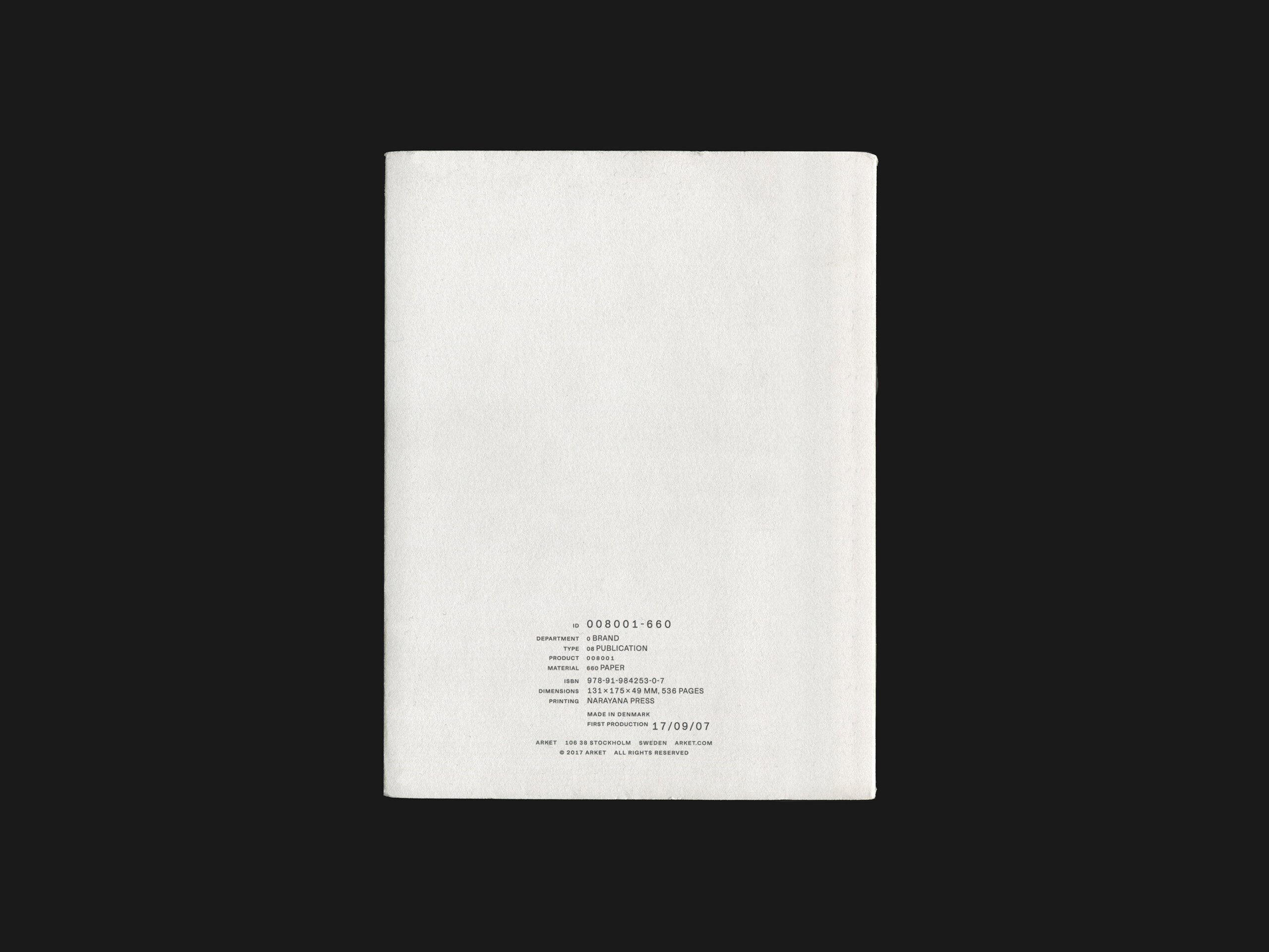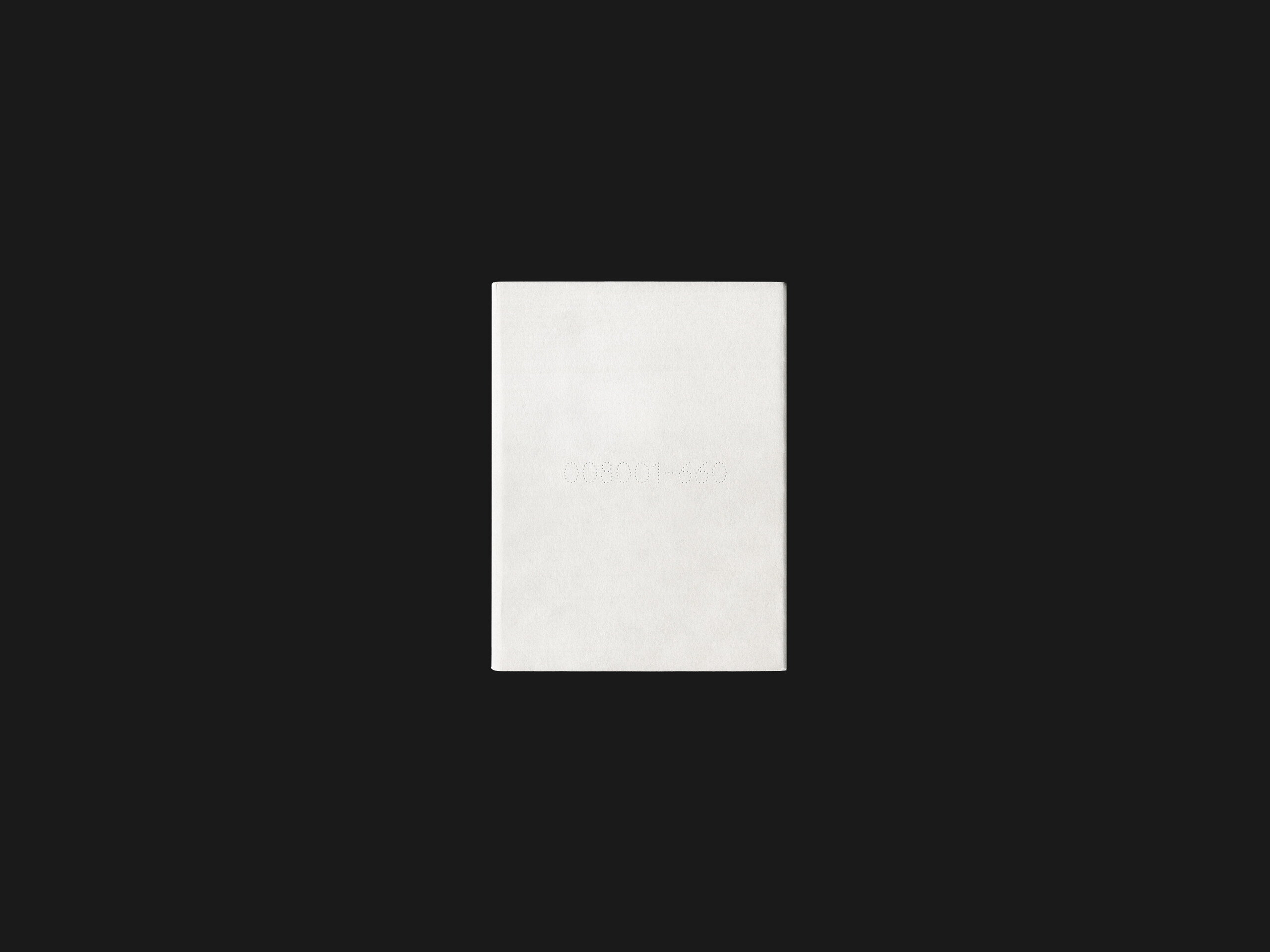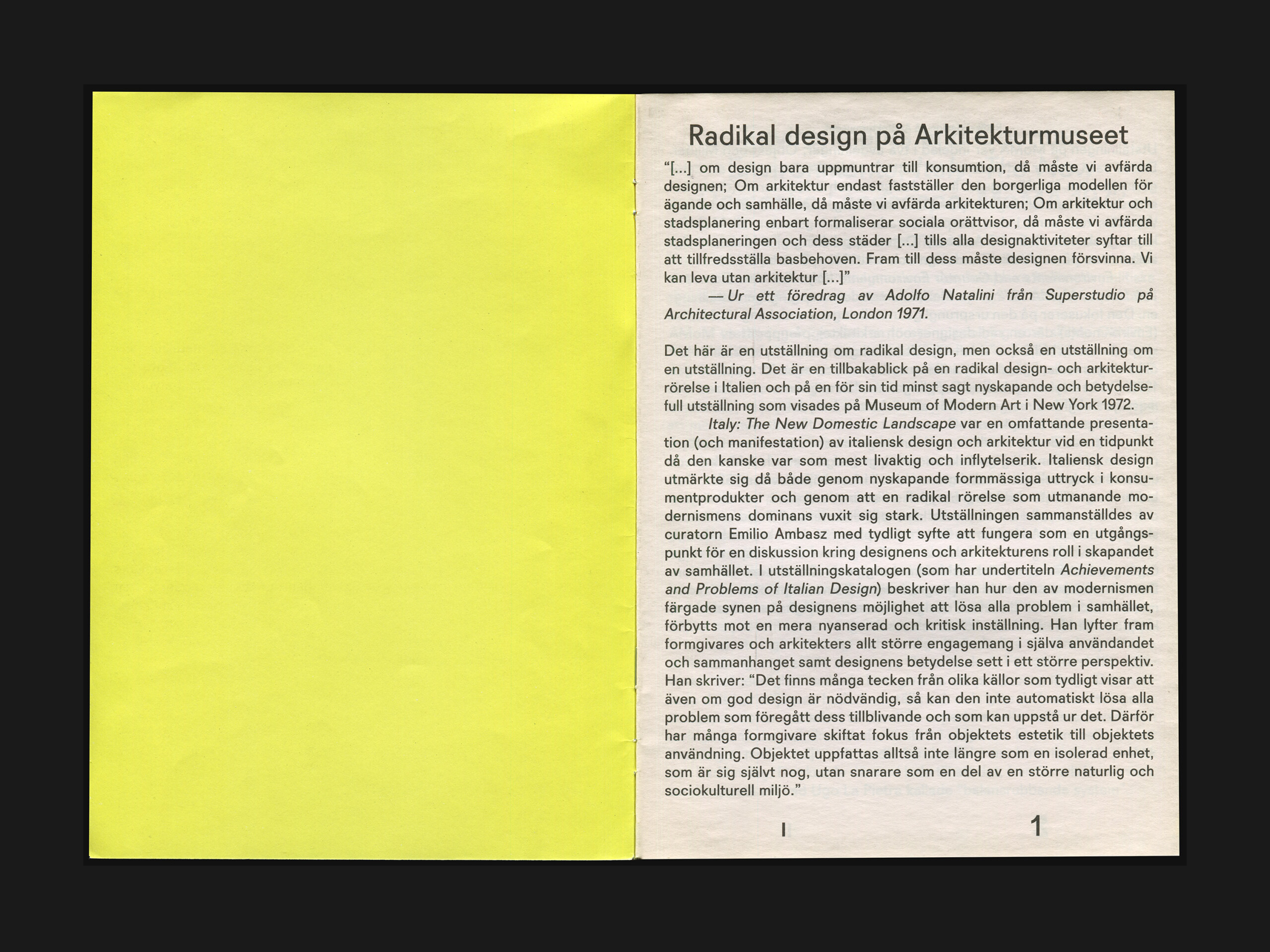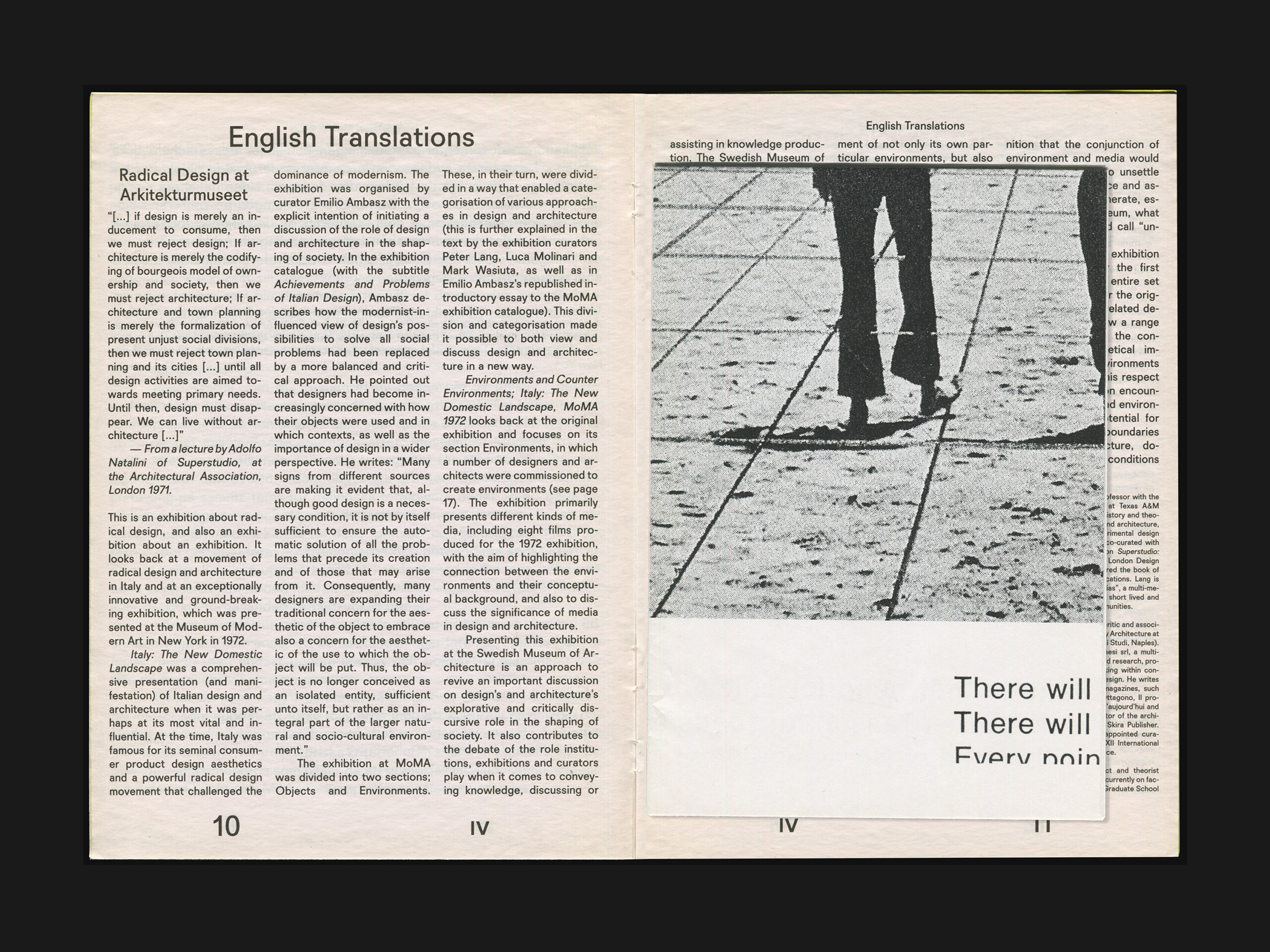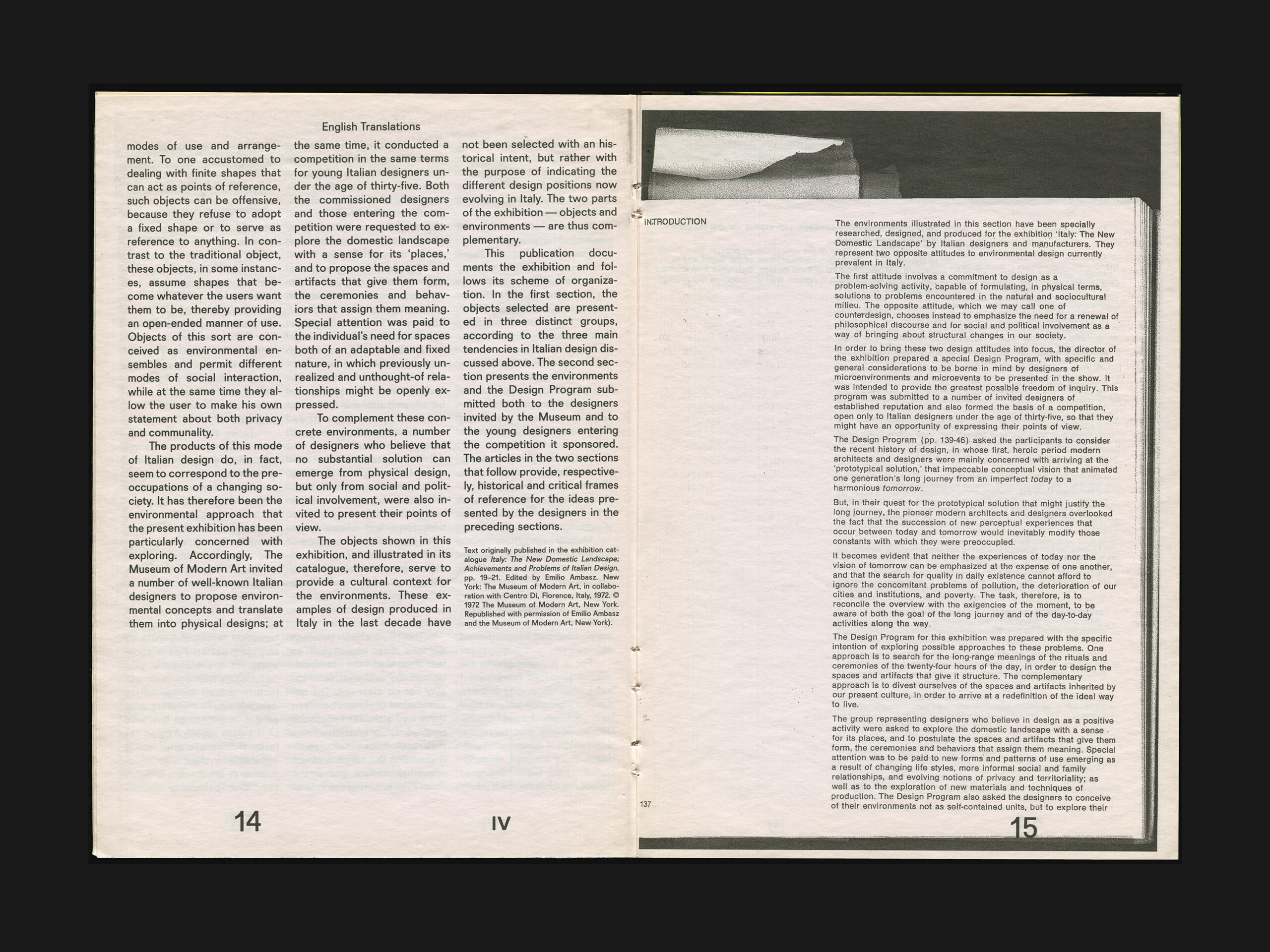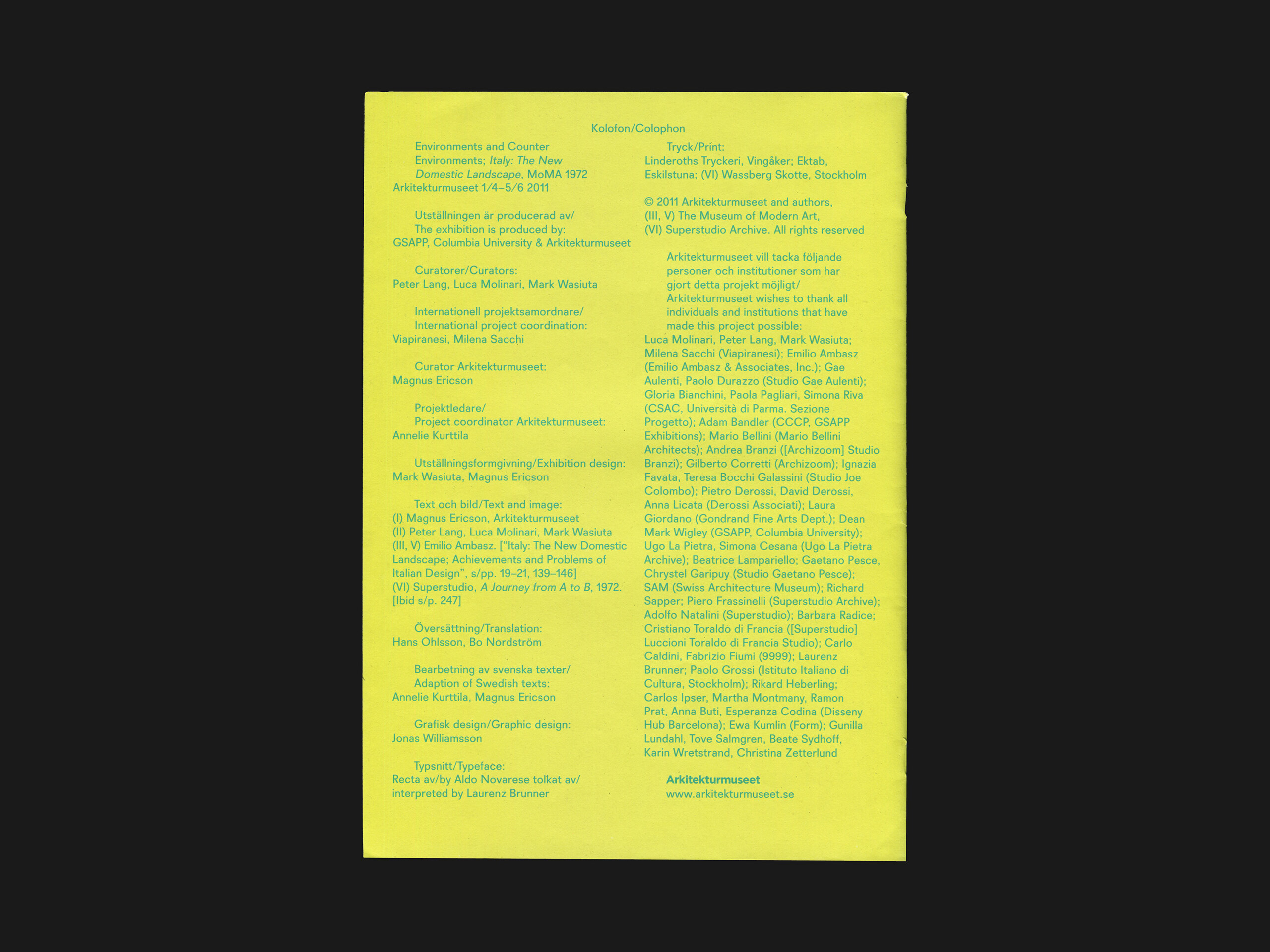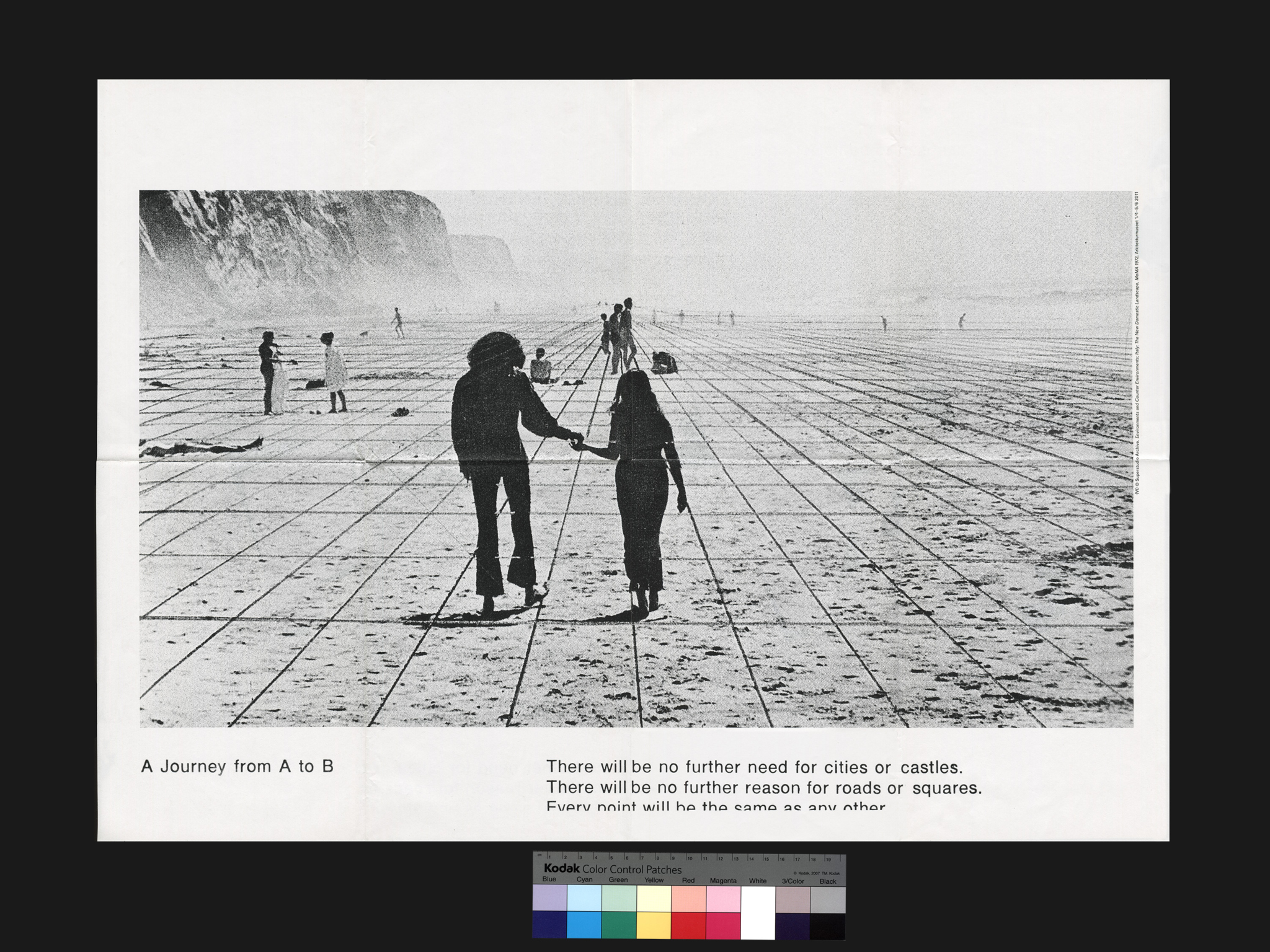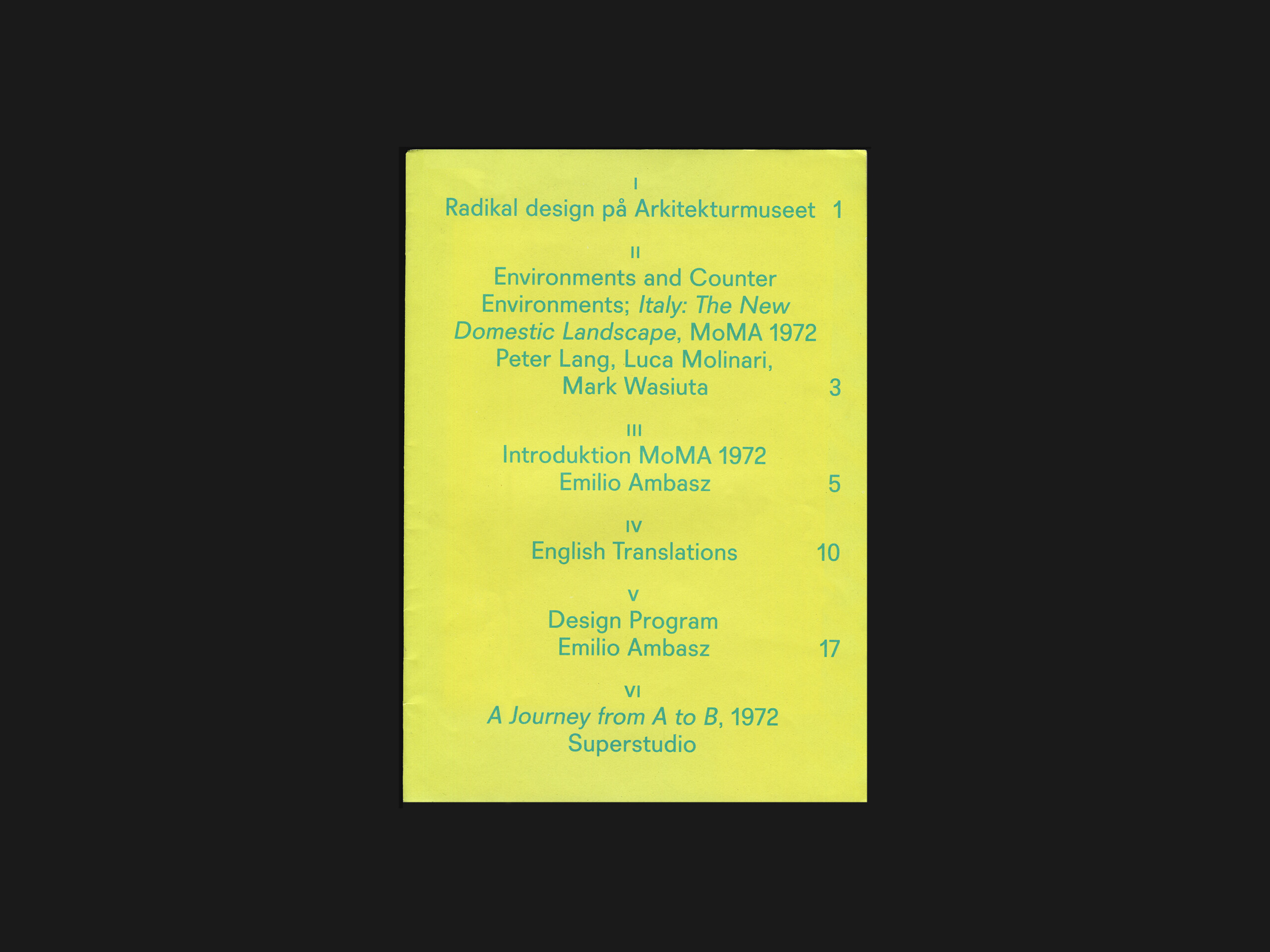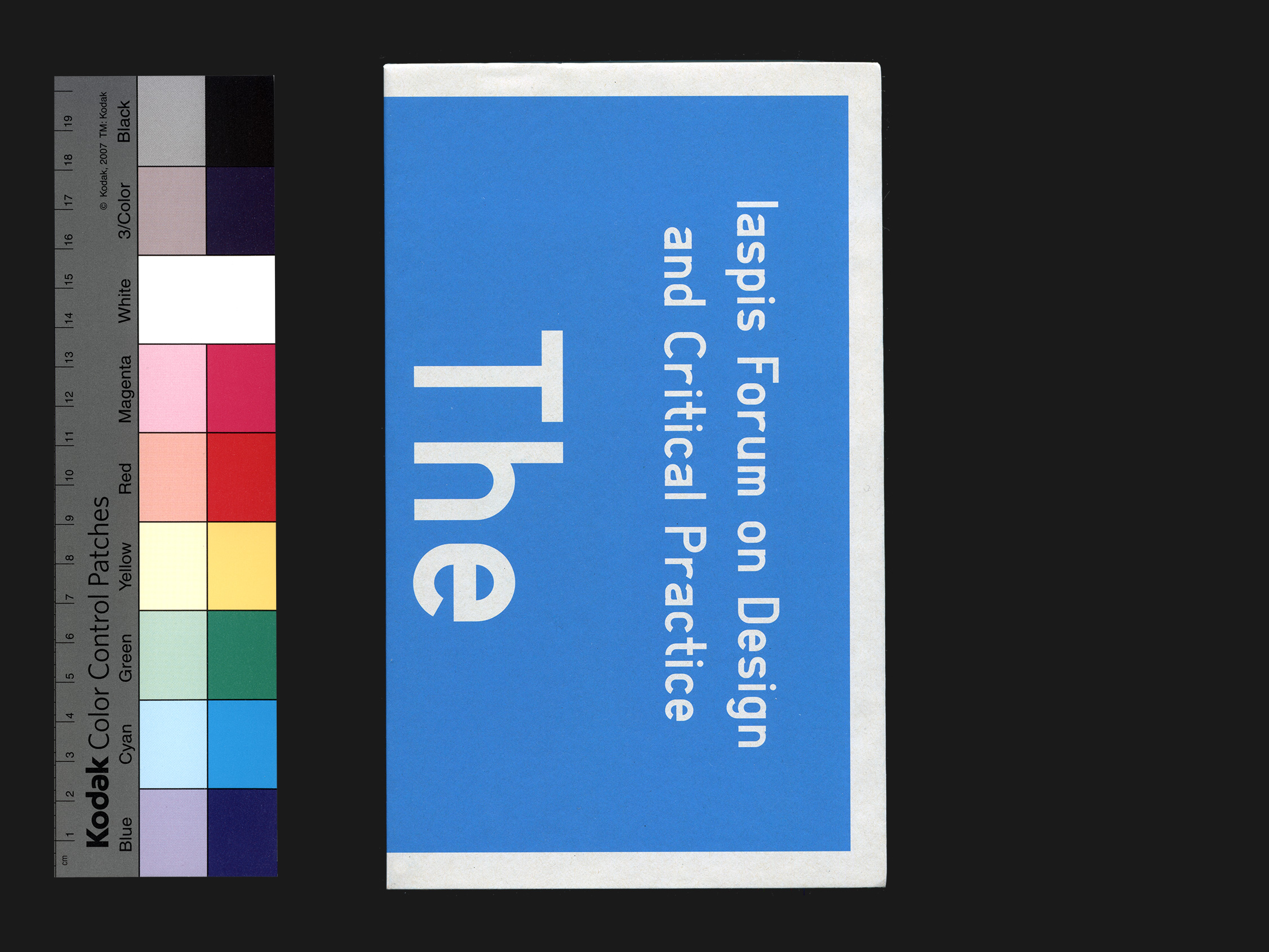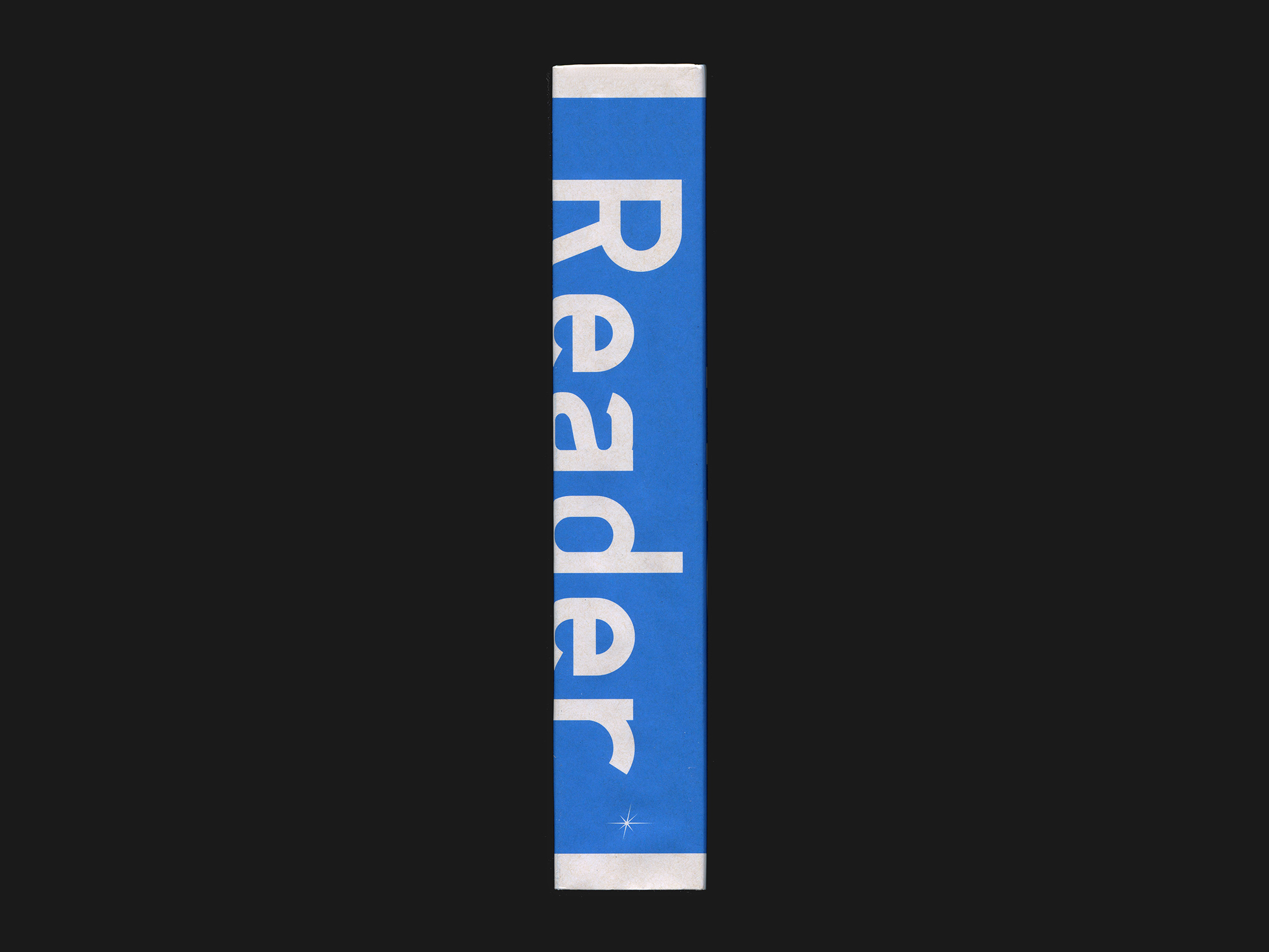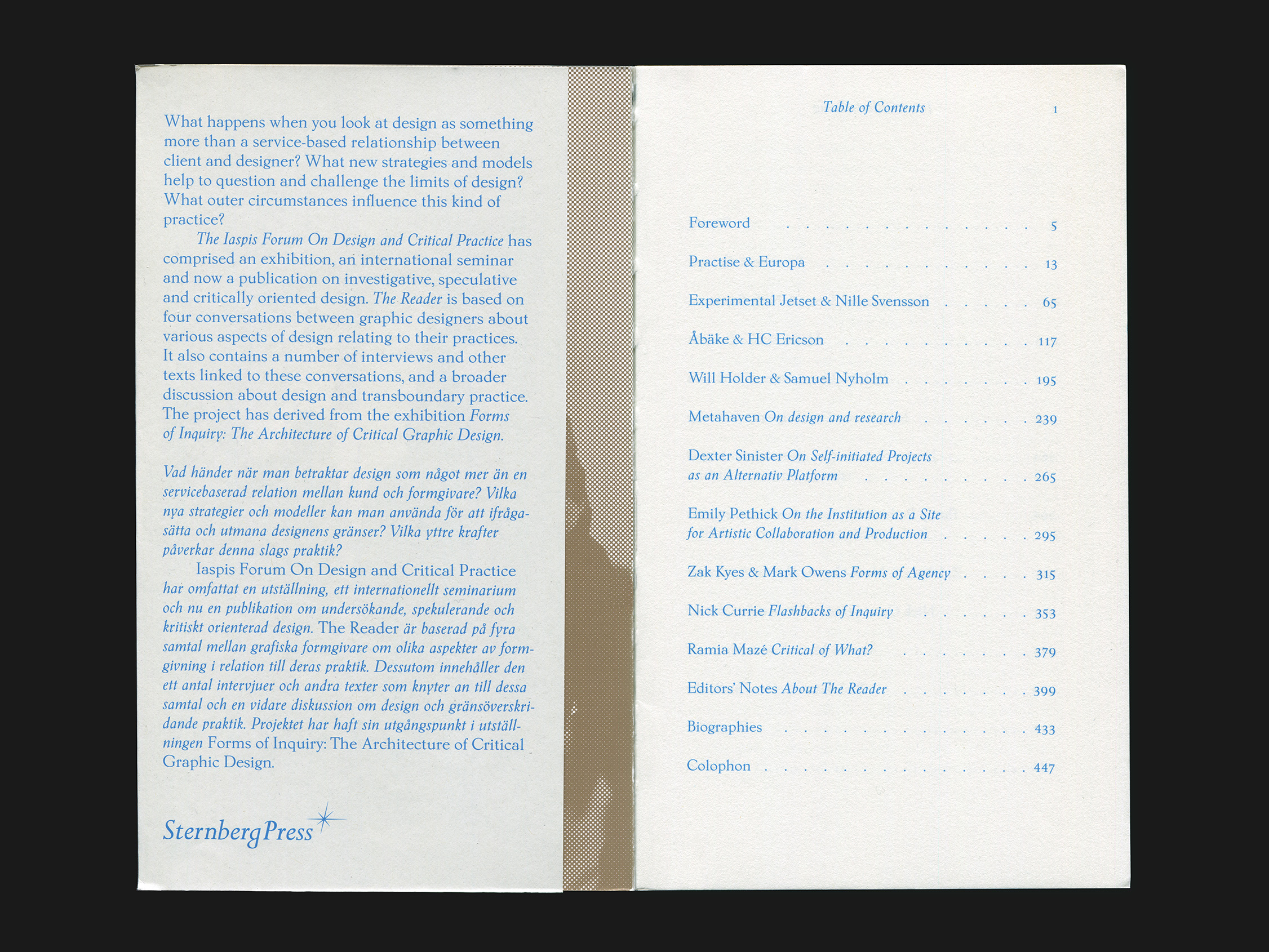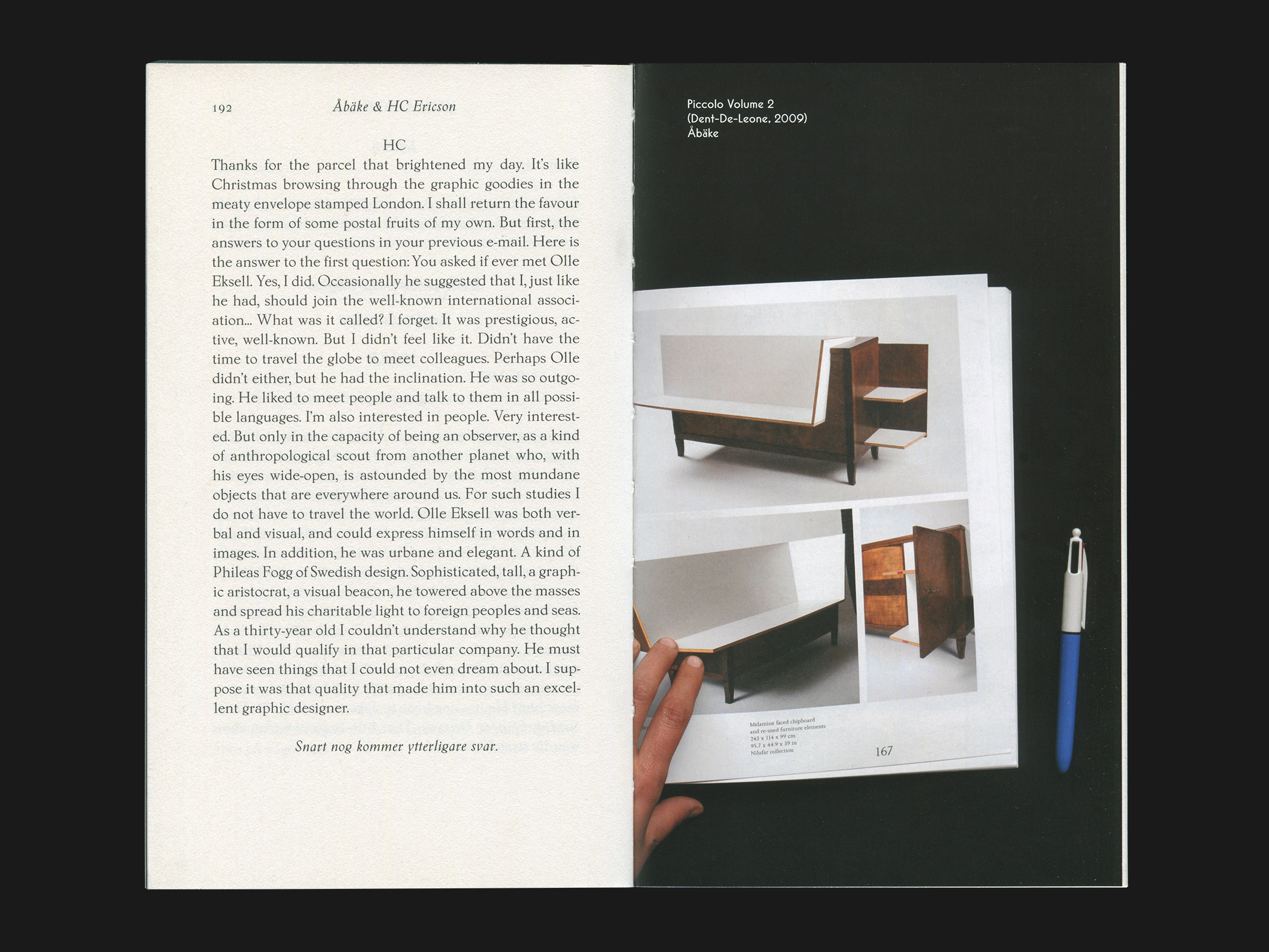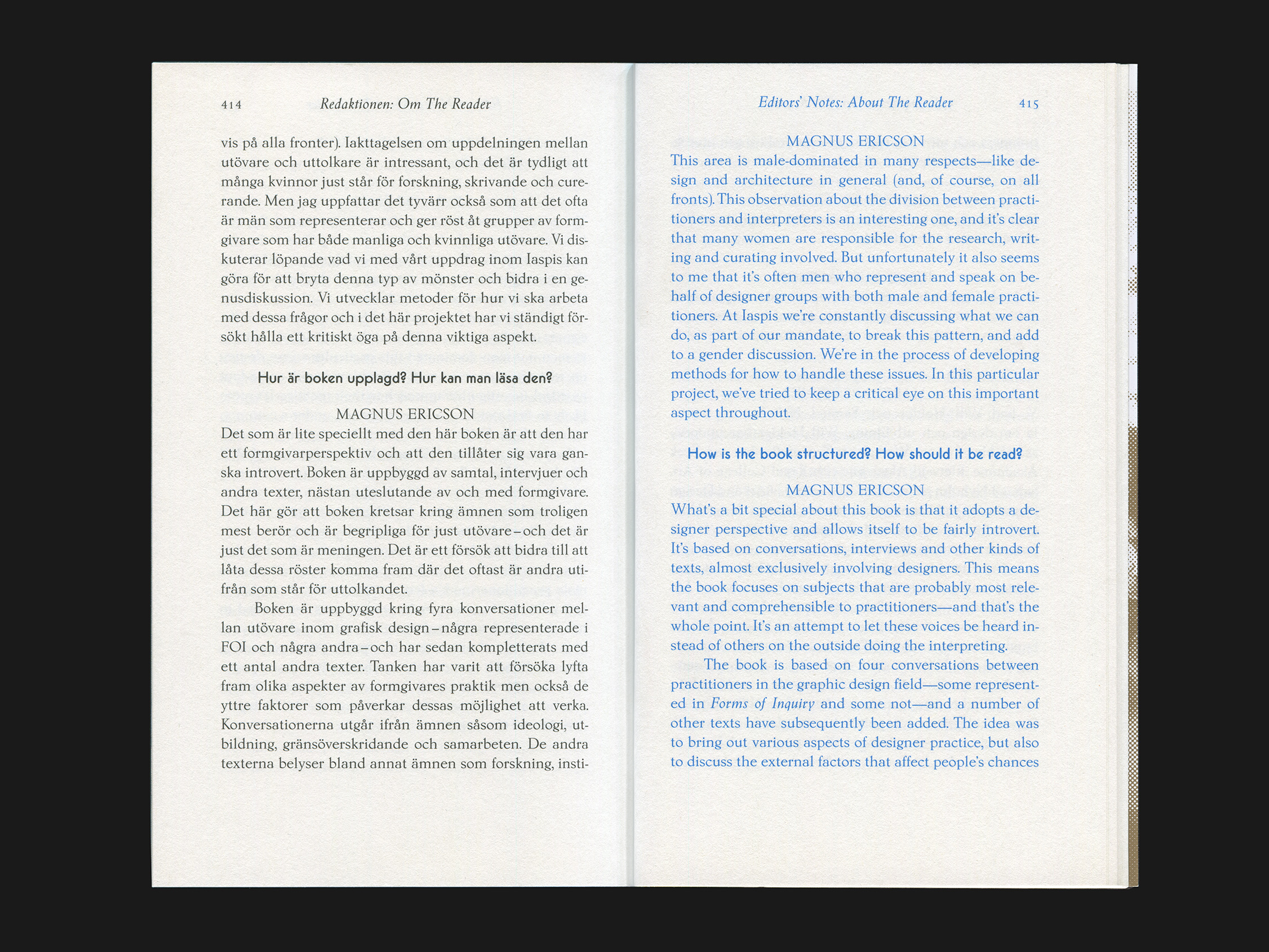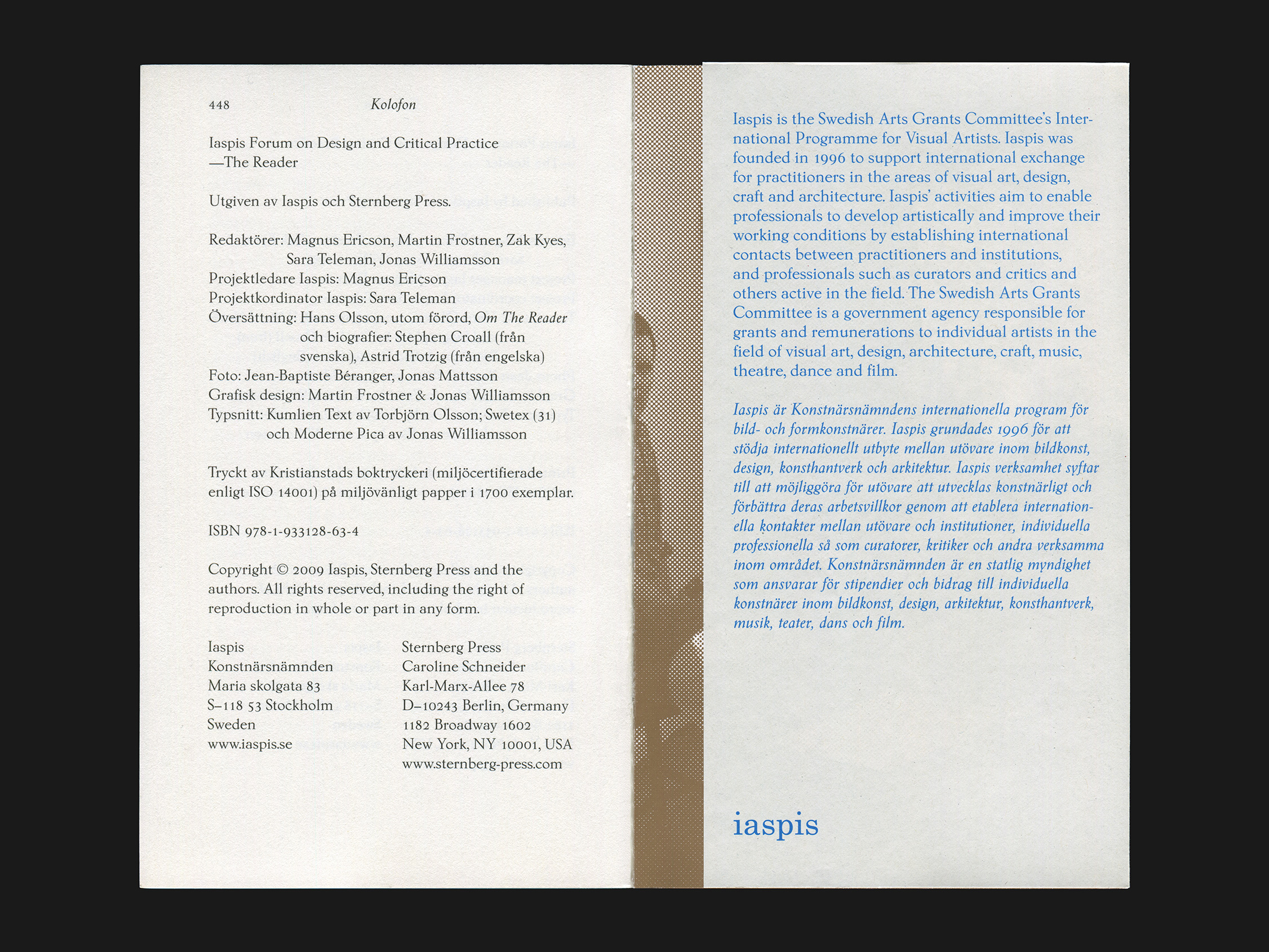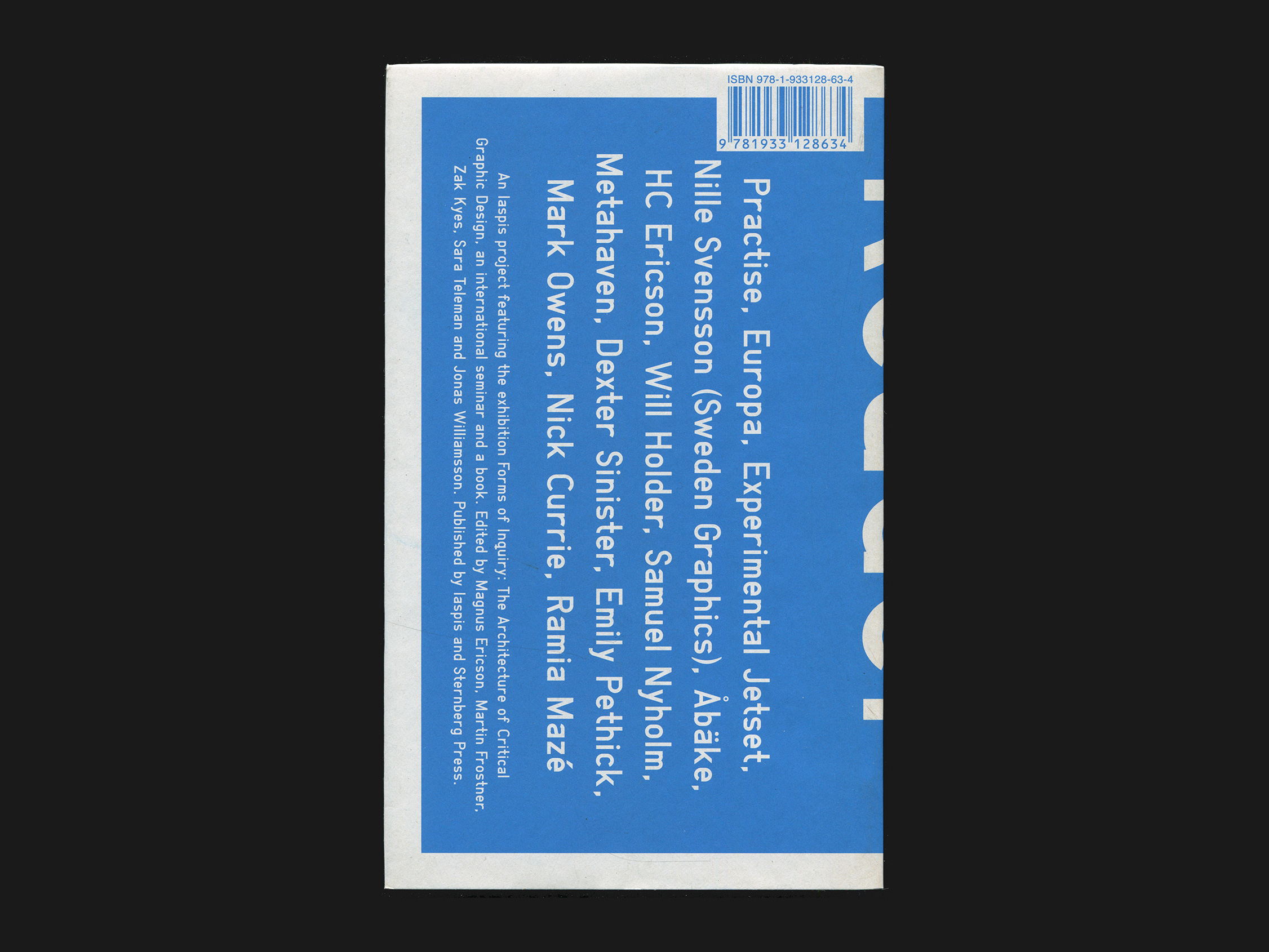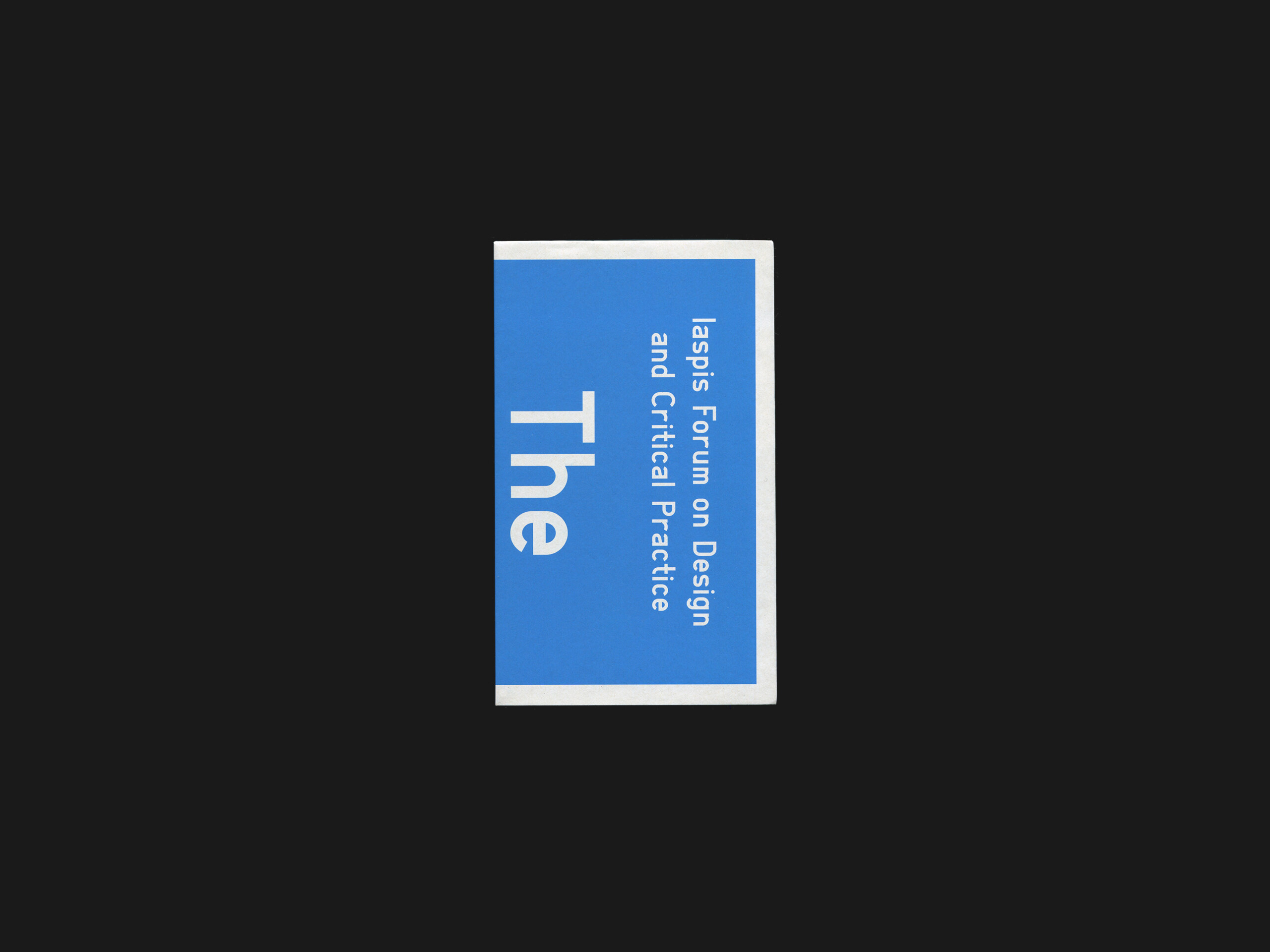About
Jonas Williamsson is a Swedish graphic designer living and working in Stockholm. In his practice he works mainly with artists, artist-initiated projects, art organizations and institutions, and with the editing and design of project-specific printed and digital publications, as well as all-encompassing graphic identities. He is interested in exploring what is within the project itself and conceptually staying with it—in finding and unpacking its inherent graphic design form—and turning it into systems that becomes images when placed in the framework of society.
In 1995 he drew the typeface BIFF which was released by Lineto (1999/2022). In 1999 he graduated from Konstfack and same year co-founded the graphic design and illustration studio Reala with classmate Samuel Nyholm and Swiss colleague Laurent Benner. Reala worked together until 2007, with among others Final Home, Vitra, Migros Kulturprozent and Edwin Jeans, developing their signature ping-pong aesthetics, while at the same time teaching and exhibiting in Sweden and abroad. Since 2008 Williamsson is running his own practice. He designed the graphic appearance for After Shopping, with Reala (2001); Konst2, with Reala and Andreas och Fredrika (2004); Tensta Konsthall, with Reala and Karl Holmqvist (2004); Iaspis Forum for Design and Critical Practice, with Martin Frostner (2009); MDT (2011); Kungl. Konsthögskolan, with Rikard Heberling (2020); and Dansehallerne (2021). He designed the book ’File Under: The Work / Björn Lövin’ (2019), edited with Peo Olsson and Katarina Sjögren, which was developed into the exhibition ’Björn Lövin—The Surrounding Reality’, curated by Matilda Olof-Ors, at Moderna Museet (2022).
He has been teaching at ECAL in Lausanne, Gerrit Rietveld Academie in Amsterdam, HDK Valand in Gothenburg, Hochschule für Kunst in Bremen, as well as other design and art schools. His work has been exhibited at The Design Museum in London, Museum für Gestaltung in Zurich, Sala de Arte Público Siqueiros in Mexico City and the International Biennale of Graphic Design in Brno, among other places. His work has been awarded by Stiftelsen för de Grafiska Yrkenas Främjande, Årets Bedste Bogarbejde/Forening for Boghåndværk, Kolla!/Svenska Tecknare, Svensk Bokkonst and The New York Art Directors Club.
Contact
Studio Jonas Williamsson
Folkskolegatan 22
117 35 Stockholm, Sweden
+46703240226
studio@jonaswilliamsson.se
Also on Instagram
Bonus Self-interview (2017)
Hi.
Hello.
Why are we doing this?
I had this idea of making a simple and comprehensive website presenting my work and that a short ending text might be suitable.
Who do you think will read this, with so many things stealing our attention?
I don’t know, maybe someone who found my name and thought ‘I would like to know more about this person, I would like to read an interview with him’. Maybe a future commissioner or and old one browsing their projects. Maybe a former class mate or a lost friend. It will most likely be someone who reads english, most people do. Well that’s not true, but at least more than understand Swedish.
Would you say understanding is important?
If you mean by this the curiosity of understanding how things could work, I think it is quite important, if not to say crucial.
Do you consider yourself clever?
It is a negative attitude in that question I thought we decided to not have in this interview.
Sorry.
It happens.
What did we decide about this interview?
We thought that it should be written simultaneously while listening to this lecture by Jan Ritsema, that the duration of it would form the basic frame of the interview.
Ok, can you tell us something about your background?
I grew up with a fascination for counter culture, but didn’t think of it like that. The society was safe and strong but at the same time claustrophobic. We were a group of people interested in different ways of resisting what we understood as a superficiality of the suggested way of life.
Can you tell us something about your work?
Lately, I’ve looked for a question that could function as a machine, like a self-generative force, at best, or a virus. Something that becomes itself, its everything, similar to what Ritsema speaks about. It becomes everything—all the things there are. But at the same time nothing—in favour to the notion of design, because by that it cannot fulfill the demands of the vague, but still, forces of power.
Is power important to you, in your work?
Design as taught in school is often about upholding a status quo in society. You learn a few things from the history, and what is to be considered good and bad, how things should be done. Not the why’s and what if’s. I’m interested in the mechanisms that shape society, that shape us, and the images and forms it creates. Focusing on aspects of power is good for reading both the history and current tendencies. Power is what makes things stable. Power is also oppression, limitations of life and opportunities.
Ritsema speaks about one versus the many, what is your idea about this?
I’ve worked with unity, oneness, which is as I see it in design very much a modernist mindset. A dealing with essences. The idea of one truth—like the empty monumentality of nature, or lack of life in a Morandi painting. I’m also interested in duality. The symmetry of dialectics. It seems this way of thinking is helpful in navigating complexity. That’s also why it’s malignant, with the formation of false dichotomy, when over-simplifying things. At the moment I’m into ‘more than two’. Five for example makes a nice group and forms a rotation…
Acctually the lecture is finished now, should we still continue?
Let’s continue later.
Thanks for your answers.
Thanks for reading.
